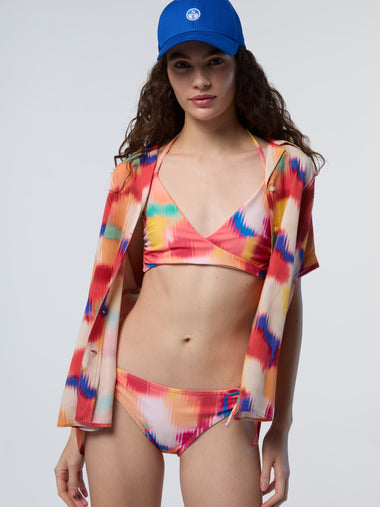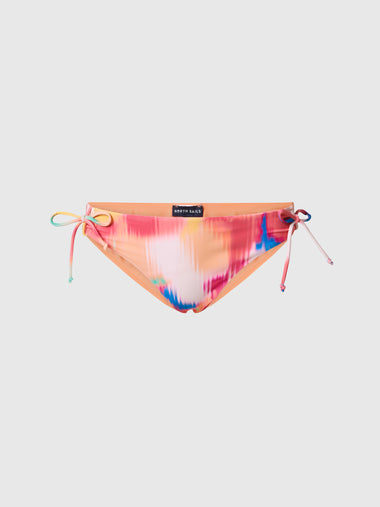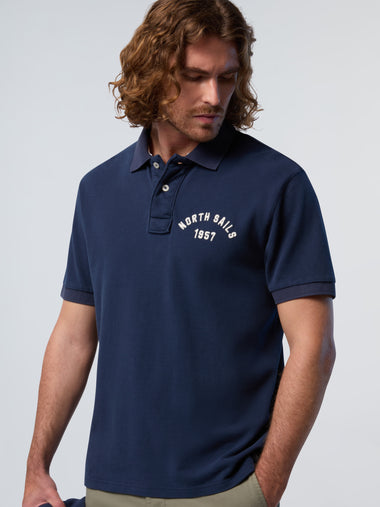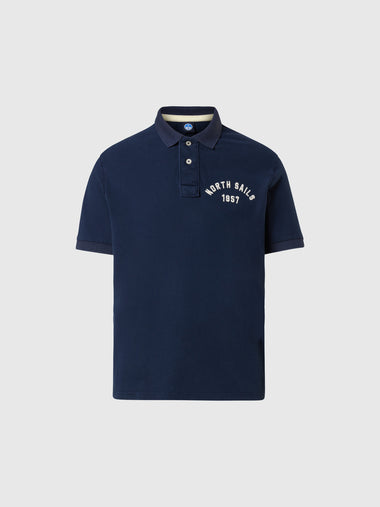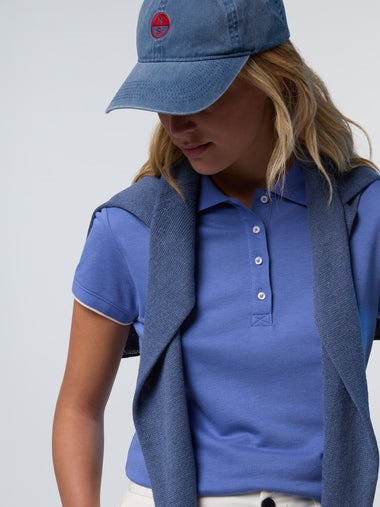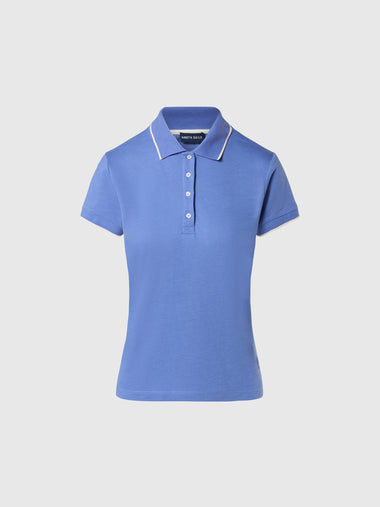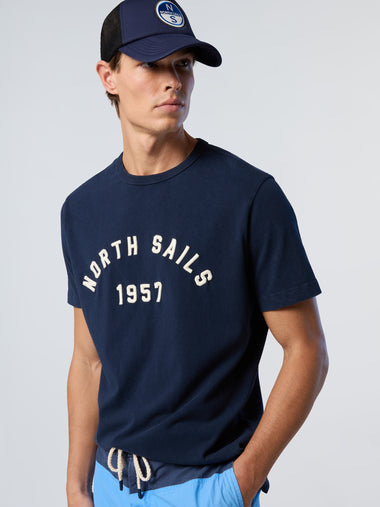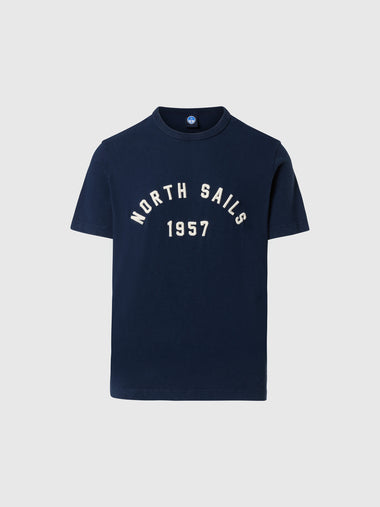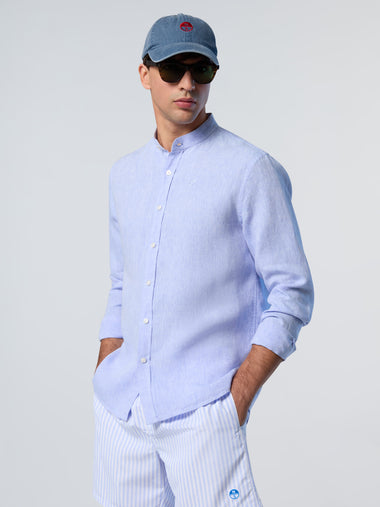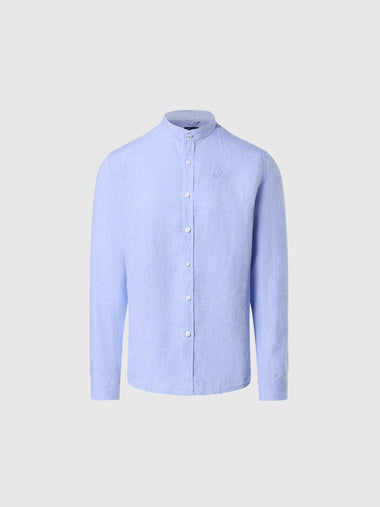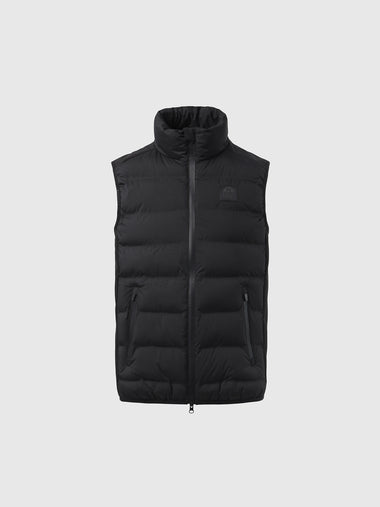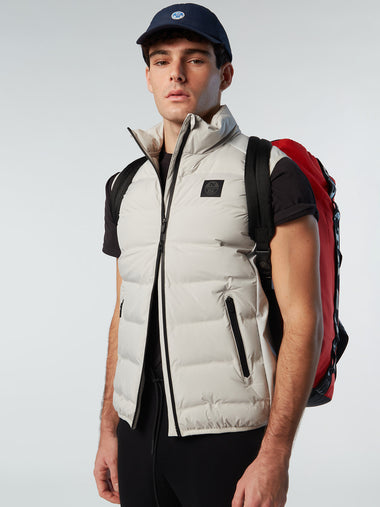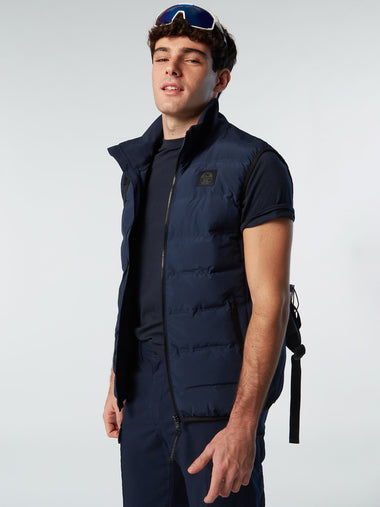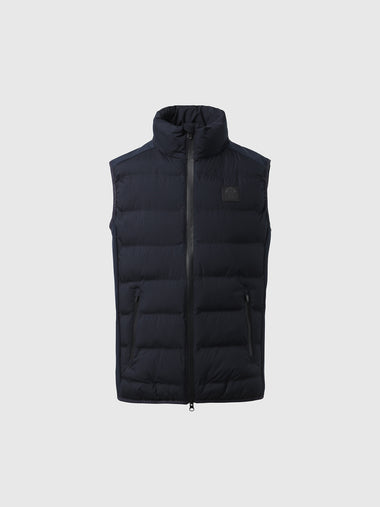NORTH SAILS BLOG
Tutto
Events
Guides
News
People
Podcast
Sustainability
Tech & Innovation
Travel & Adventure
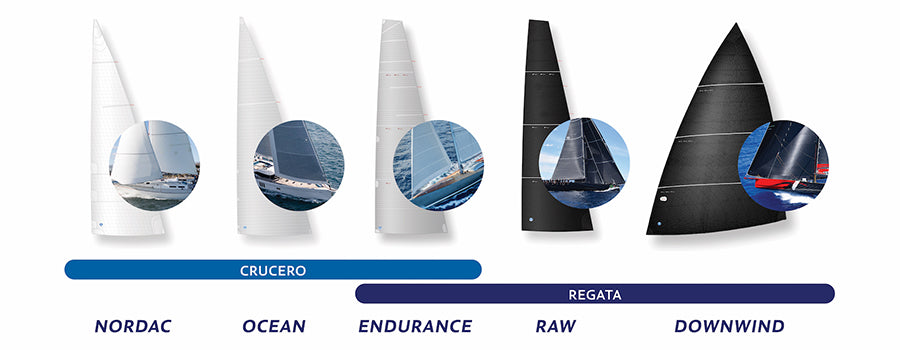
NUEVA GAMA 3Di
NUEVA GAMA 3Di
North Sails amplía su gama 3Di en 2019 con un catálogo optimizado.
El catálogo abarca desde pequeños monotipos hasta enormes superyates, desde cruceros hasta barcos oceánicos, desde velas para ganar regatas de club hasta modelos específicos para alta competición. Una gama más extensa y polivalente que nunca, y que incluirá interesantes novedades.
Desde su nacimiento hace ya una década, la tecnología 3Di no ha dejado de evolucionar, y hoy es posible aplicarla a prácticamente cualquier velero. En 2018, North Sails completó su salto desde las velas laminadas 3DL hasta las composite 3Di, que avanzan en 2019 para conformar un dosier dividido en cinco categorías: 3Di RAW, 3Di ENDURANCE, 3Di NORDAC, 3Di DOWNWIND y 3Di OCEAN, la última en incorporarse a la familia North Sails.
“De cara a 2019 refinamos un poco la gama 3Di para adaptarla a todo tipo de barcos”, explica Luis Martínez Doreste, director comercial de North Sails España. “Las novedades nos permiten cubrir todas las necesidades y usos de nuestros clientes, tanto de crucero como de competición. A quien busque un uso exclusivamente de crucero le ofrecemos las opciones 3Di ENDURANCE, OCEAN y NORDAC. También cubrimos todos los rangos para navegación en regata, empezando por la 3Di RAW 360 específica para mediana y pequeña eslora”.
3Di RAW: Competición
3Di RAW es la vela con mayores prestaciones y menor peso del mercado, un producto ideal para uso en competición. De cara a 2019, North Sails ofrece cinco versiones, incluyendo la nueva 360 (perfecta para regatistas de club con barcos de pequeña a mediana eslora), revisando la 760 (para barcos por encima de 40 pies) y optimizando la 880 (la vela de elección para circuitos como las 52 Super Series o los RC44). En función de las características de cada vela y el uso que se le vaya a dar, la gama 3Di RAW combina poliéster, Aramida, Ultra PE y carbono.
3Di ENDURANCE: Resistencia y durabilidad
La vela más resistente del catálogo 3Di está fabricada para ofrecer una durabilidad y conservación de forma excepcionales, tanto en competición como en crucero oceánico. La gama 3Di ENDURANCE posee cintas externas que protegen la vela del rozamiento y plegado a la vez que conservan la estabilidad de forma exclusiva del 3Di, una garantía de resistencia en todo tipo de condiciones. Está disponible en versiones 760 (Ultra PE y Aramida) y 780 (Ultra PE y carbono).
3Di NORDAC: Revolución
La primera vela 3Di fabricada 100% en poliéster ha revolucionado el mercado del crucero. Cumplido su primer año de comercialización, es hoy un producto totalmente consolidado merced a las más de 2.500 velas comercializadas en 2018 con excelentes críticas de los usuarios. De cara a 2019, North Sails incrementa la capacidad de producción de sus fábricas para responder a la demanda de este modelo diseñado para embarcaciones de pequeña y mediana eslora.
3Di DOWNWIND: Perfección en portantes
El gran número de beneficios asociados al 3Di alcanza más allá de los inventarios de navegación en ceñida y está disponible para navegantes en busca de velas asimétricas de última generación. “Es novedad la 3Di DOWNWIND 300, Código Cero de poliéster para un amplio rango de utilización, como los Clase 40”, explica Martínez Doreste. La 3Di DOWNWIND demostró su valor durante la pasada Volvo Ocean Race, en la que todas las velas, tanto de ceñida como de popa, eran 3Di.
3Di OCEAN: Novedad
Completando la oferta 3Di llega como novedad en 2019 la 3Di OCEAN, una vela específica para el nicho de los cruceros de gran eslora, caracterizada por una resistencia, ligereza y fiabilidad extraordinarias. Fabricada en UltraPE y Aramida, nace “orientada a barcos con esloras grandes de armadores que priorizan la durabilidad pero sin renunciar al rendimiento y las prestaciones de una 3Di”, explica Martínez Doreste.
READ MORE
READ MORE
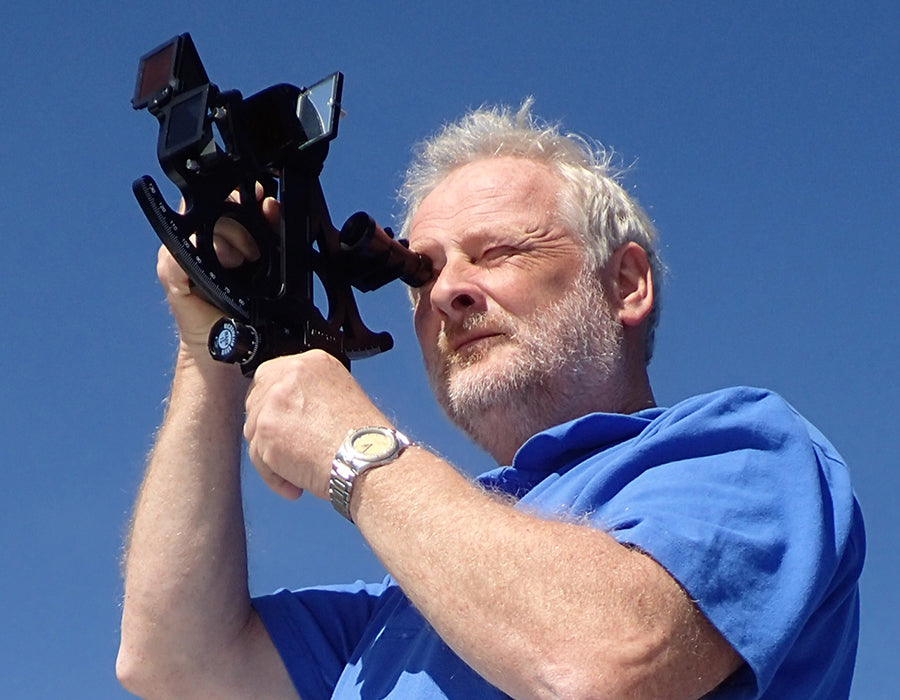
ARE WIIG FORTELLER SIN DRAMATISKE HISTORIE
Are Wiig forteller sin dramatiske historie
Are Wiig gikk rundt og mistet riggen da han lå på 3. plass i Golden Globe regattaen, soloseilasen jorden rundt.
Alt så lovende ut da han mistet selvstyringen etter en tre dagers storm i sør Atlanteren. Mens han holdt på å reparere utstyret gikk det galt og båten ble kastet rundt med store skader som resultat.
Are Wiigs foredrag fra den dramatiske hendelsen og det som skjedde før og etterpå kan du få med deg hos oss i Leangbukta mandag 19. november kl 1900. Først holder Are sitt foredrag, etterfulgt av en samtale mellom ham og Jon Amtrup som har fulgt seilasen og forberedelsene bedre enn noen annen.
Inngangsavgiften, kr 250, går uavkortet til foredragsholderen.
Påmelding her, betaling via VIPPS kr 250 til 96644.
READ MORE
READ MORE
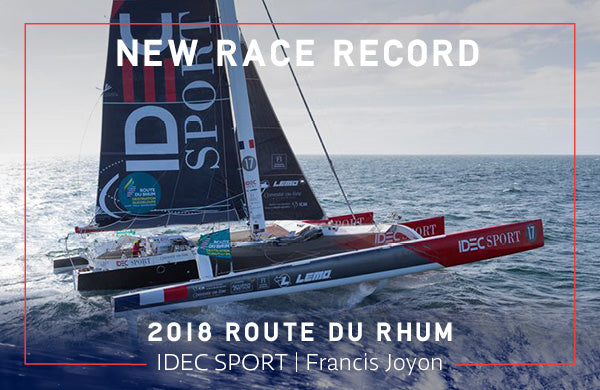
IDEC SPORT SETS A NEW RECORD
RECORD SPEED FOR IDEC SPORT
2018 Route du Rhum Completed In 7 Days, 14 Hours, 21 Minutes
📸 Jean-Marie Liot / Alea / IDEC
Francis Joyon has set a new race record and won the 2018 Route du Rhum, in what was the closest finish since the race began in 1978. The transatlantic race came down to the final moments with Joyon closing out François Gabart and the wounded Macif by a mere seven minutes and eight seconds.
This is the eighth Route du Rhum for Joyon, an offshore sailing veteran, who has set multiple speed records throughout his career. Joyon beats the previous Route du Rhum record set by Loïck Peyron in 2014 by just 46 minutes and 45 seconds. For an extra twist in the plot, Joyon was sailing an older generation Ultime, the same boat Peyron sailed in 2014 under the name Banque Populaire VII.
Bravo Francis! And the entire North Sails network joins your team in cheering #GoFrancis.
📸 Jean-Marie Liot / ALEA / IDEC
READ MORE
READ MORE
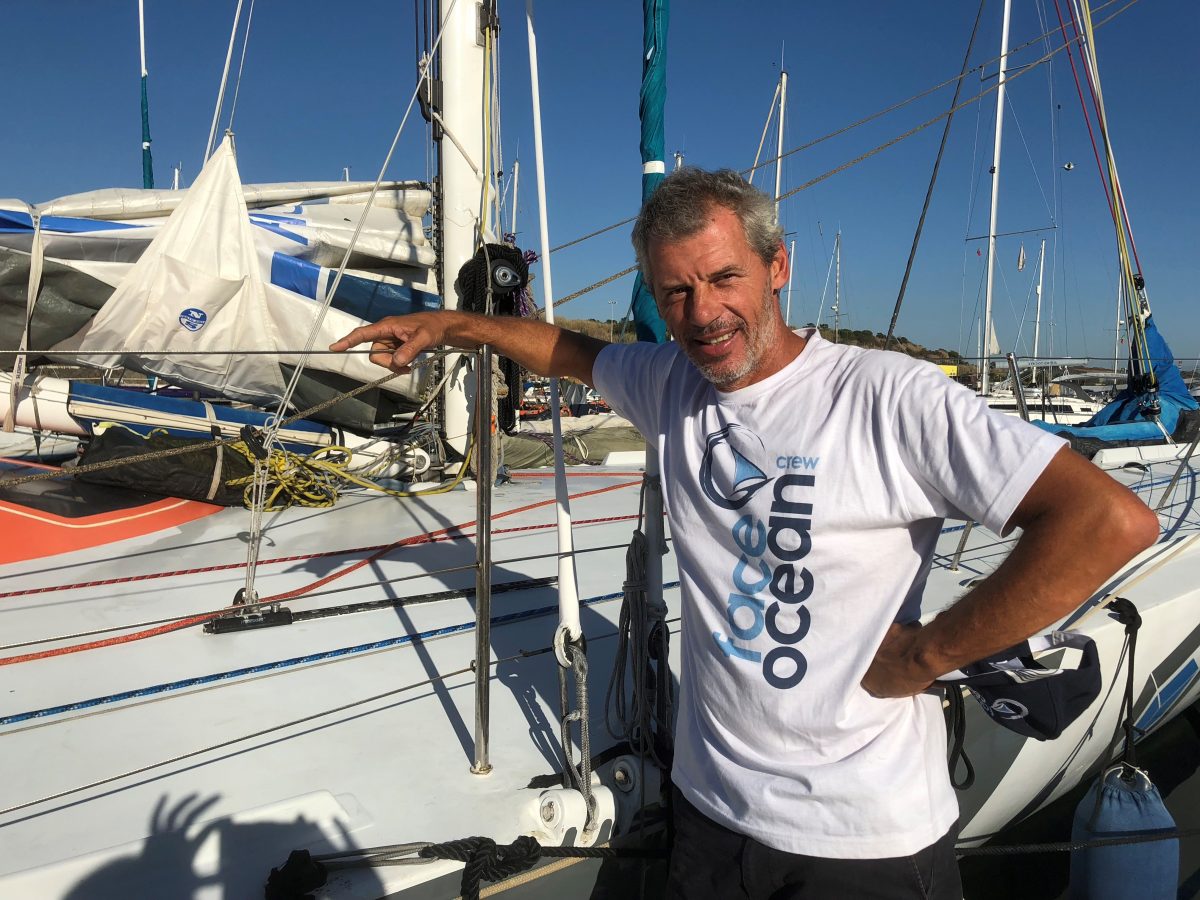
SÉBASTIEN DESTREMAU'S ALCATRAZ IT FACEOCEAN FOR ROUTE DU RHUM
Sébastien Destremau onboard Alcatraz IT FaceOcean for Route du Rhum
Long-time Client is in Battling For A Podium Position
As of Friday, November 10th 4:30pm EDT, Sébastien Destreamau, solo-skipper of Alcatraz IT FaceOcean is sitting in 2nd place in the RhumMono division, with 2849.6 miles to go. Keep an eye on his progress in the live Route du Rhum Race Tracker .
Tell us about your project Alcatraz IT FaceOcean.
The Alcatraz IT FaceOcean project is a continuation of my last Vendée Globe. Alcatraz IT were at the time, a short-term partner. After our success, the company’s management team decided to become the title sponsor of my boat in the 2018 Route du Rhum entered in the Rhum Mono Class.
The boat finished the last Vendée Globe in very good condition: we only needed to undertake a few maintenance and improvements works. Alcatraz IT FaceOcean is not a latest generation boat like Charal which is also equipped with North Sails. Alcatraz IT FaceOcean is therefore much simpler to sail and adapts very well to my offshore experience.
My budget does not match those of other boats but it allows me to complete races and follow my passion for sailing.
What changes did you make to the sails?
The sails are new. I am particularly pleased with the mainsail: thanks to the work of the North Sails team, we’ve increased the size by 15%, which amounts to 25m2: that gives us an enormous power boost! We also have a new gennaker, a new genoa…
We don’t use the latest generation sails because our boat is old. So no 3Di for me! The mainsail is an Ultra X 450, the J2 is Ultra X 350, the gennaker is Stormlite 210 and the spinnaker is Superkote 90.
North Sails not only creates products at the top end, but also creates sails for more restricted budgets. I can never thank North Sails enough for their help during the Vendée Globe: they found solutions so that I could make the start line in spite of my small budget. All in all, I don’t think there’s such a thing as a “small” client with North Sails! I have worked with them for 12 years now and I am very satisfied.
What’s your goal for the Route du Rhum?
First off, I hope to just finish without any major technical problems as this race can be very tough on the boats, as it is for the sailors… My team and I hope we can make the podium… and I wouldn’t say this to anyone but my personal goal is to win the Class.
What made you choose North Sails for the past 12 years?
In any sailing race when you’re crossing the Atlantic and you don’t know which route to choose, you just head West. When you don’t know what sail to buy, you go with North Sails: you will certainly not be disappointed.
READ MORE
READ MORE
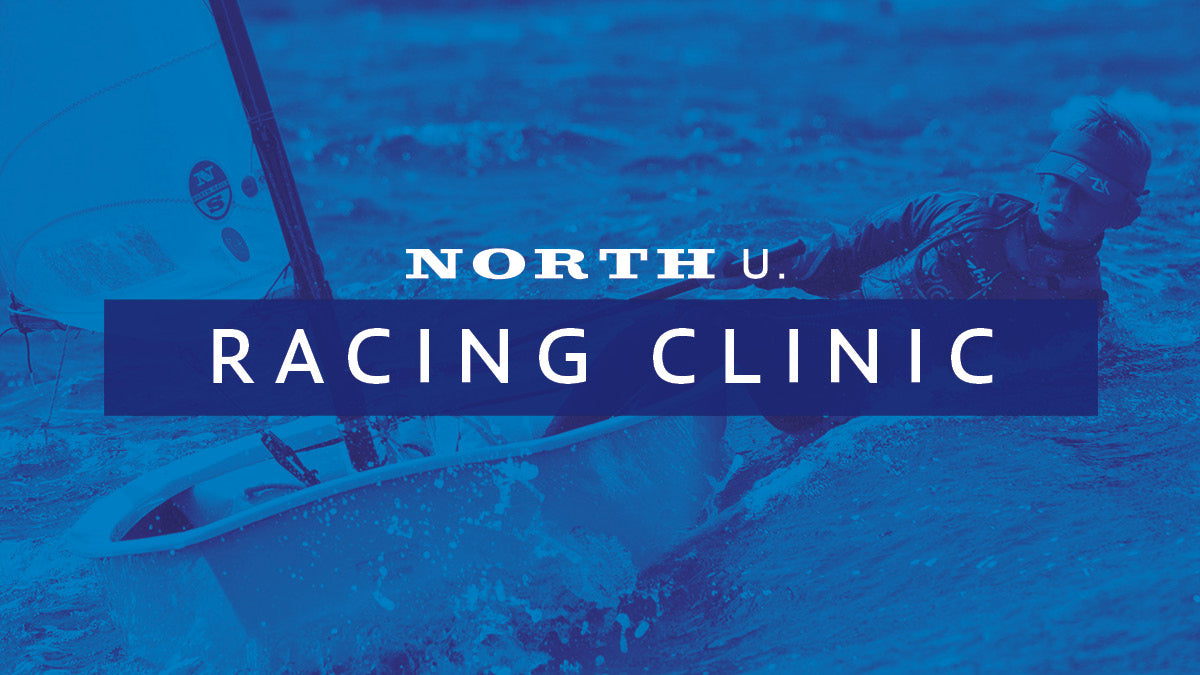
END-OF-YEAR OPTIMIST & LASER CLINIC
End-Of-Year Optimist & Laser Clinic
December 21-23, 2018 – Key Biscayne Yacht Club – Miami
Optimist RWB/Green & Laser Clinic
North Sails and Key Biscayne Yacht Club welcome Optimist and Laser sailors for a 3-full-day clinic in preparation for the Orange Bowl. Arrive a few days early to warm up, tune up and get your game on for the regatta. Hang out with old friends and make new ones!
SCHEDULE DAY 1 – December 21st:
8:30 – Check-In / Breakfast & Lunch to Go
10:00 – Rigged & Ready Time for all sailors
10:00 – 11:00 – Sail Set-Up Lecture & Rigging Tips
11:00 – 4:00 – On-the-Water Training / Sail Testing
4:00 – 4:45 – Debrief / GPS Tracking Analysis
5:00 – 6:00 – Lecture by North Sails Experts
SCHEDULE DAY 2 – December 22nd:
8:30 – Breakfast & Lunch to Go
10:00 – Rigged & Ready Time for all sailors
10:00 – 10:30 – Training Brief by North Sails Experts
10:30 – 4:00 – On-the-Water Training / Sail Testing
4:00 – 5:00 – Debrief / GPS Tracking Analysis
SCHEDULE DAY 3 – December 23rd:
8:30 – Breakfast & Lunch to Go
10:00 – Rigged & Ready Time for all sailors
10:00 – 11:30 – Boat Speed Lecture & Boathandling Technique
11:30 – 4:00 – On-the-Water Training / Sail Testing
4:00 – 4:45 – Debrief / GPS Tracking Analysis
5:00 Clinic Wrap Up followed by Awards
CLINIC INCLUDES:
On-the Water Sail Testing Sessions with GPS tracking
North Sails Seminar
Sail Set-Up and Advanced Tuning Techniques
North Sails Prizes
Breakfast & Lunch onsite
Optimist Clinic Lead Coach:
Juan Carlos Romero – North Sails Optimist Class Head Coach, KBYC Sailing Director, and US National Team Coach.
Laser Clinic Lead Coach:
Maru Urban – KBYC Coach
Guest Coaches:
Mauricio Galarce, Kristoffer Sarmiento, plus additional USNT coaches.
REGISTER TODAY!
For additional information contact:
Juan Carlos Romero | 410-212-5303 | juancarlos.romero@northsails.com
READ MORE
READ MORE
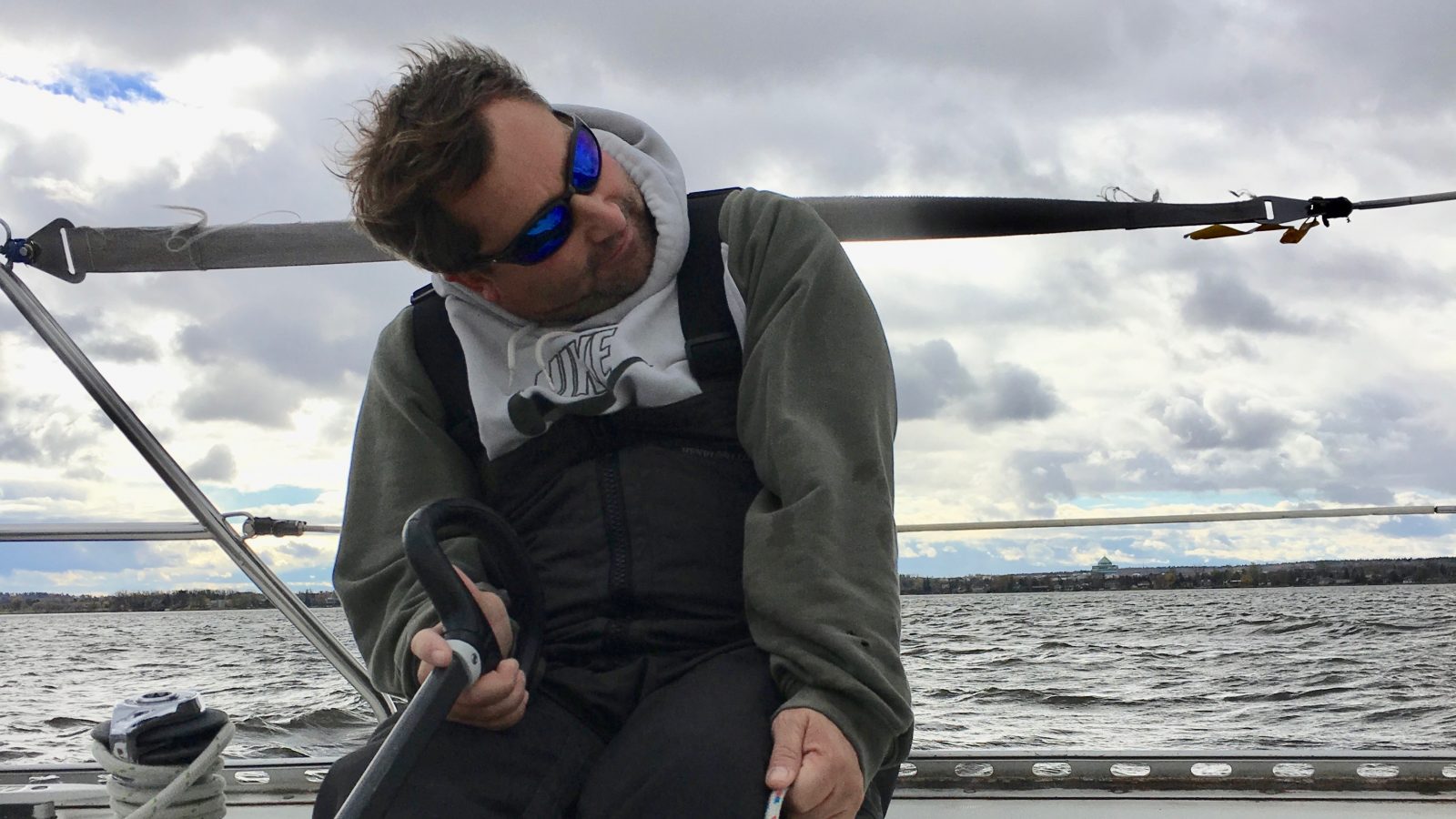
WHO WE ARE: DAVID FOY
WHO WE ARE: DAVID FOY
Get To Know Your Local Sales Expert
How long have you been sailing? What classes do you compete in?
I have sailed many different boats from an Optimist to a Tall Ship. I have been sailing my entire life. Rumour has it I was born in February and out on my parent’s boat in April.
What boats/classes do you sail?
I started racing in an Opti, but learned the most in an old International Cadet that my grandfather rebuilt for me. After that I moved into Laser 2 for a couple of years with my good friend before moving to keelboats. Starting in 2004 I had the luxury of sailing a Shark with my brother and friend. We raced that boat hard for 10 years; where we went on to claim 4 world championships. I now own and race a Beneteau First Class 10 in Ottawa that I actually sailed on when I was younger.
What got you into the marine industry?
I have always had a love of boats. Growing up I always wanted to sail and be around boats in general. At one point in grade school I had the idea of getting into boat design, constantly drawing boats instead of doing school work.
How long have you been working in the industry?
I started working on boats 25 yrs ago. Sometimes this was as paid crew and sometimes fixing boats.
What’s your favourite thing about sailing?
There are 2 parts to this for me. I would say the best thing about sailing is the freedom. Being able to get away from it all and just enjoy the wind and water. I also enjoy the camaraderie between competitors and the constant learning that sailing and racing brings.
READ MORE
READ MORE
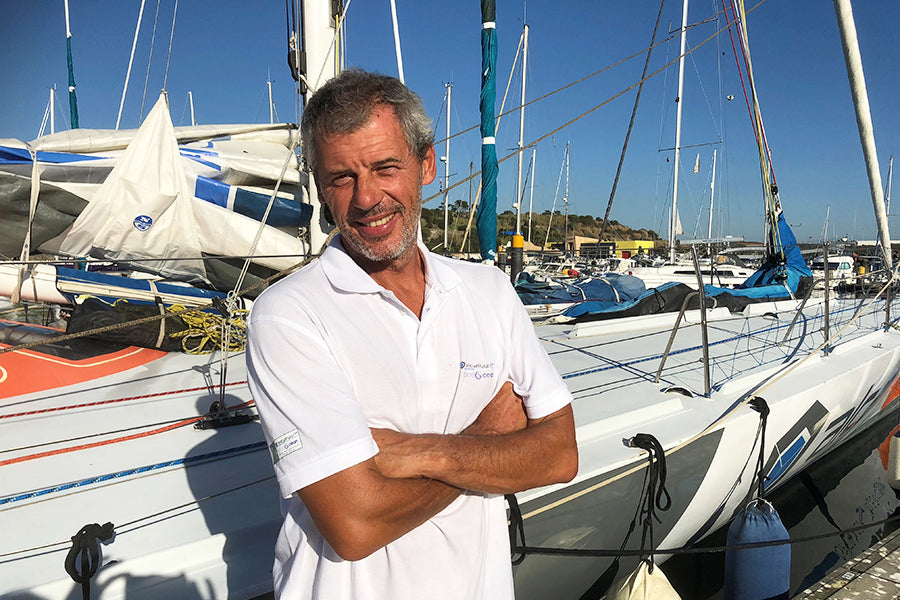
SÉBASTIEN DESTREMAU SUR LA ROUTE DU RHUM 2018 EN CLASSE RHUM MONO
SÉBASTIEN DESTREMAU SUR LA ROUTE DU RHUM 2018
Sébastien Destremau et son bateau Alcatraz IT FaceOcean sur la Route du Rhum 2018 en classe Rhum Mono
Sébastien Destremau
En quoi consiste ton projet Alcatraz IT - FaceOcean ?
Le projet Alcatraz IT - FaceOcean se situe dans la continuité de mon dernier Vendée-Globe. Alcatraz IT était à l’époque un partenaire intermédiaire. A la suite du succès du dernier Vendée-Globe, la direction de l’entreprise a décidé de devenir sponsor principal de mon bateau sur la Route du Rhum 2018 en classe Rhum Mono.
Le bateau a terminé le Vendée-Globe en très bon état : il a fallu effectuer juste quelques travaux d’entretien et d’amélioration. Alcatraz IT - FaceOcean n’est pas un voilier de dernière génération comme Charal qui lui aussi est équipé de voiles North Sails. Alcatraz IT - FaceOcean est bien plus simple à naviguer et s’adapte très bien à mes expériences maritimes.
Le budget est beaucoup moins important par rapport à celui des autres bateaux mais il me permet de terminer des régates et de poursuivre ma passion pour la navigation.
Quelles ont été les modifications effectuées au niveau des voiles ?
Les voiles sont neuves. Je suis particulièrement satisfait par la grand-voile : grâce au travail de l’équipe North Sails, on gagne 15% de la surface, c’est-à-dire 25m carrés : ce qui nous donne un surplus de puissance énorme ! Nous avons également un nouveau gennaker, un nouveau génois…
Quel type de voiles utilises-tu ?
Nous n’utilisons pas des voiles de nouvelle génération car notre bateau est ancien. Pas de 3Di pour moi donc ! La grand-voile est en Ultra X 450, le J2 en Ultra X 350, le gennaker en Stormlite 210 et le Spi en superkote 90.
North Sails s’occupe très bien de concevoir des produits haut de gamme et aussi des voiles pour des budgets plus restreints. Je ne remercierai jamais assez North Sails pour leur aide sur le Vendée- Globe : ils ont trouvé des solutions pour que je puisse m’aligner sur le départ malgré mon petit budget. Finalement il n’y a pas de 'petits' clients chez North Sails ! Cela fait 12 ans que je travaille avec eux et je suis très satisfait.
Quel est ton objectif sur cette édition de la Route du Rhum ?
Je souhaite déjà la terminer sans problèmes techniques majeurs car cette course peut-être très dure pour les bateaux, comme pour les hommes… Mon équipe et moi-même souhaitons faire un podium et… ne le dis à personne mais mon objectif personnel est de la gagner dans ma classe.
Pourquoi tu continues à choisir North Sails depuis 12 ans ?
Dans n’importe quelle course à la voile pour descendre l’Atlantique quand tu ne sais pas quelle route choisir, tu fais de l’ouest. Quand tu ne sais pas quelle voile acheter tu achètes North Sails : tu es sûr que tu ne seras pas déçu !
READ MORE
READ MORE
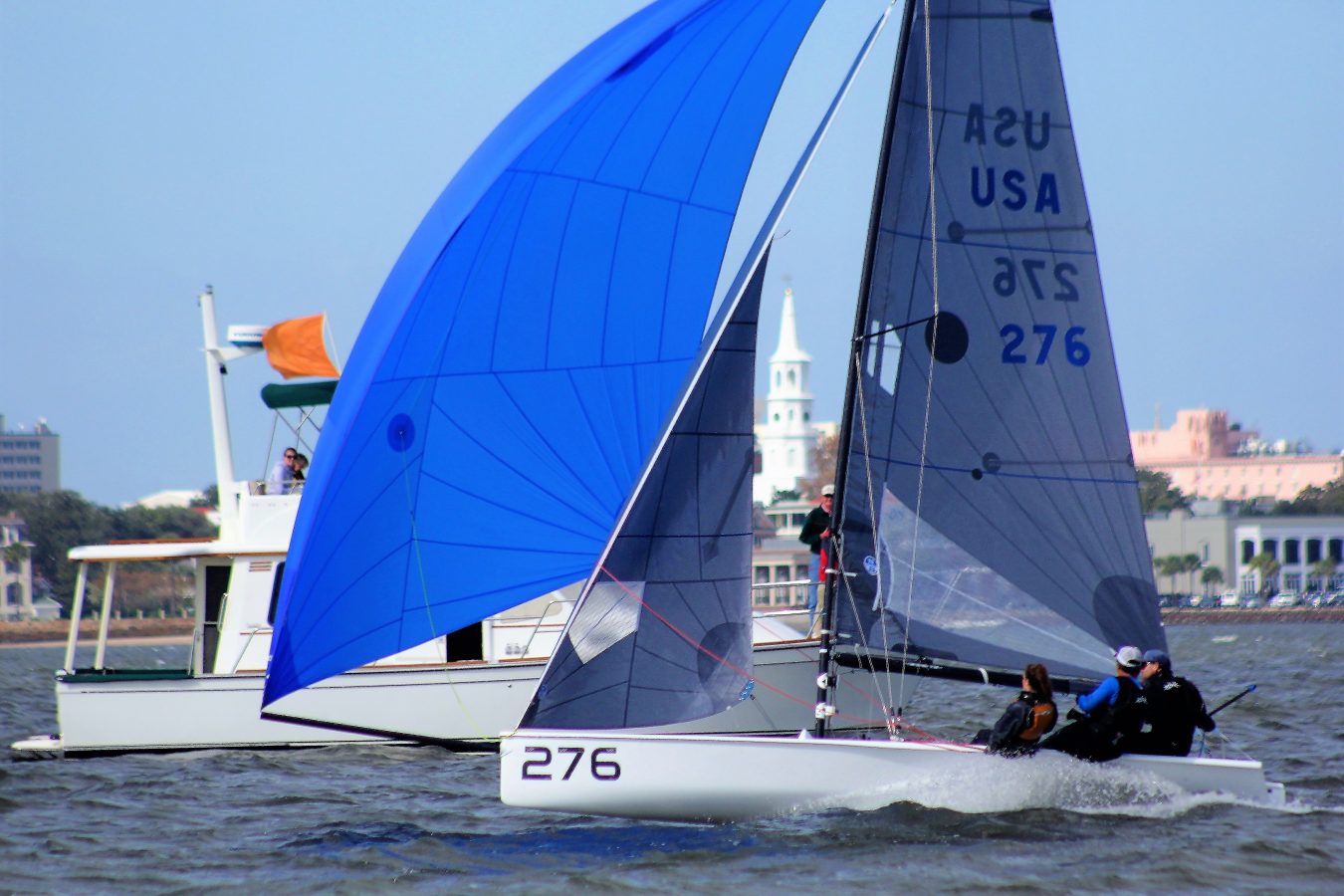
VX ONE NORTH AMERICANS: FAST, FUN & FIERCE
VX ONE NORTH AMERICANS: FAST, FUN & FIERCE
Interview: Making the VX One Go Fast
2018 North American Champions – Christopher Alexander, John Bowden and Caroline Main. © Priscilla Parker
Charleston delivered excellent VX One sailing conditions for the North American Championship the first weekend of November. Strong breeze, flat water, and of course a little bit of that Charleston current. The southern hospitality offered from the Carolina Yacht Club put an exclamation point on the event.
The VX One has been gaining traction as a class over the last few years, and this year’s North American Championship proved to be the deepest field of competitors yet. Racing was fast, fun, and fierce with boats reaching 20 knots of boat speed in the strongest puffs. The sheer fun had by sailing these boats might just outweigh the stiff competition.
We caught up with the winners of the event: Chris Alexander, John Bowden, and Caroline Main, as well as North Sails designer Mike Marshall and class president Jeff Eiber (sailing together, finishing 2nd) to learn what makes a VX One go fast and what the class is all about.
Interview by Jackson Benvenutti
John, this was your first regatta in the VX One. What was your basis for the winning rig tune? Any specific ratios between the uppers, lowers, and check stays?
I didn’t have a good idea of the ratios as first, and I was interested in working to help create a new tuning guide, so we were trying a few different things out (be on the lookout for that new tuning guide soon!). Most importantly, I was trying to induce headstay tension with the lowers and the vang.
A good way to think about it is that the boat is always either looking for power, or needing to de-power, which is fully controlled by headstay tension and de-powering the jib. De-powering the main was fairly easy, but de-powering the jib proved to be a little more complicated without affecting the mainsail shape.
There is always a debate in the VX One class about team weight and sailing with two or three people. Chris, your team sailed with three people. What was your total team weight and what are your thoughts about sailing with three people? Would you consider always sailing the boat at that weight, and with three people?
I am fairly small so I have sailed most big events with three. We were approximately 435 lb total and I believe that it was a very good all around weight for the regatta and the varying conditions we saw. I would say we were perfect weight on day one (10-16 knots), about 40-60 heavy on day two (6-12 knots), and 40-60 light on day three (15-20 knots).
Sailing with three can get a little crowded but you have an extra set of eyes and hands. Caroline did a great job of expediting tuning adjustments at mark roundings, trimming jib downwind, and moving weight where it was needed.
2nd Place – Mike Marshall, Jeff Eiber and Jo Ann Fisher. © Priscilla Parker
Chris, you’ve been sailing the VX One for a few years now, this was John’s first regatta ever in the boat and Mike’s second regatta in the VX. Can each of you speak a little bit about your experiences with the boat and the class?
Chris – This was my fifth North Americans and I have had an absolute blast owning this boat. The design of the boat is superb—the construction of hull, rig, and sails are of robustness and high quality—and the people of the class have become family. It’s a hard sell to get me to sail other boats now, because this one is just so good!
John – The boat is great, super responsive, it can change gears quickly and is fun to sail. I’m looking forward to seeing how the class develops and grows.
Mike – So far, I have spent 5 days in the boat and frankly, I have loved every minute of it. The boat is a blast to sail both upwind and downwind and I look forward to seeing more people start sailing them. The class is still in its beginning stages, but the key points about everyone having fun while keeping the racing at a very high level are there. As I have said in the past, the boats reward people that sail them flat and fast, so the sooner that you can achieve that mode, the better you are going to do in the race.
It isn’t very often that you find a boat that makes you come off the water grinning ear to ear about how fun the sailing was. I don’t think I will ever forget ripping downwind in the last race right next to Chris’ boat thinking about how awesome the boat was and how great that photo opportunity was for the class!
Chris, this is your second time winning the NAs, can you tell us two main things that are particular to the VX One, both upwind and downwind, that you focus on to make sure your VX One is sailing fast?
The times in the past where I haven’t felt fast have been due to rig tune or weight. These boats have a flat bottom and little rocker, which makes them accelerate quickly and be weight sensitive. Tuning to your weight, and how the boat feels that day becomes very important. I had very little experience with the technical rigging aspects of what makes a sport boat like the VX One go fast when I bought the boat, but have been enjoying the learning process.
UPWIND – Caps and Intermediate shrouds are the ‘gross’ rig adjustments and should be VERY high on the mental priority list pre-start since they can not be adjusted after. After the start we made constant adjustments to vang and main sheet, and very little movement on the jib. John was trimming the main and would tell me if we were fully trimmed or eased, and I would relay back how much vang tension, from 0-100%.
John was relentless on playing the main and focusing on how much power we were putting into the boat. My hand never left the vang line, and would adjust on nearly every puff. John probably made 1-4 adjustments on the jib halyard each windward leg was well. The short fetch caused such puffy conditions we were going through quite a lot of gear changes. John was also very adamant about not pinching and I feel that combined with quick gear changes got us through the ever changing breeze faster than the rest.
DOWNWIND – Weight and kinetics were probably the two biggest factors of straight line speed. We were very dynamic and highly focused on what mode we were in. Body weight was generally moving diagonally across the boat, either low and forward, or up and back. We sailed “normal,” as John would say, but focused on the minutia of our execution to go fast.
3rd Place – Lawrence Frost and Jackson Benvenutti. © Priscilla Parker
Mike, you obviously are an excellent sailor and sail designer. What was your biggest take away from this regatta in regards to sailing the VX One?
My biggest takeaway was that you absolutely must get the boat going fast. In any condition, you have to focus on speed. Once you are going fast, then worry about getting height upwind, and going the right direction.
To get that speed:
HEAVY AIR: I was easing the main out 4 feet at times in the overpowered conditions, and dropping the jib car down on the track to keep the jib from luffing the eased main.
LIGHT AIR: In the lighter conditions, I was keeping the jib telltales flying straight all the time to keep moving fast.
DOWNWIND: Downwind I was always trying to push the boat as low as possible as long as I was going the same speed or faster than everyone else.
KEEP BOAT FLAT: I was focused on keeping the boat flat. Six degrees of heel is what I heard was optimal. That, while sailing, feels like the boat is about to capsize to windward on you. But when you heel over, the boat pivots on the leeward buoyant edge that is way away from the centerline. This means that not only does the keel get shorter from the rotation, but also from the boat lifting out of the water. It is a double negative. Sailing the boat flat is fast and staying fast is the key in my mind.
Jeff, you’ve been sailing VX Ones now for a few years and you are the class president. How do you see the class evolving and what kind of people do you think would enjoy racing in the VX One class?
Over the years I have seen a spectrum of teams returning to the dock with big smiles after sailing and racing a VX One: junior sailors, collegiate sailors, Olympians, couples, moms and dads with young and grown kids, women’s teams, grey haired old guys… The one common thread tying these groups together is a modest level of fitness. The boat is not overly physical, especially offwind, but rewards a willingness to hike upwind and a sensitivity to speed and balance.
At the same time the boat is very forgiving to errors. Wipeouts and capsizes result in the boat coming to a stop while the 68 kg (150 lb) lead bulb on the keel prevents turtling. The open transom means no bailing. These features make the boat a fantastic learning platform for beginning and intermediate sailors.
Boats and fleets are spreading worldwide. There are boats in Canada, Great Britain, France, Germany, Switzerland, Hong Kong, Chile, Australia, New Zealand, United States. The next step for the class is to pull these owners together into a truly international class.
Another step in our evolution is to settle on the best setup for the boat. The way we sail the boats in North America is in the slowest configuration: fractional kite, no trapeze and with the lead bulb. But the boat is engineered to have a masthead kite, trapeze and no bulb…can’t wait to try that setup! Or maybe we develop racing for both configurations.
Starting line at the 2018 VX One North Americans. © Priscilla Parker
2018 Vx One North Americans
1
Christopher Alexander
2
Mike Marshall
3
Lawrence Frost
4
John Potter David
5
Jerry Callahan
6
Sam Padnos
8
Rob Doolittle *
9
William Curtiss
10
Paul Murphy
* Denotes Partial North Sails Inventory
Learn more about the North Sails products for the VX One.
READ MORE
READ MORE
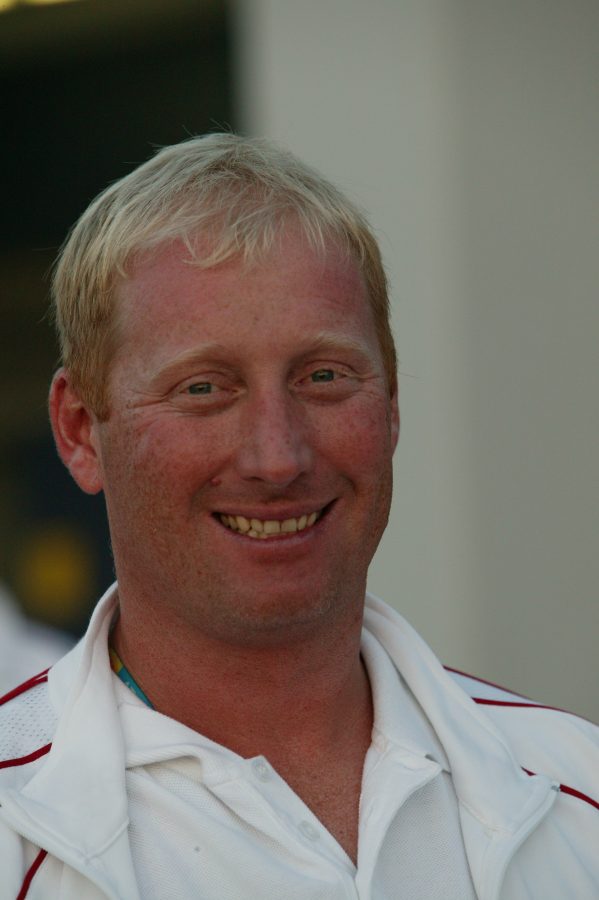
WHO WE ARE: MIKE WOLFS
WHO WE ARE: MIKE WOLFS
Get To Know Your Local Sales Expert
How long have you been sailing? What boats/classes do you sail?
I've been sailing for 42 years now. I sail mostly in one design classes like the Star, Melges 20, Melges 24, and Etchells. I have also done blue water sailing, the Transatlantic races and Caribbean races as well as deliveries.
What got you into the marine industry?
I enjoy the sailing and learning new things about the sails. Also the experience of traveling to all parts of the world.
How long have you been working in the industry?
I have been working in the industry for 28 years.
What’s your favourite thing about sailing?
I enjoy harnessing the power of the wind and waves while in competition against others.
READ MORE
READ MORE
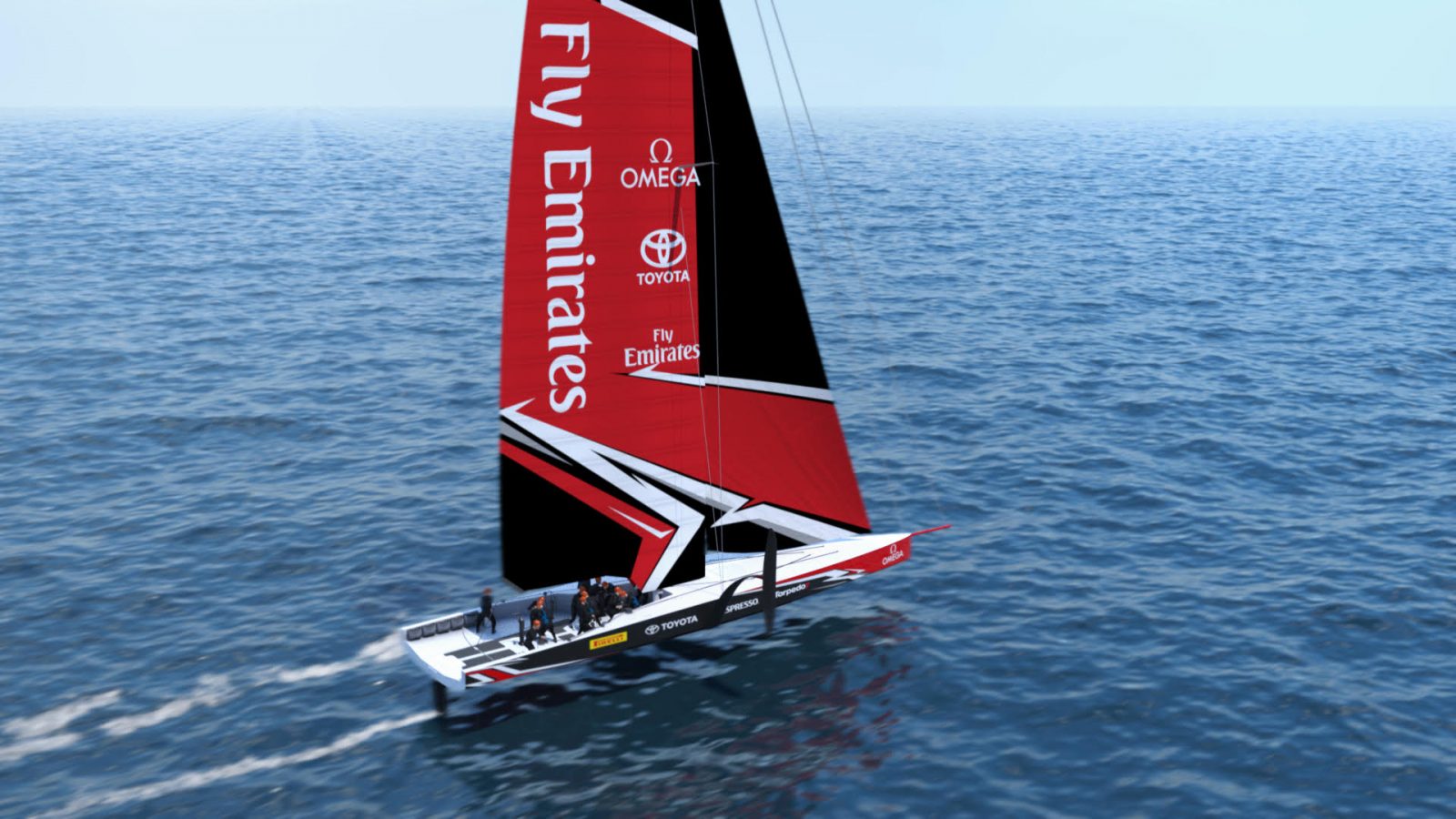
NORTH SAILS CONFIRMED SUPPLIER FOR 36TH AMERICA’S CUP
North Sails is once again leading the way in the America’s Cup as Defender Emirates Team New Zealand and Challengers Luna Rossa and INEOS TEAM UK have confirmed the global leader in sailmaking as the supplier of choice in the next event.
READ MORE
READ MORE
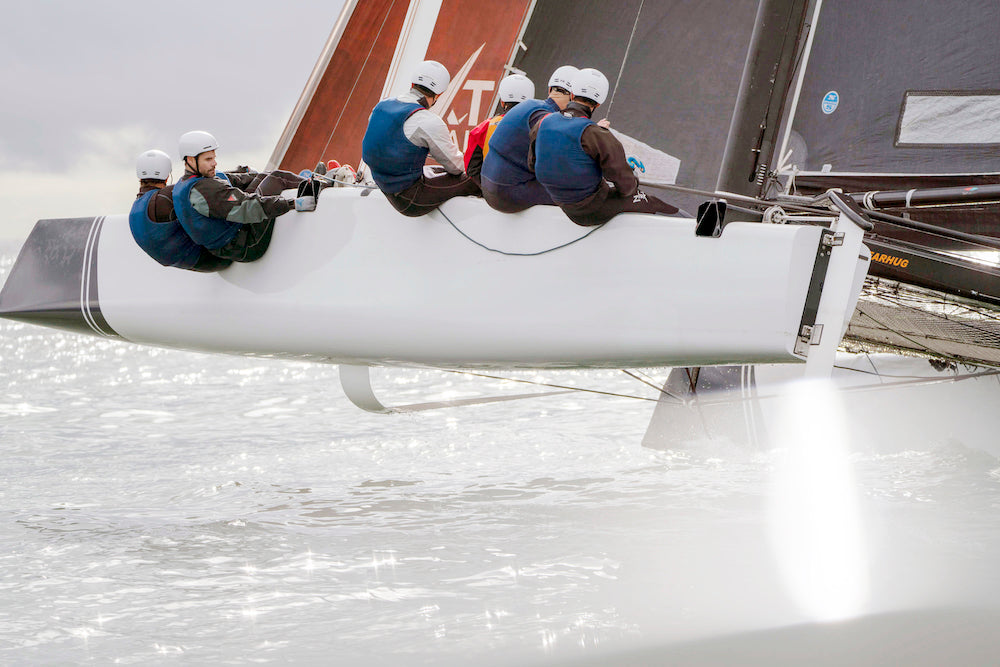
NORTH SAILS SEMPRE IN PRIMA LINEA NELL'AMERICA'S CUP
NORTH SAILS SEMPRE IN PRIMA LINEA NELL’ AMERICA’S CUP
Tre team su quattro annunciano la partnership con la veleria numero uno al mondo
📸 Luna Rossa Challenge
North Sails è ancora una volta in prima linea nell’ America’s Cup, come conferma l’annuncio da parte del Defender Emirates Team New Zealand e dei Challenger Luna Rossa e INEOS TEAM UK di avere scelto la veleria numero uno al mondo come fornitore ufficiale per la prossima edizione dell’evento. Forte di oltre 35 anni di esperienza ed innovazione nella storica competizione, North Sails è orgogliosa di portare avanti questa tradizione e quindi di progettare, realizzare e consegnare prodotti "top" sul mercato, affinché la maggioranza dei team disponga della miglior attrezzatura possibile per gareggiare ai massimi livelli in questo sport.
North Sails è nella condizione – unica – di poter fornire l’ "Engine above Deck" ideale per i nuovi monoscafi con foil , gli America’s Cup 75. Esperti della North Sails sono coinvolti nel nuovo ciclo dell’evento sin dall’inizio, e Burns Fallow e Michael Richelsen hanno contribuito a sviluppare la nuova e rivoluzionaria “soft wing” prendendo parte alla compilazione delle Regole di Classe.
Persone chiave della North Sails sono state "arruolate" da tre team di America’s Cup (su quattro presenti) e saranno quindi in prima linea per risolvere tutte le complesse problematiche legate all "Everest della vela". D’altronde l’esperienza e la conoscenza che portano in dote è impareggiabile, dato che utilizzano software e tecniche di design di proprietà esclusiva di North Sails per affrontare qualsiasi sfida e consentire, a queste imbarcazioni mai viste prima, di stabilire nuovi standard in termini di velocità e prestazioni.
Ken Read, Presidente North Sails, ha commentato:
"Siamo orgogliosi e onorati che ancora una volta i nostri uomini e i nostri prodotti siano considerati il meglio del meglio. Il nostro è un Gruppo di enorme talento con persone in gamba e leader mondiali nel loro settore. L’America’s Cup è un evento che da secoli mette alla prova le menti più brillanti e che ci sprona a guardare le cose da prospettive diverse; la prossima edizione non sarà diversa e siamo entusiasti all’idea che North Sails sarà ancora una volta all’avanguardia come lo è stata nello sviluppo dei prodotti 3Di negli ultimi dieci anni, di cui poi ha beneficiato l’intera filiera velica, dalle imbarcazioni offshore a quelle da crociera."
"Siamo entusiasti e non vediamo l’ora di navigare e di sviluppare il nuovo AC75 e l’aero package che la Classe userà per volare sull’acqua. L’aero package unisce molti elementi che facevano parte dell’ala rigida del passato ad altri legati alla nuova tecnologia "soft wing". Avendo a disposizione uno strumento come il software MembraneTM e la possibilità di lavorare a stretto contatto con velai esperti e professionisti del “rig”, otterremo molte informazioni e impareremo una gran quantità di cose ancora prima di testare queste barche direttamente in mare il prossimo anno. Ci aspetta un periodo molto eccitante!"
"Il concetto della nuova randa "soft wing" utilizzato nella 36a America’s Cup è un incredibile passo avanti dal punto di vista tecnologico per tutta l’industria velica; era quindi fondamentale fare squadra con una veleria in grado di dare forma a un prodotto così rivoluzionario e non potevamo che scegliere North Sails come partner. Adesso non vediamo l’ora di spingere insieme a loro i nostri limiti mentre la nostra sfida va avanti verso Auckland 2021."
"L’America’s Cup è da sempre la regata velica più all’avanguardia del mondo dal punto di vista tecnologico; per mettere in piedi una sfida vincente è quindi fondamentale lavorare con le aziende più innovative e futuristiche del settore. North Sails è in cima alla nostra lista dei preferiti sin dall’inizio della campagna e siamo felici di averla a bordo nella sfida britannica."
"North Sails è semplicemente la migliore azienda con cui lavorare per portare avanti il nostro progetto in America’s Cup. Il livello di preparazione e di esperienza degli uomini North Sails è impareggiabile e la qualità dei loro software e dei loro strumenti non ha rivali. Inoltre, la tecnologia che ha sviluppato per la produzione delle vele è unica al mondo."
"I mezzi e gli strumenti di cui si serve North Sails sono fondamentali per aiutarci a sviluppare il miglior aero package possibile per l’AC75 e per permetterci di giudicare e scegliere le diverse opzioni da accoppiare alle membrane per supportare i carichi degli AC75 quando questi navigheranno a oltre 40 nodi."
READ MORE
READ MORE
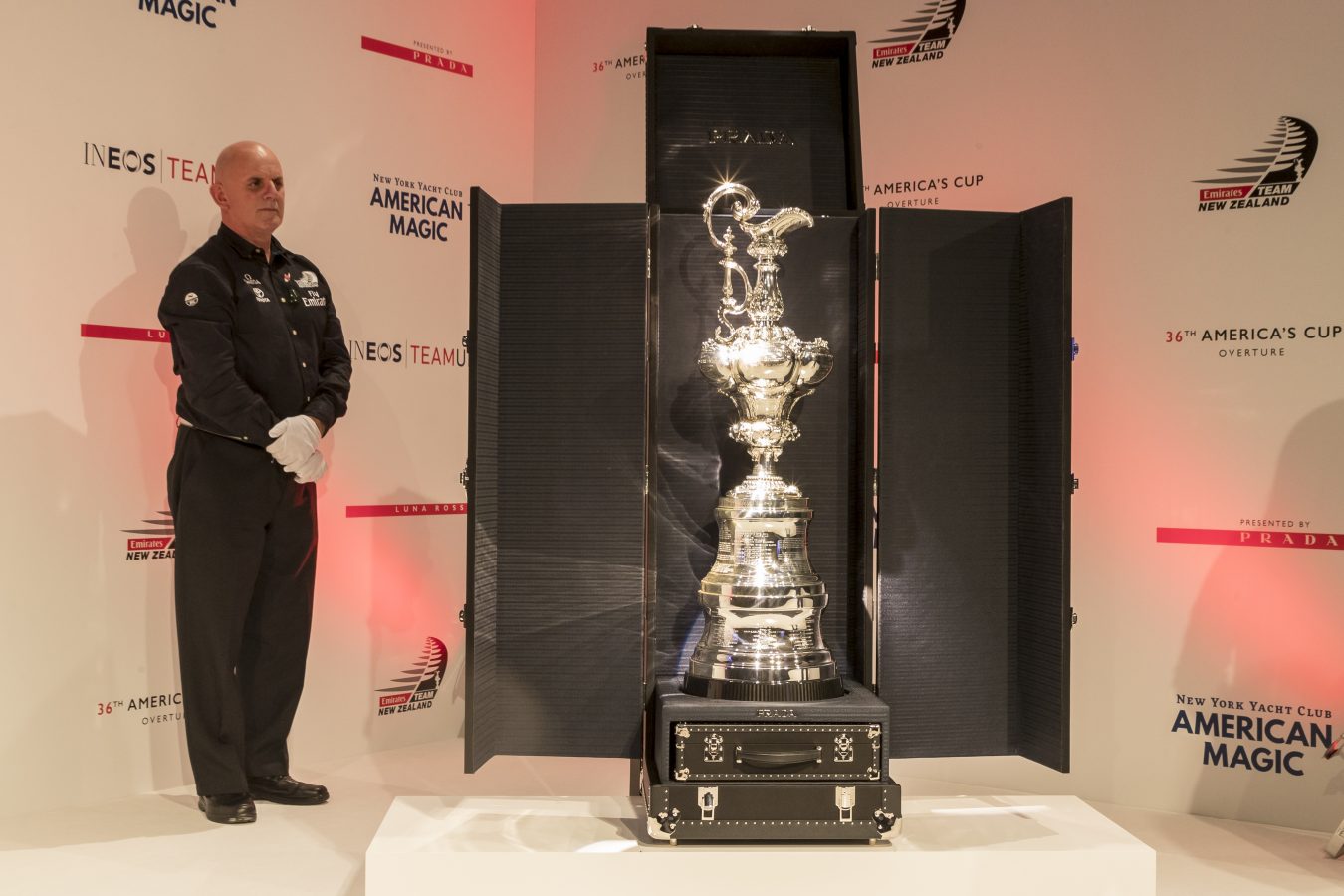
NORTH SAILS PLUS JAMAIS PRÉSENT QUE JAMAIS SUR L'AMERICA'S CUP
NORTH SAILS PLUS PRÉSENT QUE JAMAIS SUR L’AMERICA’S CUP
Trois des quatre équipes s’engagent à travailler avec la voilerie leader mondial
📸 Luna Rossa Challenge
North Sails se distingue une fois encore par sa présence dans l’America’s Cup. Le Defender Emirates Team New Zealand et les Challengers Luna Rossa et INEOS TEAM UK ont confirmé avoir choisi le premier fabricant mondial de voiles comme fournisseur pour l’épreuve à venir. Avec plus de 35 ans d’expérience et d’innovation dans cette compétition historique, North Sails est fier de continuer à concevoir et à fournir les meilleurs produits du marché pour équiper la grande majorité des teams et les voir réussir au sommet de ce sport.
Les voiles North Sails sont particulièrement bien placées pour offrir ce qu’il y a de mieux aux nouveaux monocoques à foils de l’America’s Cup. Plusieurs spécialistes de North Sails sont impliqués dans l’événement depuis que la Coupe a pris le tournant des foils, notamment Burns Fallow et Michael Richelsen qui ont aidé à développer la nouvelle aile souple révolutionnaire et ont participé à la rédaction des règles de classe. Des membres clés de North Sails font désormais partie de trois des quatre équipes de l’America’s Cup et participeront à la résolution des problématiques complexes posées par l’épreuve reine. L’expérience et les informations qu’ils apportent sont sans égal notamment grâce aux logiciels et processus de conception North exclusifs leur permettant une fois encore de relever de nouveaux défis et faire en sorte que ces bateaux uniques au monde franchissent un cap en termes de performances.
Ken Read, Président de North Sails:
“Nous sommes fiers de voir que nos produits et nos membres ont à nouveau été choisis parmi les meilleurs. Nous avons au sein de notre entreprise des talents exceptionnels qui sont au sommet de leur art. L’America’s Cup est une épreuve qui continue de challenger les plus grands esprits et nous obligent à regarder les choses sous un angle nouveau. La prochaine édition ne dérogera pas à la règle et nous sommes très heureux de savoir que North Sails sera à la pointe. Et comme l’a prouvé le développement des produits 3Di ces dix dernières années, c’est tout le milieu de la voile, de la course à la croisière, qui en récoltera les fruits.”
“Nous sommes très heureux et impatients de développer le nouvel AC 75 et le pack aéro que la classe utilisera pour propulser les bateaux au-dessus de l’eau. Ce pack aéro réunira plusieurs caractéristiques des anciennes ailes rigides, mais avec la nouvelle technologie des ailes souples. Avoir à notre disposition un outil comme Membrain© et pouvoir travailler avec des designers spécialisés dans les voiles et le gréement nous donne un large panel de connaissances bien avant de naviguer et de régler les voiles pour la première fois l’année prochaine. Cela s’annonce passionnant!”
“Le nouveau concept de grand-voile aile-souple qui sera utilisé pour la 36e America’s Cup est une avancée technologique très intéressante pour l’industrie nautique. Nous associer avec un fabriquant de voiles capable de suivre ces avancées révolutionnaires était essentiel, et pour nous il n’y avait que North Sails. Nous avons hâte de repousser les limites avec eux quand notre défi ira à Auckland en 2021”
“L’America’s Cup est l’épreuve de voile la plus avancée au monde techniquement. Pour monter un défi qui a des chances de gagner, nous devons travailler avec les entreprises les plus innovantes. Depuis le début de notre campagne, nous pensions à North Sails pour les voiles et nous sommes très heureux de les embarquer dans ce défi britannique.”
“North Sails est la meilleure entreprise avec laquelle nous puissions travailler pour ce nouveau projet d’America’s Cup. Ils emploient des salariés qualifiés et très expérimentés et ils ont des logiciels et des outils inégalables. La technologie qu’ils ont développée pour la production des voiles est exceptionnelle.”
“Les outils North Sails sont indispensables pour concevoir le meilleur pack aéro possible pour l’AC75. Ils nous aideront à évaluer et à classer les différentes options pour ensuite choisir les meilleures membranes capables de supporter les charges auxquelles seront soumis les AC75 lorsqu’ils seront lancés à plus de 40 nœuds.”
READ MORE
READ MORE
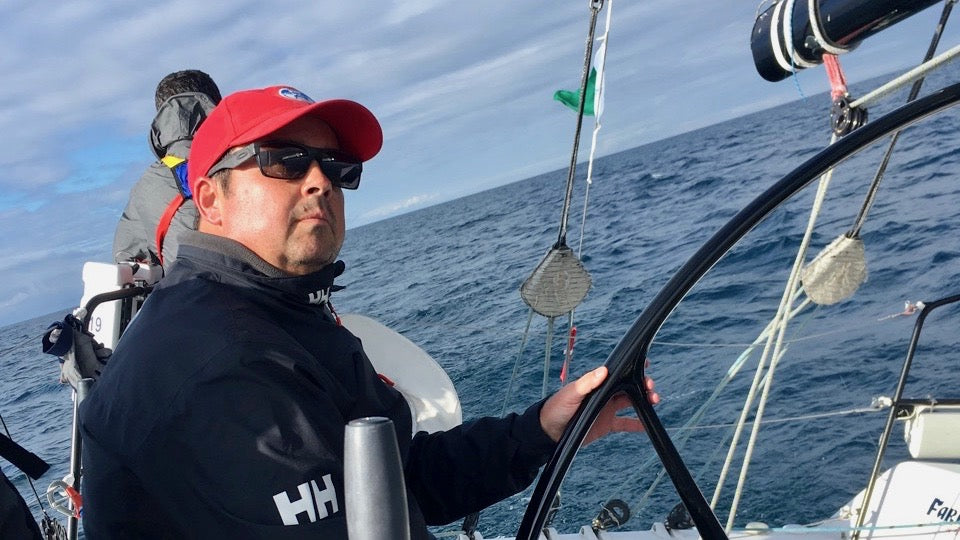
WHO WE ARE: DOUG FOLSETTER
WHO WE ARE: DOUG FOLSETTER
Get To Know Your Local Sales Expert
How long have you been sailing and what classes do you compete in?
I currently own and race a Viper 830 - a 27’ sportboat. I started sailing at the age of 6 when my father, who had no sailing experience whatsoever, purchased a brand new, bright orange (!) Contessa 26. So, 44 years and counting.
What boats/classes do you sail?
I grew up racing dinghy classes such as Laser, International 14 and Snipe and progressed to one-design keelboats such as the Melges 24 and Star. Over the years I’ve raced a variety of one-design, IOR, MORC, IRC and PHRF boats of all sizes and types.
What got you into the marine industry?
I was exposed to business by my father who dabbled in the marine business as a foul weather gear distributor and later as a yacht broker. I enjoy representing a product that provides joy and happiness!
What’s your favourite thing about sailing?
It’s such a varied sport that cam be enjoyed for a lifetime on so many different levels. From high performance sport boats, to long distance racing on larger boats to peaceful evening sails with the family… There is really something for everyone.
READ MORE
READ MORE
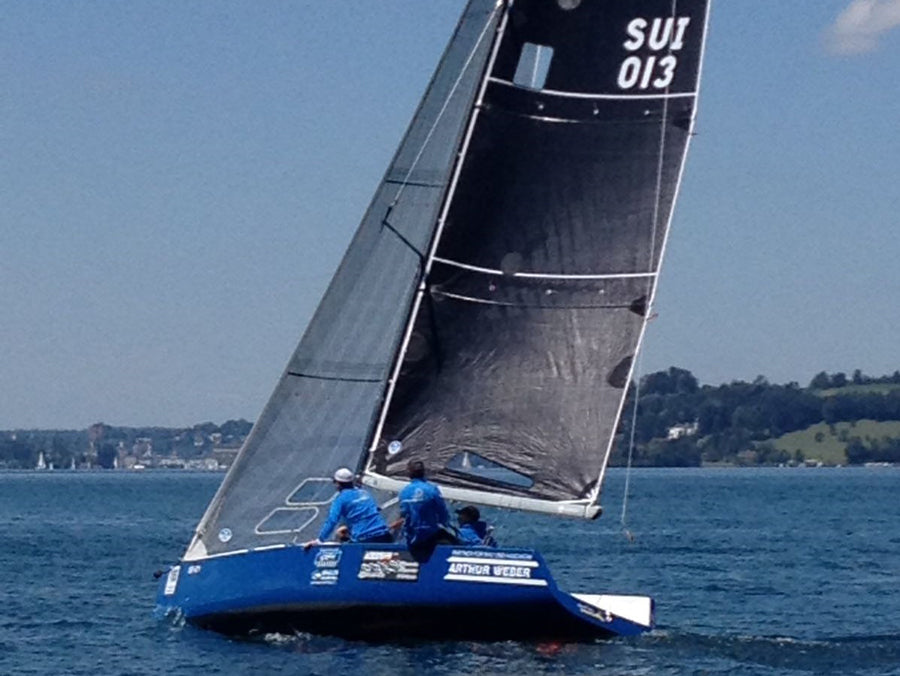
NORTH SAILS SIEG AM VIERWALDSTÄTTER SEE CUP 2018 !!
North Sails Sieg am Vierwaldstätter See Cup 2018 !!
Die esse850 'Steel Two' von Philipp Weber gewinnt mit seiner Crew um Oliver Ryhner und Heinz Theiler den VC-CUP 2018 mit 18 Punkten Vorsprung vor dem Team Black Nessi und 79 Punkten Vorsprung vor der Longtze von Thomas Hasler.
Bei 5 Langstrecken Regatten mit immer sehr fairen Wetterbedingungen konnten 2018 tolle Regatten gesegelt werden. Neu war die „Windweek Challenge“, welche mit Start in Brunnen als Nachtregatta ausgetragen wurde.
Der Eigner Philipp Weber sendet einen grossen Dank an alle, welche das Team als Sponsoren unterstützen und an das VC-Cup-Team für die professionelle Organisation.
North Sails Schweiz gratuliert herzlich zu diesem super Resultat und freut sich, auch in Zukunft für das Team da zu sein.
Rangliste
READ MORE
READ MORE
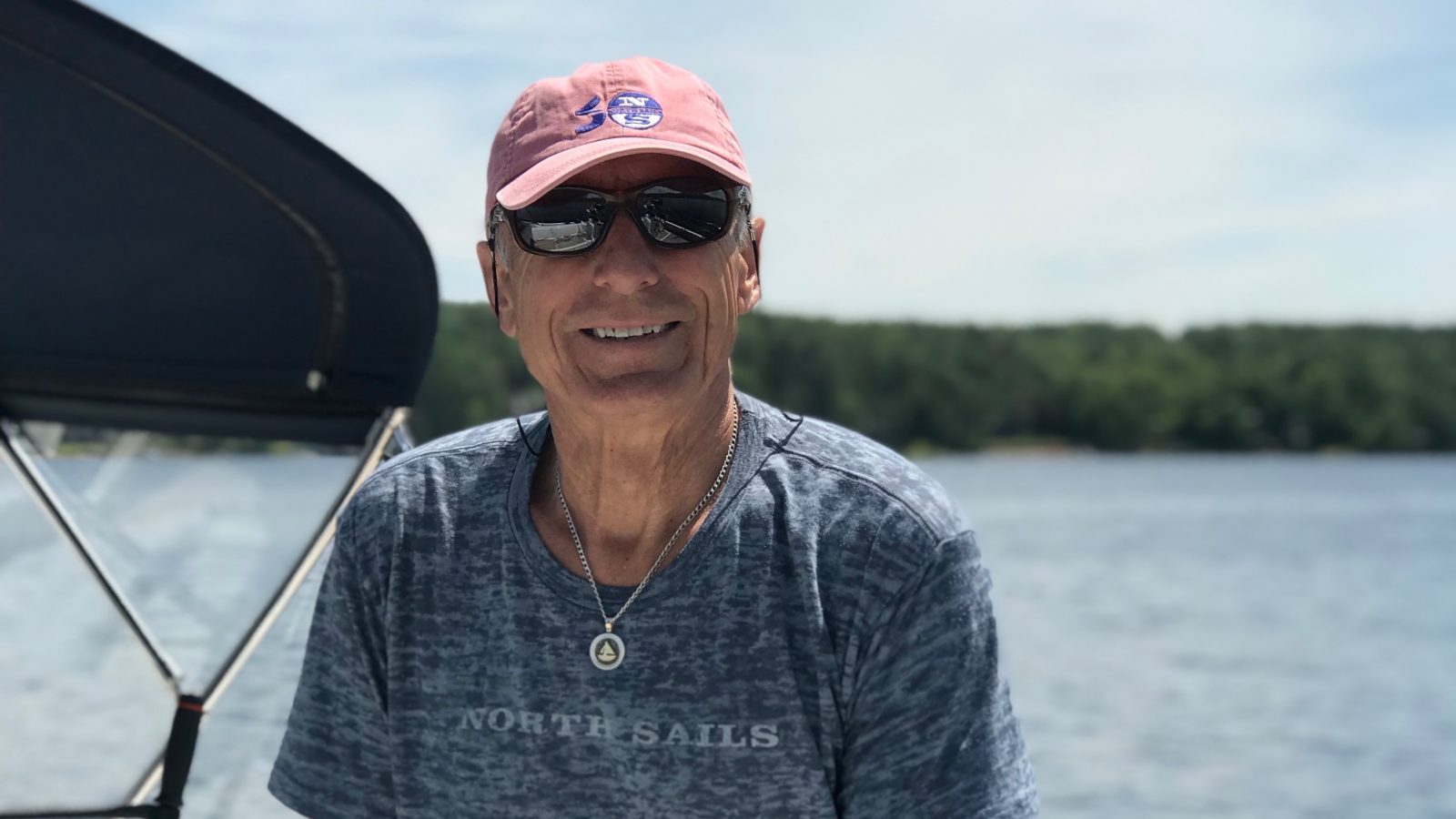
WHO WE ARE: MIRO BALCAR
WHO WE ARE: MIRO BALCAR
Get To Know Your Local Sales Expert
How long have you been sailing and what classes are you involved in?
I have been sailing on Champlain lake and doing offshore passages for 30 years. Currently, I am racing and cruising my X-yacht 46. I enjoy spending time with customers on the water and overnight racing.
What got you into the marine industry?
I got to marine industry from being a life long customer of North Sails with this year marking my 12th year being in the industry and with the company!
What’s your favourite thing about sailing?
My favourite part about sailing is that sailing as a lifestyle allows me to be around people with similar passion. It also keeps me on a never ending learning curve and of young spirit.
READ MORE
READ MORE
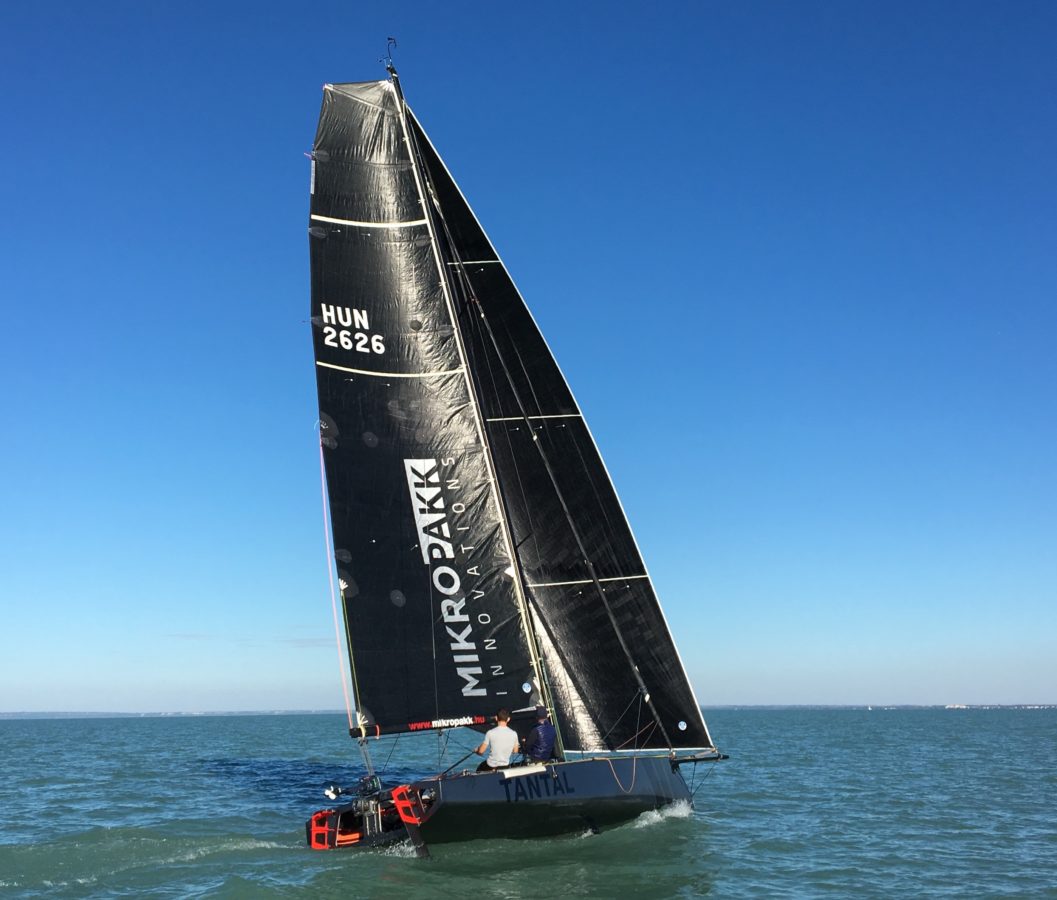
3Di RAW
3Di RAW - SEBESSÉG KOMPROMISSZUM NÉLKÜL
Nyers Teljesítmény, Legnagyobb Sebesség
3Di RAW a legkönnyebb, leggyorsabb verzió a 3D formázott kompozit termékeink közül. RAW a versenyvitorlák evolúciójának legfejlettebb változata, magába foglalva az összes paramétert a legmagasabb teljesítményhez. Páratlan formastabilitásának köszönhetően a 3Di RAW dominálja a Grand Prix versenyeket világszerte és már a versenyzés minden szintjén találkozhatunk vele hajómérettől függetlenül.
Bármely más vitorlához viszonyítva, a RAW vitorláknál a legmagasabb teherviselő szál/súly arány és a legkisebb súly.
3Di RAW ideális választás:
• legfejlettebb vitorlákat szeretné
• nyertes teljesítményt vár vitorláitól
• osztályban vagy előnyszámításos rendszerben versenyez
VÁLTOZATOK + AJÁNLOTT FELHASZNÁLÁS
RAW 360 : Polyester / Aramid
RAW 760 : Ultra PE / Aramid
RAW 780 : Ultra PE / Carbon / Aramid
RAW 870 : Carbon / Ultra PE / Aramid
one design / tavi versenyzés / Grand Prix versenyzés / nagyteljesítményű többtestű
ELÉRHETŐ VITORLATÍPUSOK
standard nagyvitorla / átmenőlatnis nagyvitorla / betekerős
és nem betekerős orrvitorlák / CODE vitorlák
3Di RAW ELŐNYEI
• 3D formázott kompozit struktúra
• legkönnyebb 3Di verzió
• legnagyobb teljesítményű vitorlák
READ MORE
READ MORE
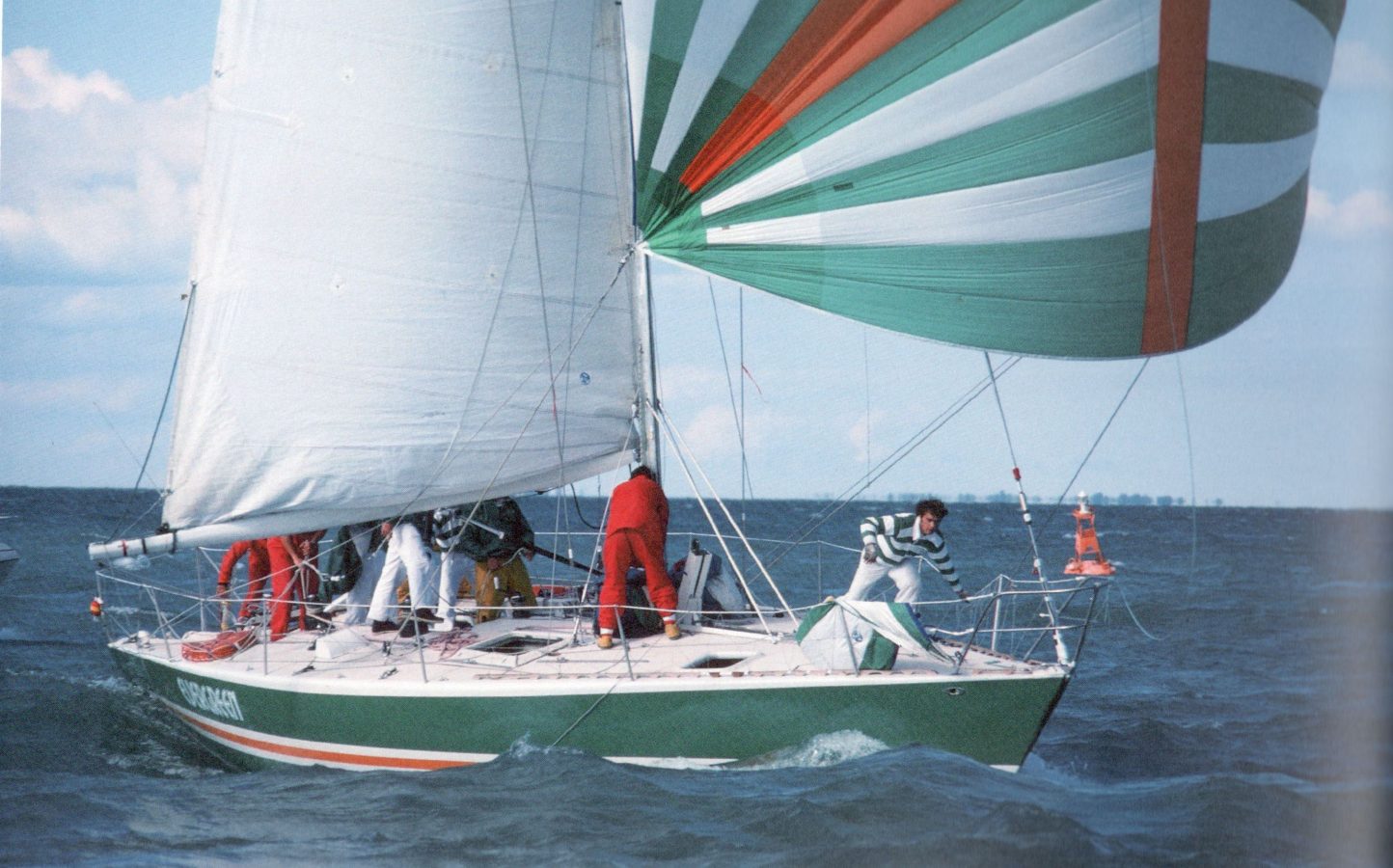
NORTH SAILS AND EVERGREEN
NORTH SAILS & EVERGREEN
The Story of Don Green and Lowell North in The 1978 Canada's Cup
Photo courtesy of Sharon Green from Evergreen
Around the Great Lakes, Evergreen is a well-known name that reflects an exciting time in Canadian sailing history. Skippered by Don Green from Royal Hamilton Yacht Club, Evergreen went from being the underdogs in the 1978 Canada’s Cup to winners on September 25th, 1978.
North Sails involvement with Evergreen and the Canada’s Cup begun at the beginning of the campaign. Green recalls how Lowell was actively involved, always around during training sessions and out on the water looking at the sails. Lowell North was always fascinated with the shape of sails and technology used to gain the best design and shape. One could say the ‘Science of Sails’ really began with the Evergreen project. Green points out, “Lowell was always taking pictures, looking at the shape and seeing how things could be modified.” This method of photographing sails followed by analysis, carried over deep in North Sails following the 1987 Canada’s Cup and is still used today in the company.
In addition to Lowell’s photographing of sails, our history with the Evergreen projects always includes the infamous “green garbage bag” sail. This famous “green garbage bag”, as Green recalls, “was just massive and was heavy when wet”. For North Sails, this was a significant moment as it was a mylar laminate sail – the first to be flown at the time. Our sail material technology and design process has developed from this, leading to our 3Di Technology, and Lowell's desire to combine the scientific method with photographs. Green comments how "Lowell was always analyzing the photo's he'd taken and comparing them with science".
For Don and the Evergreen crew, their contributed to Canadian sailing through both the 1978 Canada’s Cup and 1979 Admiral’s Cup is immense and should not be overlooked. At the time, the mayor of Toronto came out to celebrate the crew in the motorcade parade in the city – something that would not be seen in today’s post-race festivities.
This past August, Don Green was inducted, by Steve Killing, into the Canadian Sailing Hall of Fame. A well-deserved moment for Don and all that he has done for the Canadian sailing community.
Don is still an active sailor today when he has the time. He frequently sails with life-long friend and Executive Director of the True North syndicate in the 1980’s, John Bobyk, at Mimico Cruising Club.
Don Green and John Bobyk , 2017
Don Green and John Bobyk , July 2018
READ MORE
READ MORE
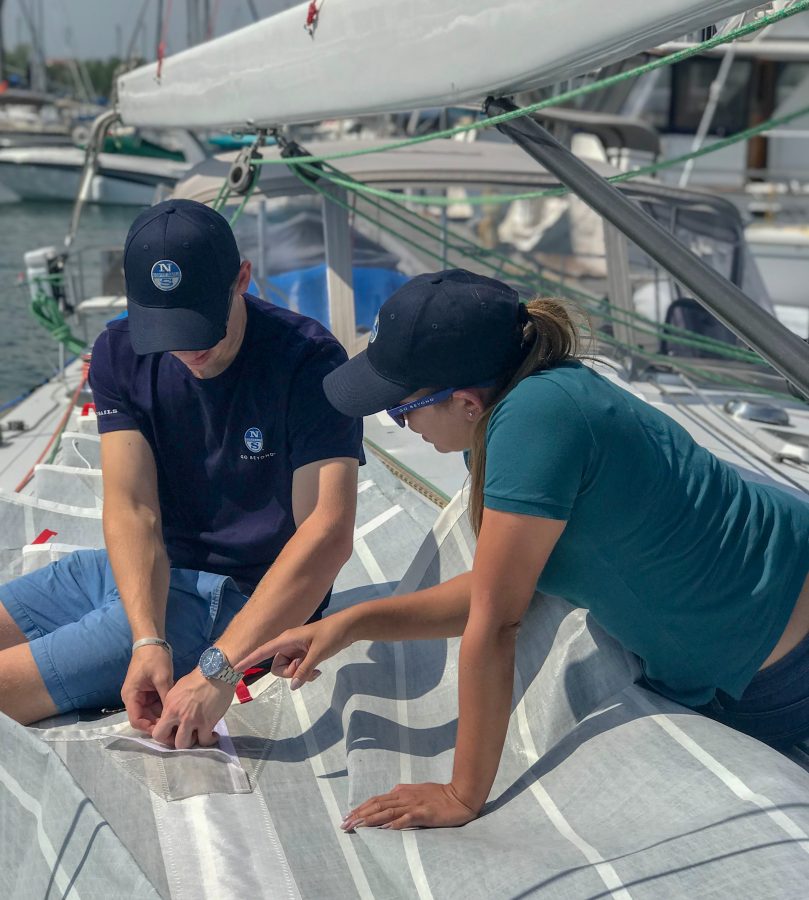
FROM DINGHY SAILING TO SAILMAKING
From Dinghy Sailing to Sailmaking
From Junior Sailing Onwards, For Kyann The World is Her Oyster
If you’d asked me in university what I wanted to do when I grow up, I would have probably told you I either wanted to go sailing, or be a sail maker. Fast forward a few years, I’ve raced on three continents, clocked over 4,000nm since graduating, and I’m now working at North Sails as an apprentice sailmaker. While that may sound like a dream come true, it wasn’t always.
I had my first sailing experience when I was 12 years old when my mom and aunt signed me up for my whitesail one, non-negotiable. The program took two precious weeks of my summer vacation, and I dragged my feet getting ready that first day. Shoved into an Opti that I was already too big for, I awkwardly sailed around the harbour trying not to crash into the big boats docked in the area. As the weeks progressed I not only began to understand the opti, but saw the older camp kids sailing 420s and lasers, and my interest peaked. By the end of the program, I had finished not only my whitesail I and II, but signed up for another two weeks at the end of the summer.
Fast forward a couple years, and I was introduced to keelboat racing by my aunt. Sailing on a C&C 27 in a level fleet against 5 or 6 other boats twice a week, I loved learning the boat and trying to coax that tiny bit of extra speed out of it. Over the next six years I learned every position on the boat, eventually falling in love with the foredeck and never really making my way back aft of the mast. I was having a blast until my final years of university hit, and I took a two season hiatus from sailing. After a while, I’d forgotten how much I loved the sport and being on the water.
That all changed last summer when I got back on the water. Graced with 15-extra feet of boat, I learned a new foredeck and was itching to keep sailing after the season was over. Now that I was back out there, I couldn’t stop at just a few months.
I was introduced to a team sailing down to Antigua from Toronto, and with them I had my first overnight, navigation and ocean experiences. I signed up for two long distance races, but unfortunately it wouldn't work out this time for the Rolex Middle Sea Race in Malta and the Caribbean 600 out of Antigua, due to rigging failures. Thankfully, I finished my off-season with a go at Antigua Sailing Week. Although none of my events turned out as I’d hoped, I’d never experienced anything like these regattas in my life, and came home determined to jump right back into sailing here up North.
Shortly after arriving back in Toronto, I landed a summer internship at North Sails. Every day I was immersed in a world of sails. Repairs, design, and sailing techniques were talked about all day at the office, and I was racing 3-4 nights a week. As the summer came to a close, one thing became clear - this wasn’t just a summer internship, it was just the beginning.
READ MORE
READ MORE
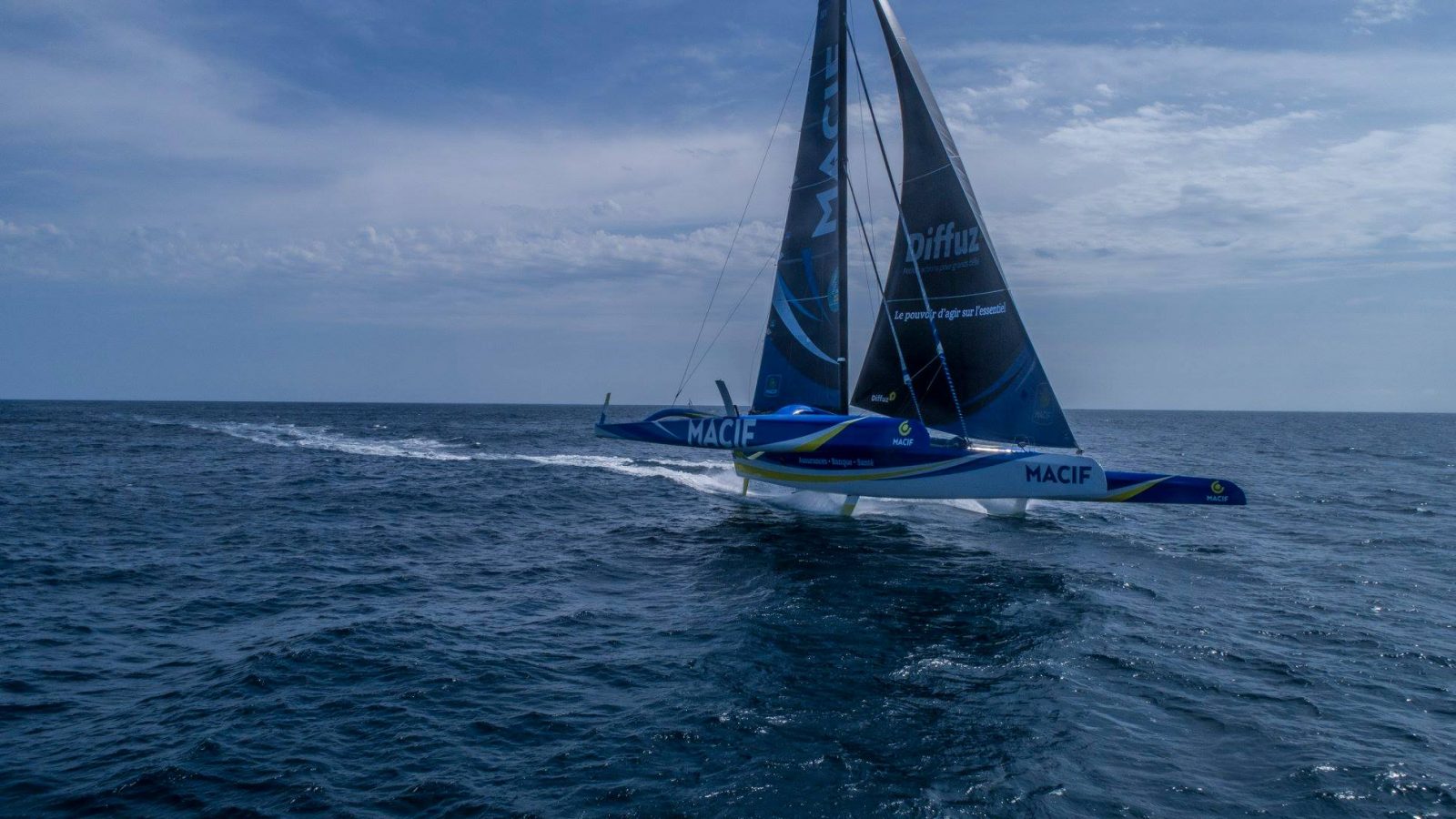
2018 ROUTE DU RHUM
2018 ROUTE DU RHUM
Fast Sailing, Foils and High Expectations Across The Fleet
📸Alexis Courcoux / 2018 Route du Rhum
The Route du Rhum is a prestigious offshore event and an example of single-handled ocean racing at its best. First sailed in 1978, the Route du Rhum was a transatlantic race introduced to overthrow conventional wisdom; monohulls sailing alongside multihulls, pro sailors racing against amateurs. The first edition of the race featured 38 entries and the winner finished in 23 days. In 2014, Loïck Peyron set a new course record of 7 days, 15 hours, 8 minutes and 32 seconds.
Four year later, 123 sailors and thousands of North Sails across six classes will hit the start line in St Malo, France, and set off 3,542 miles for Guadeloupe. The 2018 Route du Rhum represents 130 new sails and some 6,000 hours of work for North Sails, and specifically, the Vannes-based loft.
“The diversity of projects in this race is something which is important for us,” commented Greg Evard, country manager for North Sails in France. “Responsiveness is essential; listening, understanding and acting in the shortest possible time when necessary, with the goal to ensure that those who trust us do not lose any time sailing.” The key to success lies in the integrated teamwork between design, production and service.
Greg’s team efforts on the ground combined with the global design and product expertise has paid off; evidenced by growing market share for North Sails across the Route du Rhum fleet. Gautier Sergent, the Head of North Sails R&D, based in France added. “The advent of foiling has forced us to redesign our sails for the IMOCA and Ultim classes, because with the foils, everything changes: speed, apparent wind angle, torque, geometry, deck plans…”
With 3Di™, North Sails has a technology that perfectly matches the new challenges imposed by these out of the ordinary machines but still allows every level of sailor in this race to have the best possible suite of sails. It is going to be an exciting race and as is ever the case, when a fleet of boats leaves the dock, anything can happen.
READ MORE
READ MORE
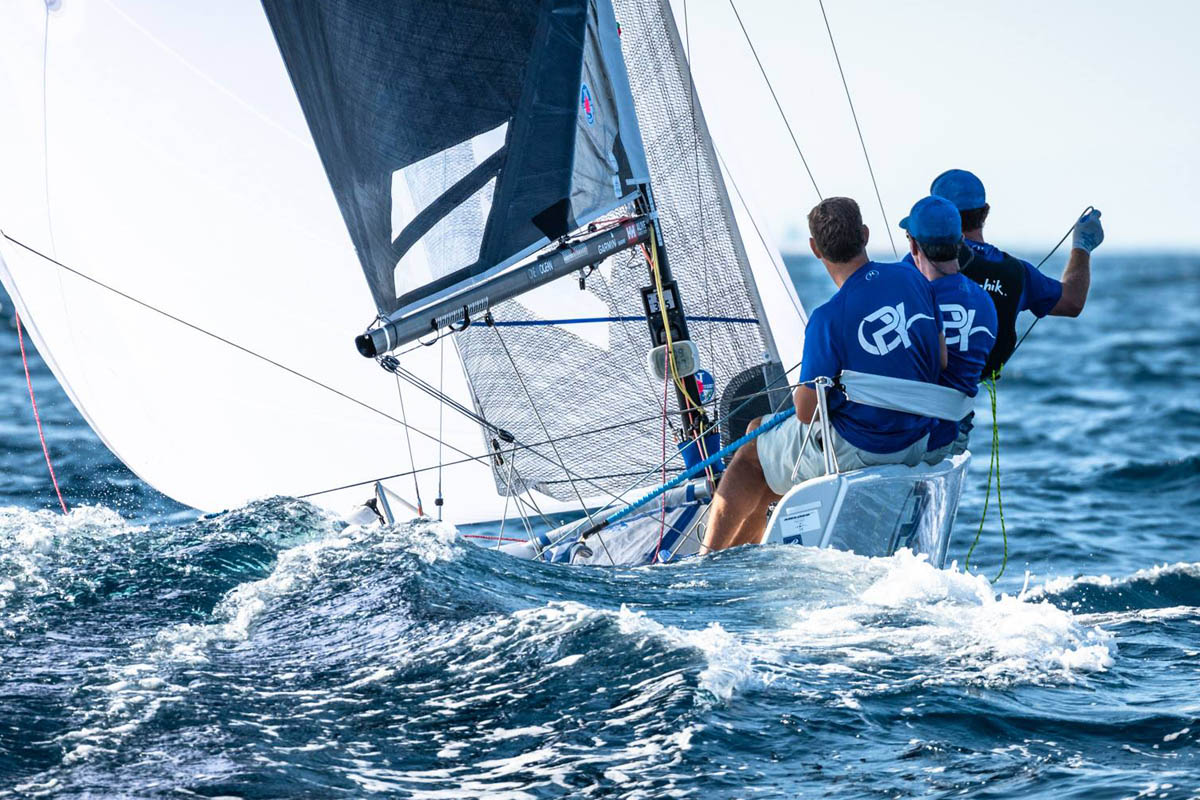
MELGES 20 SPEED READING
MELGES 20 WORLDS: SPEED READING
Two-time World Champion Drew Freides Shares His Views on Winning Speed
The waves were bumpy and the wind was hard to read at the 2018 Melges 20 Worlds in Cagliari, Italy. That put a premium on speed at all times for the crew of Pacific Yankee, which earned its second championship title in a row.
Racing in a tough 38-boat fleet, Drew Freides, Morgan Reeser, and Charlie Smythe won the last two races to earn the title by a point. What made the difference?
Skipper Drew Freides credits his teammates, coaching, planning, and preparation, and says one key, after winning the 2017 Worlds, was adopting the attitude, “We’ve got to improve because everyone else is going to improve.”
“One thing I’m good at is that I’m scared of failure.” Drew says, “so I’m never content. I always feel like someone’s going to pass me and be better.”
Build a Speed Matrix
“Over the year, we focused on a matrix for boat setup,” Drew says. “Vince Brun, our coach, was maniacal about it. When we’re racing we don’t want to think about boat setup—we want to focus on sailing well and sailing smart. The matrix is marked as number of turns on and off the uppers and the diamonds and is easily repeatable. We developed ours by starting with the North Sails Tuning Guide, and it evolved from there based on our work with sail designs and our observations.”
“We always put the rig back to base setting at the end of the day,” he adds. “Sometimes we check measurements with calipers and once in a while with a tension gauge.”
Think “Dead Stick” and “Unload the Boat”
Drew says to go fast the boat can’t be loaded. It should have more of an “easy” feel. “On our boat,” he says, “Morgan is focused on tactics, and Charlie on speed, but Morgan is holding the mainsheet. When we wanted speed, Charlie would say to him ‘free it up,’ meaning to unload the boat. We’d go for a flatter mode for the sails, put the bow down, and get it ripping. When we wanted height, I’d ask for more load on the helm, which meant more leech tension, rounder sails.”
“The boats are tippy, and heel is your enemy. You’d be surprised how much the boats heel. You really want the tiller to feel like a “dead stick”…the less feel we had, the faster we went. It takes time getting used to it.”
“The upper shrouds on a Melges 20 are on cars,” says Drew. “Charlie spent a ton of time adjusting uppers, forward and back. We would set ourselves up going off the starting line with the car forward. We’d go a tenth or two slow, climb and build our hole, then once we were in clear air, we would move the cars back and put the bow down. Once you get the boat going fast, it points high on its own.”
Upwind in Lumpy Conditions
At Cagliari, Drew says, “it got very lumpy, which put a premium on accelerating and rebuilding speed quickly. We needed a good balance of sail depth for power, but not so much that we couldn’t put the bow down and go.
“On the second to last day, port tack was brutal. We had a great setup and could put the bow down and rip up to 5.9 knots. When you hit waves, it was important we were already going fast and not trying to climb. If Charlie said, ‘Bad set coming,’ Morgan would ease the main and I’d bear off. If Charlie said, ‘Flat spot,’ Morgan would sheet in and we’d start climbing. The biggest gains to be made were in terms of height, but that’s only because we were already going fast.”
Same Speed and Lower, Downwind
“The goal downwind was to sail the same speed but lower,” says Drew. “ When it got lighter, it was an uncomfortable low mode. With spinnaker sheet in his hand, Charlie coached me how low we could go. We were constantly looking to soak and never have the boat loaded. We never had enough wind at the Worlds to sail higher and get beyond lazy planing.”
“Some thought we had special sails, but for the record, we used North’s R-2 and V4-2R, off the shelf. We used the V4 more than you would think, down the wind ranges, because it let us heat it up and get onto some of the waves. The R-2 is not as comfortable reaching so we sometimes used the planing chute even though we were trying to soak low.”
Read more about Pacific Yankee’s victory at the 2018 Worlds
“In the 8- to 12-knot range when not overpowered, use rounder sails and hike really hard. We were sometimes too quick to depower.”
READ MORE
READ MORE
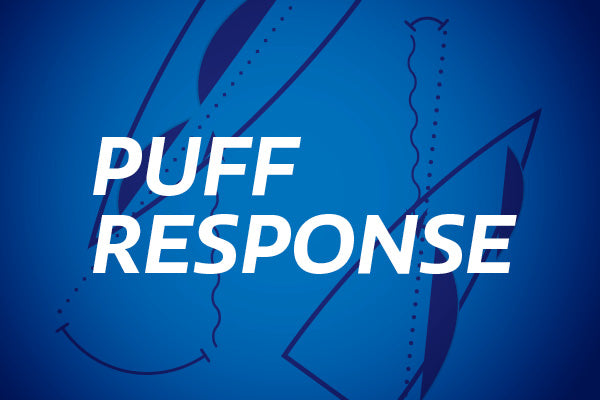
PUFF RESPONSE UPWIND
PUFF RESPONSE UPWIND
By Bill Gladstone
Proper response to a puff is critical to optimum performance. The best response is a change in trim to match the changing apparent wind angle. Here’s why:
Apparent Wind
We’ll start with our wind triangle before the puff hits. Figure 1 shows how apparent wind is the vector sum of Boat Wind and True Wind.
Fig. 1: Apparent Wind is the sum of True Wind and Boat Wind.
The Puff Hits
When the True Wind increases (“Puff!”), it creates a stronger Apparent Wind and a wider Apparent Wind Angle. Trimming sails to match this change usually means lowering the traveler, which is the fastest way to maintain a balanced helm and consistent angle of heel.
Fig. 2: A puff results in stronger Apparent Wind and a wider Apparent Wind Angle. Drop the traveler to match the new wind angle.
Acceleration
Once the boat’s helm is balanced again, the boat then accelerates to match the new wind speed. That moves the apparent wind forward, so then we need to re-trim the sails again.
Fig. 3: As the boat accelerates with the new wind, the apparent wind moves forward and we need to trim in again.
Wasted energy
If we don’t change sail trim in response to the puff, its energy is wasted in heeling force and weather helm rather than being turned into acceleration. The boat may eventually accelerate – after making leeway – but by then all of the more responsive crews will have jumped ahead.
Why change trim? Why not just feather the helm?
Trim Response lets you accelerate more quickly. Feathering (heading up, to reduce heel angle) will give you a brief bit of height, but that is usually offset by more leeway. Changing sail trim gives you speed, and speed then gives you height.
Why use the Traveler?
Lowering the traveler reduces angle of attack, which is the preferred trim response on a moderate displacement keelboat. On higher performance boats or multihulls, especially those with square top mains and high aspect keels, it is more effective to ease the mainsheet to adjust twist. On some boats – for example, an Etchells – a big pull on the backstay is very effective.
Some boats use “Vang Sheeting” (where the mainsheet controls angle of attack) and respond to puffs by playing the main.
Which is Best?
Snappy Answer: Whichever is fastest.
Longer Answer: You’ll have to test to see what works best on your boat. As a general rule, Trim Response is preferred to just feathering/ steering through the puff.
This article is from the North U Boat Speed Seminar curriculum. To find a North U Seminar near you visit https://northu.com/types/seminars/
READ MORE
READ MORE
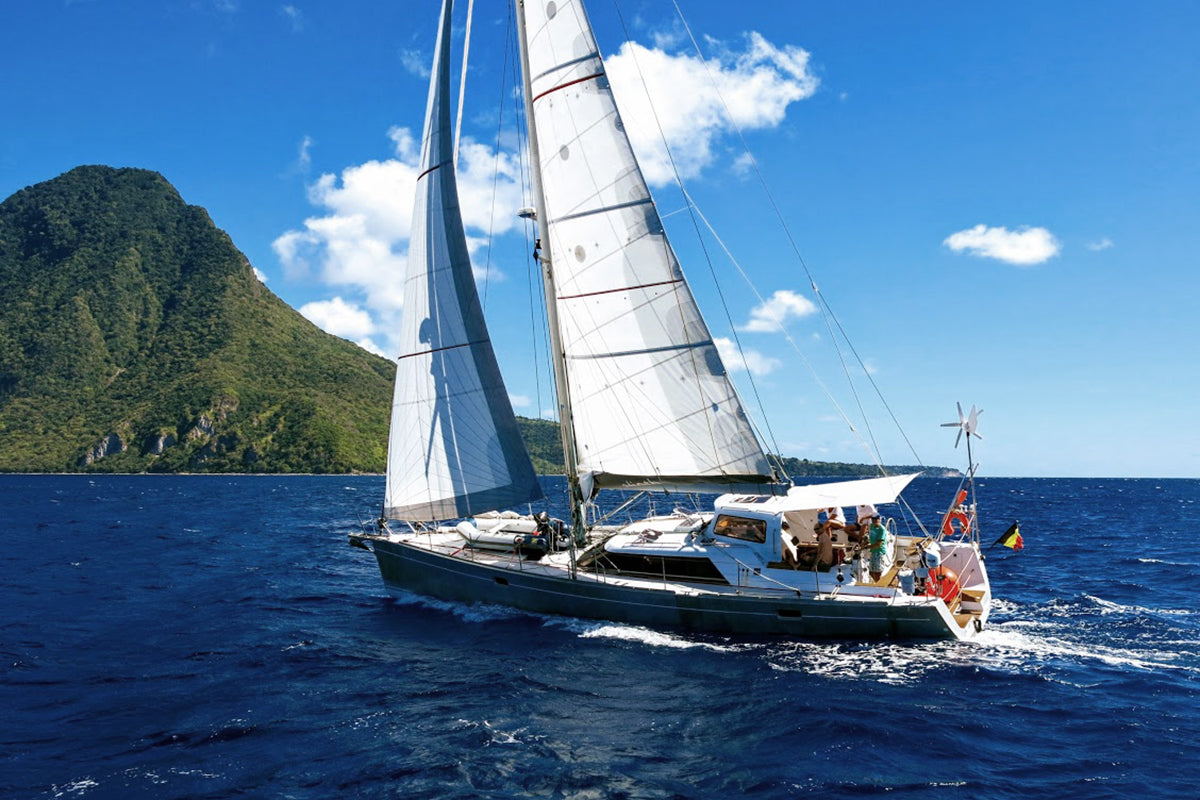
TRANSATLANTIC ADVENTURE: CAPE VERDE TO THE CARIBBEAN
TRANSATLANTIC ADVENTURE: CAPE VERDE TO THE CARIBBEAN
Vincent Moeyersoms Adventures Onboard French-built Exploration Yacht
Built in 2009, the 53’ Alioth has a specific purpose: ocean adventuring.
Alioth left the volcanic archipelagos of Cape Verde off the west coast of Africa, 2,100 nm East of the Caribbean, and twelve days later arrived at Carriacou Island. During their Atlantic crossing, the four crew took turns on three hour watches. Each morning they had a daily meeting to check in with each other and send an email to their family, which was written by Vincent’s niece Celine. Off-watch the crew fished, maintained the boat, watched movies, read books, and prepped meals. Vincent also taught his niece and nephew about sailing, navigation, and the stars.
Vincent’s brother Olivier and godson, Nicolas (at the bow)
They made landfall in Carriacou, a tiny island just north of Grenada, and tucked into Tyrell Bay for a celebration, before starting their exploration of the Grenadines. At Tobago Cays they swam around one of the most pristine coral reef in the Caribbean, and on New Year’s Eve, enjoyed the colorful local fresh lobster bake.
Locals cooked up fresh seafood for guests for New Years Eve celebrations
“The Grenadines were my most favorite part of the whole trip,” Vincent says. “Like in the BVIs, being able to sail to different islands and see different places each day makes it real fun. Every day brings a discoveries.” They stopped at Grenada, Union, Tobago Cays, Mustique, Bequia, St. Vincent, and St. Lucia on their way to Martinique.
Vincent, Nicolas, Olivier, and Vincent’ niece, CelineAlioth’s aluminum hull is ideal for remote ocean sailing. “She can fit six comfortably onboard for ocean crossings,” says Vincent. “In the tropics, it’s nice because everyone can be outside most of the time.” She’s easy sailed by a couple of people, so there is plenty of relaxation time for the rest of the crew.
“Sharing these experiences with friends and family, and being able to sail to parts of the world where chartering is not available, is why we purchased this boat.”
Olivier looks back just after departing Cape Verde
Equipped with a 2016 North Sails NPL Sport inventory, Vincent says the sails are still going strong even after 20,000 miles. The process of getting new sails was very easy despite the logistics involved according to Vincent. “We had North Sails in France come out and measure the boat, the sails were built in the United States, and then delivered to Norway. We had just a couple of days to make sure they were right. We opened the bags, hoisted them, and it all worked. North Sails has the experience globally to deliver to different parts of the world and see the project through to completion, and they were perfect.”
While in the Caribbean, Vincent and his crew enjoyed the highlights of a living aboard, including fishing and grilling off the back of the boat. “We don’t have a freezer onboard, so, on ocean crossings, eventually you start running out of fresh produce. We consider certain types of food a real treat,” he said. “When we can catch fish and pair it with fruits, vegetables, and freshly baked bread, it’s a meal we all really enjoy.”
Why did he choose Alioth? “We didn’t want a boat that was too big, because of cost and logistics. This boat was maintained well before we bought it, and it was built for our type of program, so the purchase decision was easy.”
Vincent also says the boat is fun to sail. “Alioth is quite light for its size, which makes it responsive in most conditions.” he says. With a lift-keel, she’s able to anchor in shallow water.
Having a deck saloon was a requirement and means the crew can see the ocean at all times. Alioth is very safe, and a step-up stern makes it easy to get onboard the boat. She has twin rudders, crash bulkheads bow and stern, and ample cabin space in between. Her water ballast tanks were recently converted to carry fuel, extending her range up to 3000 miles under motor power. Although the boat is equipped with a watermaker and heater, Vincent says the crew often chooses swimming instead of rinsing off in freshwater. “We will often jump in, just for the pure pleasure of it.”
In 2019, Alioth’s crew plans to attempt to sail the Northwest Passage, via Greenland and around to the North of Canada, then to Alaska. Stay tuned as Alioth’s adventures continue.
The cruising lifestyle offers some of the most epic sunsets
Approaching St. Lucia with the Pitons in the background
READ MORE
READ MORE
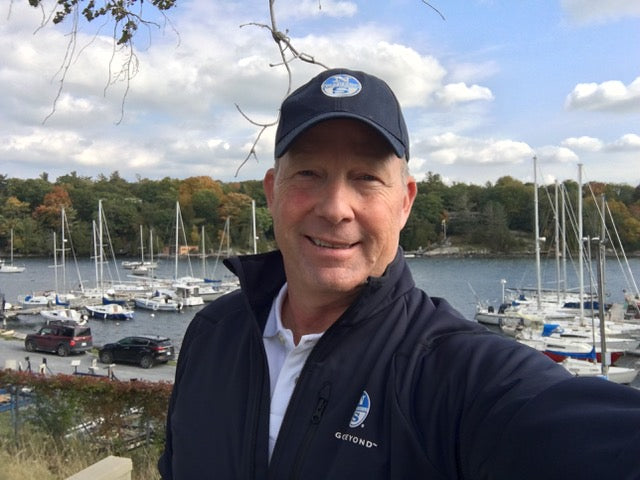
WHO WE ARE: GEORGE JACKSON
WHO WE ARE: GEORGE JACKSON
Get To Know Your Local Sales Expert
What is your sailing background?
My first recollection of being on a sailboat when I was about 4 years old. My dad and a friend had a 24’ yawl. I was terrified of it tipping, and on one occasion I set off the fire extinguisher down below. I don’t have any more memories of that boat. I started to race in earnest in 1978 on a wooden 5.5 metre out of Port Dover, ON.
I’m currently in a partnership owning an Olson 30. I also share a Hobie 17 and a classic DN iceboat.
What boats/classes do you sail?
Over the years I don’t think there’s ever been a sailboat I didn’t like. I’ve been blessed to have sailed and raced on all kinds of boats from lasers to lightnings to maxis to Open 60s to eight metres to viper 640s.
Most recently, I’ve been crewing a Viper 640, a classic 8m and C&C 115.
What got you into the marine industry?
I’m returning to my career roots. When I graduated from Queen’s, I went to work at Rideau Marina in Kingston. At the time they were dealers for C&C Yachts. In the role of broker, I sold sails including North Sails. What goes around, comes around.
What’s your favourite thing about sailing?
That’s a tough question. I’ve had the opportunity to sail with some great sailors on great boats in some fantastic locations, so there’s a lot to like about sailing. But the favourite thing I like about sailing, and racing, in particular, is the teamwork that is needed to sail successfully. It’s indeed a team sport -- so the camaraderie, competition and challenge to perform well in a wide variety of conditions.
READ MORE
READ MORE
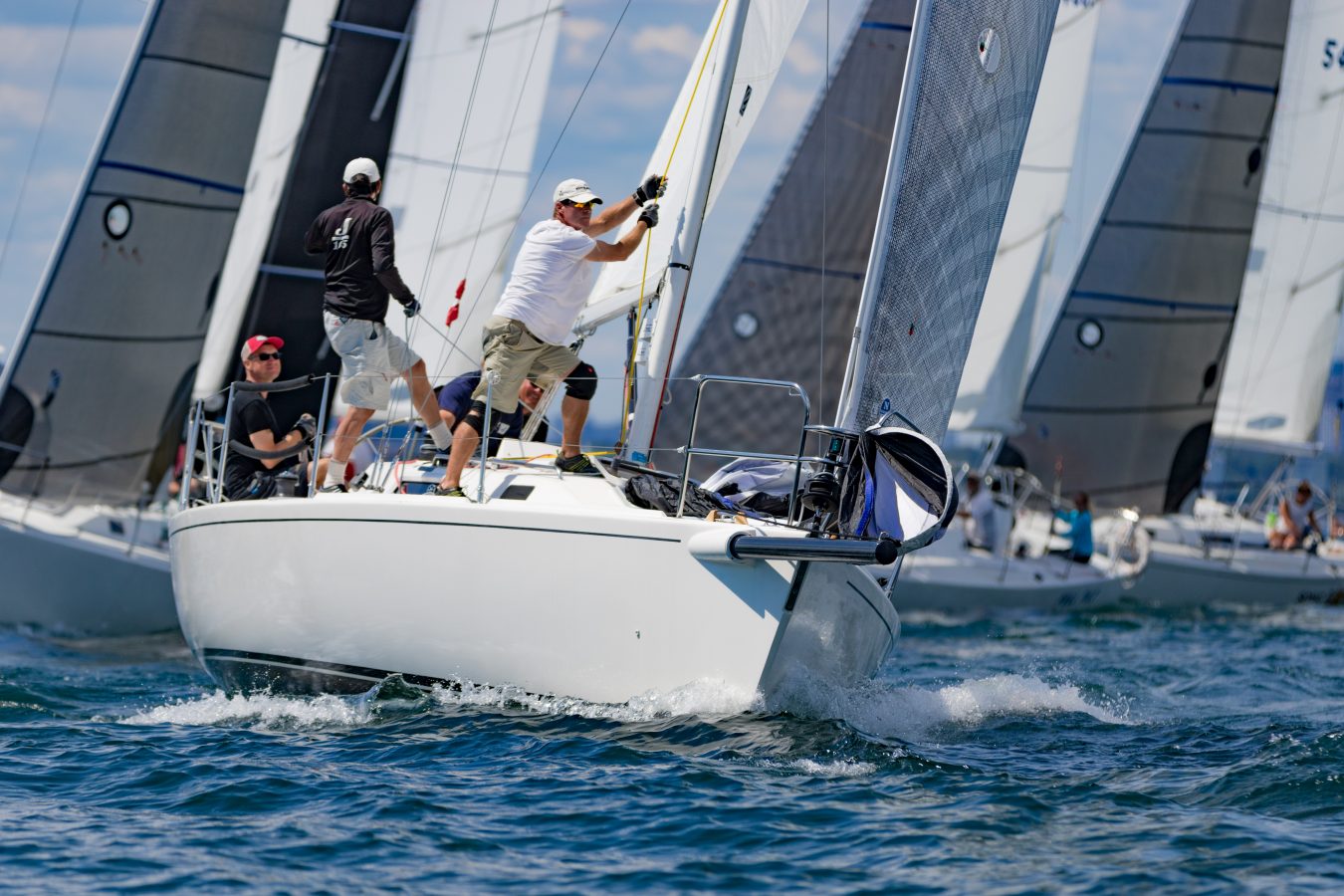
CUSTOMER SPOTLIGHT: ENDEAVOUR
Customer Spotlight: Endeavour
It's More Than Just Sails
Bill Bevan from Mimico Cruising Club, co-owner of J/105 Endeavour, shares with us the thinking behind switching to North Sails and why. Plus where he hopes to see the local J/105 fleet in a few years.
What factors contributed to your decision to upgrade to North Sails?
We had a previous sailmaker, the last two boats that I've had, the CC34 and then the J/105 since 2006, because I had a relationship with the individuals there. I was still learning the 105 so the sails were the least of my worries. That said, I got to the point where we got a lot of things under control so it was time to focus and remove some of the variables to find out what was really going on. North really supports the fleet well, so that was one of the factors also, the support that you guys have given the J/105 fleet for years.
I think the other side of it was who's looking after us, we should look after them. That doesn't mean you're gonna go out and buy some kind of crappy technology just because they've been good to you. It's great technology, so then I go to the sails themselves. I looked at what I had versus what others had and without buying one I kinda went, "You know what, this is sail shape." That sail looked a lot flatter, a lot thinner since the mold, it's shaped differently. So quite honestly, I went on Bjug's boat that had one and said, "I wanna go, I just wanna see what it looks like" - and it was just like night and day.
I'm no expert but I kind of looked and said, "Okay, I like that a lot better." I can see why some of these guys had better sail shape. Seeing others use them, actually trying that sail, whether it was that demo sail or going out with somebody else, I think that's an important factor, actually trying the sail.
Any other aspects that lead to your decision?
The other important factor was the whole service side of it; repair, delivery and the organization. First of all, I just had a greater confidence that North Sails Toronto was a business I wanted to be tied to for the long term. I like the knowledgeable people, the connection the organization had to their global organization and the strength of that, versus say some other smaller lofts. The experiences I had heard from others from a service standpoint, not experiencing them myself, were positive. Bottom line though, for me personally, name and the confidence to move from another vendor was really around delivery of new sales. All our sails, 3Di Raw Medium AP Jib, 3DL Light Jib, MI-4 Jib and CM-1 Mainsail were delivered on time!
Have you always done One Design or is it more in recent years that you've done it with your co-owner Paul?
I've sailed One Design my whole life practically. I had a C&C34 for many years, prior to that I raced One Design in the Kirby 25 fleet. I don't know if I could sail anything other than One Design.
There's kind of a nice comfort to it in terms of it's almost a level playing field with everyone.
It ends up being me, Paul, and the rest of the people that are on the boat. That's one of the reason too why you look at who's supporting the fleet and what are the preferred sails in a fleet, you have to get rid of that variable.
Did you grow up sailing or did you get into it later?
My parents sailed and raced, I can pretty well remember when I was very young my parents bought my brother and I a boat at the cottage and said, "Okay, go play." We would take off and just be on the water on two boats all summer.
What would you say is your hope for the J/105 class locally to develop?
I think the 105 class is probably the strongest One Design fleet on Lake Ontario. We've got, what? 18 or 20 boats registered in fleet four, so that's a very, very strong fleet. Our goal as a fleet is obvious: we've gotta continue to either A, grow or at B, at least not let it decline. I think what has to happen is, it has to stay affordable, we have to bring in youth, we have to bring in more women into the fleet and continue to have a good schedule. I think it was pretty exciting that there was, of the 18 boats that were at the recent Canadians, we had something like 10 women on board in various crew positions across the fleet.
I think the other thing North has done is they've taken a pretty active role in teaching the fleet how to make what they sell and how to make what they sell on the J105 work and work effectively. Geoff can relate and say, "On a J105 you should do this and this particularly because it'll do this and this to that sail in this condition." We've had a couple people from North talk at our spring lectures, so again, it's that real connection to the fleet. You guys can relate to it to a J105, not just it's a 3Di sail and it should do this. Rather, it's a 3Di sail on a J105 and this is what it does. You guys have got it, not only for us in the 105, but other people at Mimico who deal with you guys, they get it. They understand the area, so that's pretty important from a technical standpoint. It's not good if the only guy that can do it is in San Francisco because a, you never see him or her and b, he or she doesn't know our conditions really.
READ MORE
READ MORE
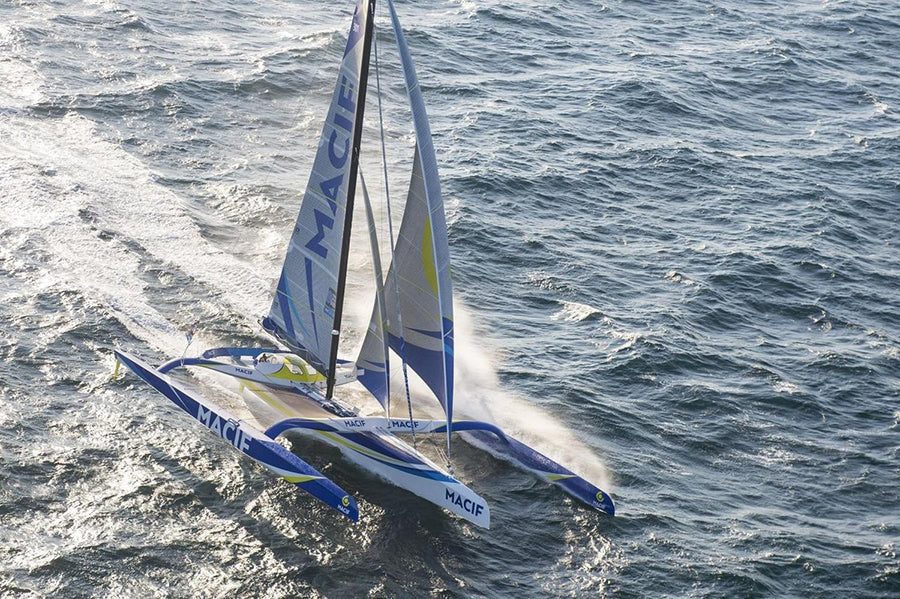
NORTH SAILS FRANCE PARÉ POUR LE RHUM
NORTH SAILS FRANCE PARÉ POUR LE RHUM
La voilerie vannetaise, filiale du numéro 1 mondial, sera solidement représentée sur la ligne de départ de la mythique transat en solitaire.
📸 MACIF / Vincent Curutchet
À Vannes, sur le plancher de North Sails France, l’ambiance fébrile de préparation des grandes épreuves a fait place au calme habituel des veilles de course. À quelques jours du départ de la Route du Rhum-Destination Guadeloupe, la voilerie dirigée par Greg Evrard souffle un peu.
"Même si notre activité est diversifiée, les années de Route du Rhum sont toujours particulières pour nous", explique le Directeur de North Sails France. Avant de dévoiler quelques chiffres évocateurs : "le Rhum représente, pour la seule année 2018, 130 voiles et quelque 6 000 heures de travail. Soit environ 2,75 millions d’euros de chiffre d’affaires".
Avec 123 marins au départ de la légendaire transatlantique qui fête ses 40 ans cette année, c’est près d’un millier de voiles que l’on peut compter sur les bateaux des six catégories présentes à Saint-Malo. Et ils sont nombreux à avoir choisi North Sails.
"Pour faire simple, notre part de marché croît avec la taille des bateaux," résume Greg Evrard qui précise : "nous fournissons 15 % des voiles équipant les voiliers de la classe Rhum mono et multi, 35% pour les Class40, 40 % en Multi50, 60 % en Imoca et 85 % en Ultime".
Chez ces derniers, cinq des six bateaux sont entièrement équipés de voiles issues du plancher de North Sails France. En Imoca, c’est quasiment la moitié de la flotte qui possède une garde-robe 100 % North Sails – dont Charal, dernier-né, – et sur les deux tiers des bateaux, au moins une voile North Sails sera embarquée à bord. On note aussi l’arrivée de nouveaux clients.
"Par exemple, Arnaud Boissières (La Mie Câline-Artipôle) revient travailler avec nous et c’est une vraie récompense"
explique Greg Evrard. La diversité des projets est un élément important pour nous, et nous souhaitons pouvoir nous adapter à tous les profils. En Class40, la voilerie gagne des parts de marché ; chez les Multi50, la reconnaissance est réelle mais le renouvellement des voiles est plus progressif.
Pour parvenir à ces résultats, North Sails France s’appuie sur une organisation fiable et efficace, orientée vers le client pour gérer toutes les demandes.
"Certains projets sont hyper structurés, exigeants et s’inscrivent dans la durée alors que d’autres sont plus dans le court terme avec des budgets restreints et passent parfois commande à peine un mois avant le départ", raconte Greg Evrard. Notre équipe expérimentée dispose de ressources et compétences nécessaires pour répondre à cette diversité de problématiques. La clé réside dans le travail en équipe entre design, technico-commercial, production et service".
La réactivité est essentielle, écouter, comprendre et agir dans un délai le plus réduit possible lorsque c’est nécessaire, l’objectif étant de mener à bien et sereinement chaque projet pour ceux qui nous font confiance.
Chez North Sails France, il n’y a pas de stars : de Yann REGNIAU à Quentin PONROY en passant par Gautier SERGENT, Yann ANDRILLON, Hugues DESTREMAU, Alan PENNANEAC’H, Julien PILATE, et d’autres, le cumul d’expériences nautiques, de palmarès, d’accompagnement de projets et d’expertises techniques est unique. C’est un panel sans équivalent permettant une réponse adaptée et de qualité à une grande diversité de demandes et une réelle créativité.
"Le genre de savoir-faire qui fait la différence, car cette 11e édition du Rhum s’annonce définitivement comme celle de l’ère des foils."
C’est la première course où le doute est levé : les foilers vont plus vite, tranche Gautier Sergent, le responsable R & D de North Sails France. La nécessité d’une refonte de nos voiles en Imoca et en Ultime s’est imposée, car avec les foils, tout change : la vitesse, l’angle de vent apparent, le couple de rappel, la géométrie, les plans de pont… En Ultime, les charges mises en jeu lorsque le bateau est lancé sont conséquentes et rendent le réglage des voiles difficiles. Les skippers sont obligés d'anticiper et d’effectuer des réglages tolérants. Depuis que le réglage du rake est autorisé en Imoca, on voit apparaître de foils de grande envergure et très porteurs, ce qui change les modes de navigation où l’on privilégie la vitesse au cap.
"Avec le 3Di™, North Sails dispose d’une technologie qui correspond parfaitement aux nouvelles contraintes imposées par ces machines hors-normes."
En termes de ratio poids/stabilité de forme, c’est ce qui se fait de mieux, assure Gautier Sergent – et le poids comme la stabilité sont des paramètres critiques dans le décollage des foilers.
"Pour ces nouveaux bateaux, le 3Di™ marie les avantages : Il est solide, ce qui est primordial pour des marins en solitaire dans les manœuvres ; il ne se déforme pas sous charge, ce qui permet à la voile de convertir la puissance en vitesse en s’appuyant sur les foils. C’est un composite, donc il se prête bien aux modifications et se révèle un atout important en phase de développement", énumère Gautier Sergent, qui a déjà la tête à la saison prochaine et aux nouveaux développements à mener après la Route du Rhum…
A propos du 3Di™
Les voiles 3Di™ sont composées de bandes filamentaires unidirectionnelles ultra-fines, pré-imprégnées d’un adhésif thermodurcissant. Elles sont disposées de manière multidirectionnelle et moulées en trois dimensions pour constituer une membrane composite flexible. Cette technologie brevetée permet de fabriquer des voiles avec uniquement des fibres et des adhésifs, sans film en Mylar. Le système de pose de bandes automatique exclusif de North Sails permet de contrôler avec précision le placement et l’orientation du matériau. Cette construction monobloc donne naissance à une aile portante qui résiste de façon homogène à la déformation.
https://www.youtube.com/watch?v=_bmbYgGePnU
READ MORE
READ MORE
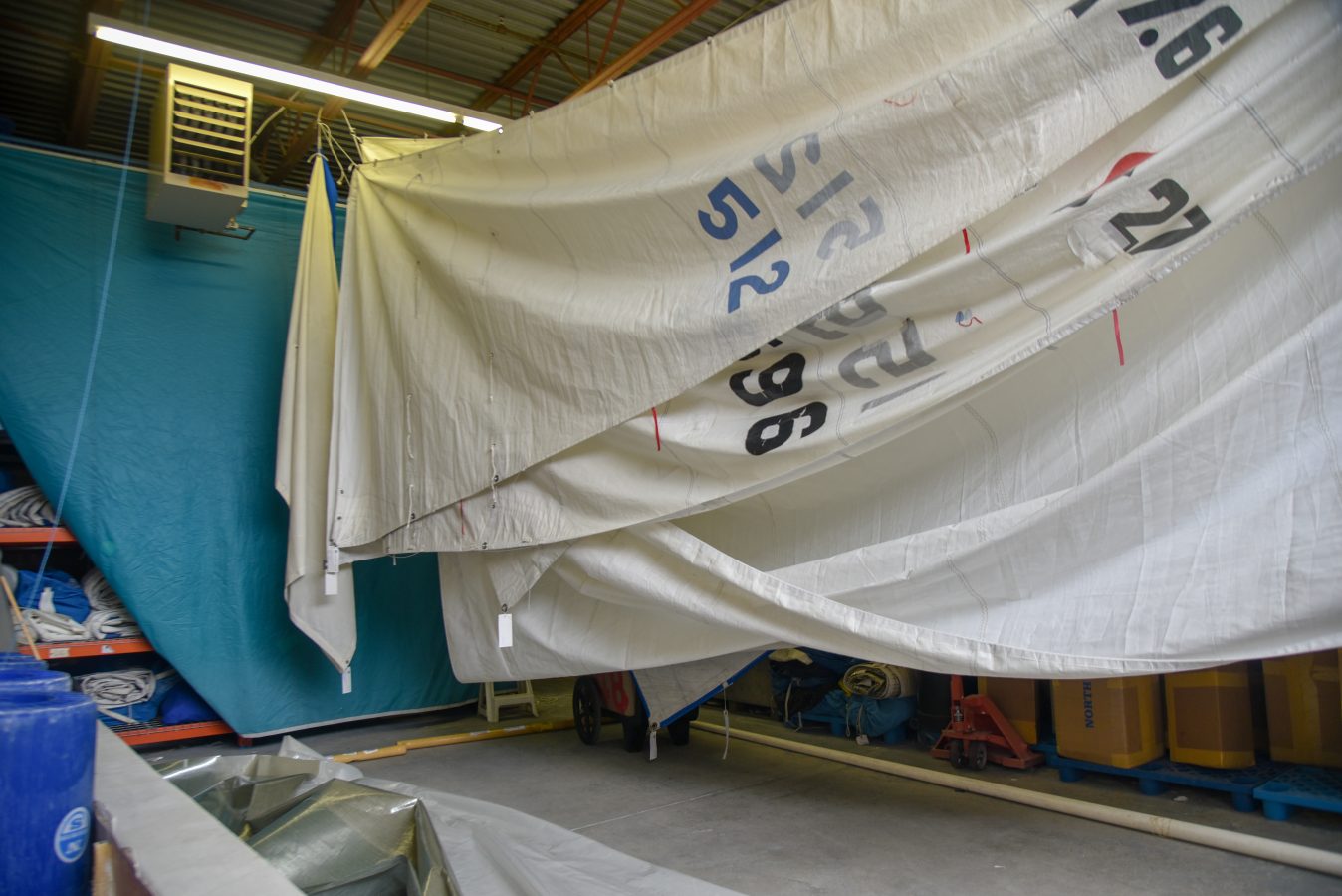
SAIL WASHING 101
SAIL WASHING 101
Everything You Need to Know About Sail Washing by Our Team of Certified Service Professionals
We often get the question: ‘how do I clean my sails’ and ‘how do I make my sails look like new again’. Our answer, without fail, is to have your sails washed. The benefits to sail washing are exponential and bring new life into your sails after years on the water.
The three main benefits to sail washing are:
Brightness
Cleaner Sail
Life Extension
Sails always come out of sail washing brighter, looking like a new sail due to the solution used. The sail itself is cleaner as the dirt is removed during the soaking process. As a result, the life of your sail is extended because you're getting rid of any mold or mildew therefore it does not rot the sail. The process itself is pretty simple and takes about a week to complete from start to finish. When sails come in we soak them in a highly concentrated formula overnight and then spray them down to remove any final bits of dirt. Once this is complete we hang the sails to dry for 2-3 days before completing our 10 point inspection. In addition to sails, we also have the ability to wash canvas! Anything from dodgers to biminis to wheel covers - we do it all. Pricing is based on the square footage of your sail, which we measure the luff and foot to calculate. Included with every sail washing is FREE winter storage in our climate controlled facility.
Let's Recap!
What does it remove?
Bugs
Dirt
Salt
Everything except oil stains
Mold & mildew
Can you wash 3Di?
Yes. Like anything that is in contact with salt water, 3Di sails can be rinsed with fresh water and dried before storing.
What material can be washed?
Dacron
Canvas
How does pricing work?
Square footage of the sail
Luff x foot
Explore more services offered by your local Certified Service team!
READ MORE
READ MORE

WHO WE ARE: ROSS BAILEY
WHO WE ARE: ROSS BAILEY
Get To Know Your Local Sales Expert
How long have you been sailing and what boats do you race now?
I sail a Lightning, and I’m pretty sure Thunder Bay has the best dinghy one design racing in Canada. I’ve sailed since I was a kid but really started crewing when I was 13. When my Dad sold his boat, part of the deal was I would crew for the new owner. After several years crewing, I built a Lightning, raced it, and have since bought many more Lightnings and other dinghies, including Lasers and Laser 2’s. I would sail whatever was competitive within driving distance, or beyond. Although I’ve sailed a fair number of keelboats, I’m pretty much a dinghy sailor, and have sailed in Lightnings, Albacores, Lasers, Laser 2’s, 505’s. Whatever fleet was strong in the area. And of course DN’s in the winter.
What got you into the marine industry?
Sailing is a pretty neat sport, although sometimes it strikes me a person needs a certain bent to enjoy it. It is fun to spread the word and foster this all encompassing lifestyle.
How long have you been working in the industry?
I actually owned a sailing store for 11 years starting in 1981. We sold everything from split rings to C&C yachts as well as repairing scratches on up to Awlgripping large yachts. As big box store hours became necessary, we took an opportunity to sell the business. Since then sailing has been just for fun, and still is.
What’s your favourite thing about sailing?
Letting the boat sail to its potential while correctly anticipating what the wind will do next is hard to beat. If you can do this a little better than the guy beside you, that’s nice too.
READ MORE
READ MORE
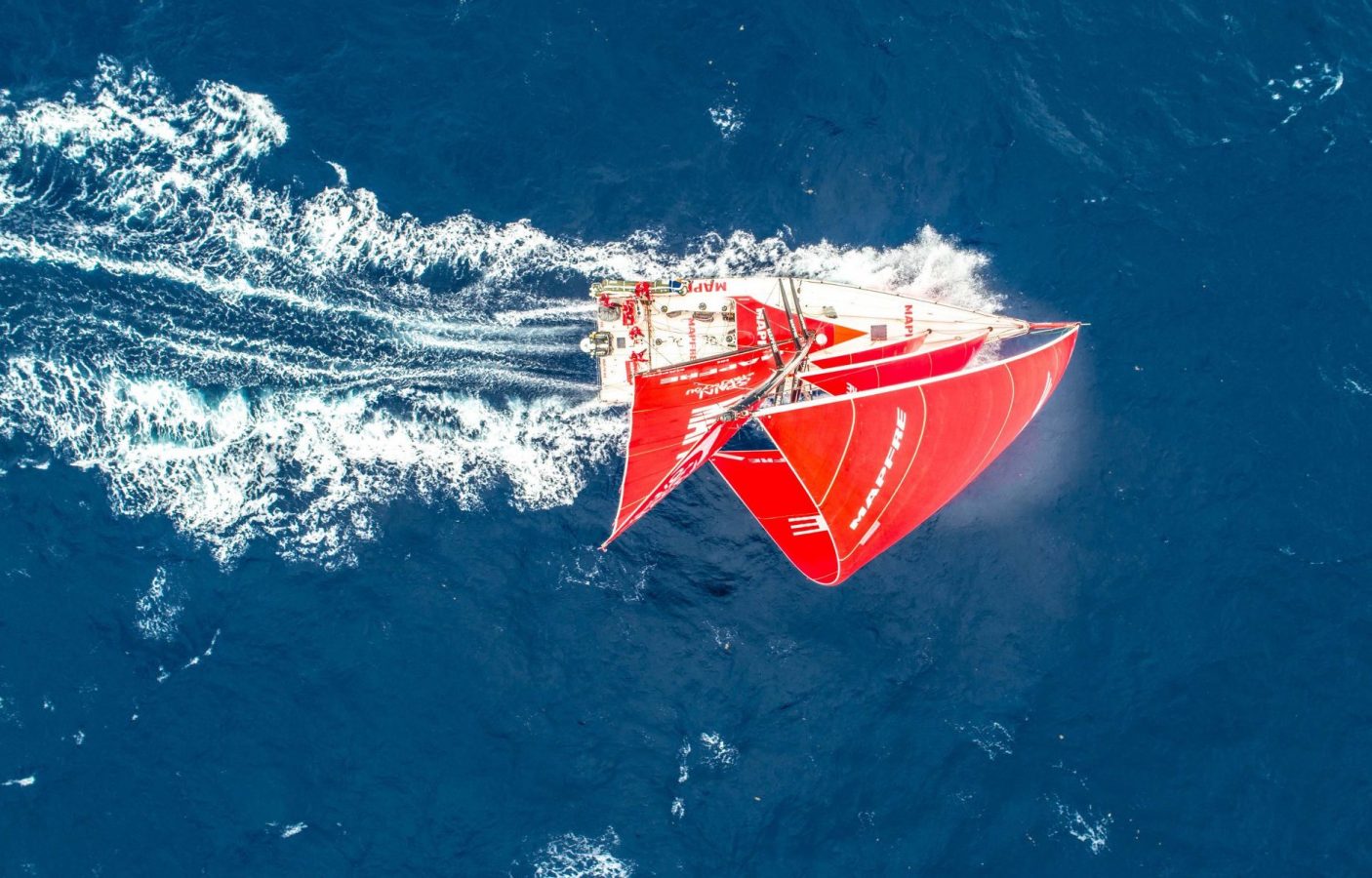
VOLVO OCEAN RACE 2017-18 DEBRIEF
45,000 MILES OF EXTREME TESTING
The North Sails Volvo Ocean Race 2017-18 Debrief
📸DongFeng Race Team / Volvo Ocean Race
The Volvo Ocean Race has long been considered a proving ground for the best offshore sailors in the world. And for the industry-leading marine companies who supply the equipment on the VO65 race boats, this race is where they get pushed the hardest to find solutions for the extreme conditions crews encounter. Such is the case for North Sails, which designed, built, and maintained the one design sail inventory for the 2017-18 fleet.
“This is the toughest race in the world, where fully professional crews push the boats, the rigs, the sails and themselves beyond what was considered to be the limit,” says North Sails President Ken Read, a skipper in two previous editions of the race. “And it’s not just for a day or two or a few hundred miles, it’s all the way around the world, over eight months of racing.”
“For us here at North Sails, there really isn’t a better way to test ourselves. This pushes all of us to stay at the top of our game.”
The intensity of the racing, especially in a one design class like the VO65, makes an event like the Volvo Ocean Race a perfect feedback loop on sail design, engineering, and manufacturing process for North Sails.
This edition of the race allowed more feedback than ever before, partly because of the increased use of drone video, which was sent directly off the boats by independent On Board Reporters, who weren’t being censored by the teams.
“From all the footage, we learned early in this race just how hard these guys and girls are trying to destroy our sails,” Read said, only half-jokingly. “It turned out to be really valuable to see how they sail the boat in real-life racing conditions, compared to what we hear during debriefs during the stopovers. Getting a better understanding of the real use allows us to think about where we can make improvements that will have a positive impact.”
Gautier Sergent was the head of the Volvo Ocean Race 2017-18 project for North Sails. He managed the design and build process, in order to supply the fleet with identical suits of sails, and then oversaw the event-supplied maintenance provider, The BoatYard, at each stopover.
“We try to prepare the sails so they will stand up to everything they will encounter, but I’ll admit, that despite this being my fifth Volvo Ocean Race, I was a little surprised when I saw some of the footage,” he said. “There were a few moments when you say, ‘Oh God… This is what they’re really doing out there.’ I think of it as the expected, unexpected moments.”
Use and abuse of the sails comes with the territory when professionals are gybing along an ice exclusion zone in the Southern Ocean, but this race also saw the crews use the sail inventory in unexpected ways. One technique the teams discovered between the design of the sail plan and the first legs of the race was to sail ‘triple-headed’, sailing slightly tighter angles downwind and flying the Code 0, J2 and J3, instead of a newly designed A3.
“The intention,” Sergent said, “based on what we heard from the sailors after the last race, was to increase the range of the new A3, which would allow them to sail slightly higher and to carry it in stronger winds. The complaint in the last race was that it was too much of a strictly downwind, VMG sail. So we wanted to make something more versatile.”
But in training, some of the teams discovered the more efficient triple-headed configuration, which offered a similar sail area with a much lower center of effort. The technique spread like wildfire through the fleet.
“We spent a lot of time testing before the race started with team AkzoNobel,” said Charlie Enright, the skipper of Vestas 11th Hour Racing and a North Sails expert. “The results were fairly conclusive. You saw the two of us sailing like that out of the start in Alicante and we were one-two in that leg pretty quickly. And that was it for the A3… maybe we should have kept our powder dry a little bit longer!”
📸Desafio / Volvo Ocean Race
Charles Caudrelier, the skipper of the winning Dongfeng Race Team, confirmed there was a lot of watching the opposition and learning from the others in the fleet.
“After the first leg, everybody realized that Vestas 11th Hour Racing and AkzoNobel were much faster using the Masthead 0 and by Leg 2, everybody started to sail like this and we never tried the A3 again!”
For Read, the saga of the discarded A3 was further confirmation of what he’s long known – good sailors still figure out how to trump computer modeling predictions.
“We designed that sail based on the feedback from the previous race and everybody tested it and they loved it,” Read said. “Everyone went into the race thinking the A3 would be a huge part of the sail inventory. Then, as it turned out, they never used it!”
“What happened is, the sailors figured out a way to sail the boat completely differently from the way anyone imagined. That’s where creative sailors always win. And even though it was an option they all wanted, they essentially made a new sail obsolete just by figuring out a better way to race the boat faster with the rest of the sails. And that technique and thinking is going to trickle down through other fleets too.”
That wasn’t the only learning in the 2017-2018 race. The new J0 was designed to limit the number of sail changes needed upwind and to enhance fast reaching, where it outperformed expectations. Yet it was not the pick in the quiver for pure upwind VMG sailing.
Perhaps the biggest success was just how structurally reliable the sail wardrobe was across the fleet. With seven boats racing 45,000 nautical miles around the world, there were no failures that could be attributed to the supplied inventory.
📸 Vestas 11th Hour Racing / Volvo Ocean Race
“I think it can be easy to overlook what happened here,” Enright said. “When you don’t hear about something, in this case, it’s a measure of success. There’s a lot of assumed resilience at this stage, which is a bit of tribute really.
“Most of the sails were carried much further up-range from what they were structurally intended to be and as the race wore on, it became obvious that if you wanted to rise to the top, you really had to push the gear and the sails were no different. And yet, across the fleet, there were no problems. You just never had to worry about it.”
It’s even more impressive considering that the most recent inventory was built with 3Di RAW, not the 3Di Endurance product that was used for the 2014-15 race. By discarding the outer polyester film on both sides of the sail, there was a considerable weight saving; mainsails were a full 8 kilograms lighter.
The sailors appreciated both the weight saving and the durability; they could focus on pushing hard, rather than protecting their limited sail allocation.
“With the 3Di RAW sails, we thought they would stand up to whatever we would see,” Caudrelier noted. “We didn’t worry about breaking the sails, but when we started the race we wanted to preserve the shape. The potential for damage is usually highest when we peel to make a sail change. The original idea was always to bear away and take care for every peel. But the race was so close that we almost never did this and I’m sure some of the other teams did it even less than we did. Even so, we knew we could trust the sails.”
“For our part we were confident that the 3Di RAW sails would survive for the race,” Sergent said. “We had used them in IMOCA before, and even though those boats aren’t pushed as hard as the Volvo Ocean Race boats, we felt the sails would hold up fine.” The IMOCA reference is timely, as the next round-the-world crewed race will feature two classes: the high-performance, dynamic, foiling IMOCA 60s as well as the one-design VO65s that have provided such close racing over the past two editions.
The move to IMOCA means the sailmaking design space is open once again. For Sergent, it’s a welcome challenge.
“As a company, North Sails is all about innovation and development and we think we do a better job when we can really show the potential of our expertise, our knowledge, and our tools.”
“We’re already starting to work on a bit of a starter package for our designers and customers,” Sergent continued.”We’ve brought together our in-house experts in the IMOCA and Volvo Ocean Race and we’ve hired Rob Greenhalgh (MAPFRE watch captain) and Charlie Enright to bring some recent, relevant sailing experience to our team.
“We’ve won every edition of the Volvo Ocean Race (since 2001-02) and been the one design sailmaker for the last two editions of the race, and in IMOCA, boats with our sails have won the last two Vendée Globe races so we think we’re in a unique position.”
📸Volvo Ocean Race
“It’s exciting and it’s going to be a big challenge,” agreed Read. “We’ve been working with IMOCA 60s for a long time and we’ve had amazing success. We feel like with our people we have the design and engineering expertise, the software and the hardware to produce a winning package for a foiling 60-footer.”
“At the same time, I feel like this is going to be one of those campaigns where you start the race saying, ‘this is my plan’ and you finish the race using the equipment completely differently to what was anticipated. So we have to stay agile.
“Don’t underestimate it. This is a big jump. These are speeds that no one has imagined before for an offshore monohull. There will probably be sail geometries that nobody has considered before this.”
“It’s a brave new world and it’s not going to be easy. But because of our experience in the last couple America’s Cup campaigns putting sails on those foiling catamarans and now working with three of the four Cup teams this time around, I think we have the right people and that our software has evolved and adapted well to meet the challenge.”
If the past is anything to go by, that’s a safe bet.
📸 Volvo Ocean Race
📸Turn The Tide On Plastic / Volvo Ocean Race
READ MORE
READ MORE

KEITH "KC" CHURCH JOINS NORTH SAILS CHICAGO
Keith "KC" Church Joins North Sails Chicago
Strengthening the Midwest with Experience and Enthusiasm
(Chicago, IL) October 23rd, 2018. North Sails is pleased to announce that Keith "KC" Church has joined the Chicago team and will work alongside Perry Lewis and Allan Terhune. KC has over 40 years of industry, and on-the-water experience to bring to his new role; most recently, he established the Quantum Sails Chicago loft.
"Having sold against KC for the last several years," said Perry Lewis, North Sails Chicago Loft Manager, "I am obviously pleased to have him 'on our side.' He is universally well-liked, and it is a real treat to have new enthusiasm in our office. I am confident North Sails customers will benefit from Keith's expertise."
Commenting on his new role, KC said,
"What excites me the most about working with Perry Lewis and the incomparable North Sails team in Chicago is seeing customers enjoy greater success with their boats every day. Whether they're preparing for a life-changing experience offshore, or moving up in position within their racing fleet, I'm looking forward to being able to offer my customers more opportunity and help them enjoy their time on the water."
KC has been an avid sailor since childhood and is a veteran of the Chicago-Mackinac Race on a variety of boats, ranging in size from a J/29 to GL70. He still cruises and races on the East Coast and Great Lakes.
KC can be contacted at Keith.Church@northsails.com or by contacting North Sails Chicago.
READ MORE
READ MORE
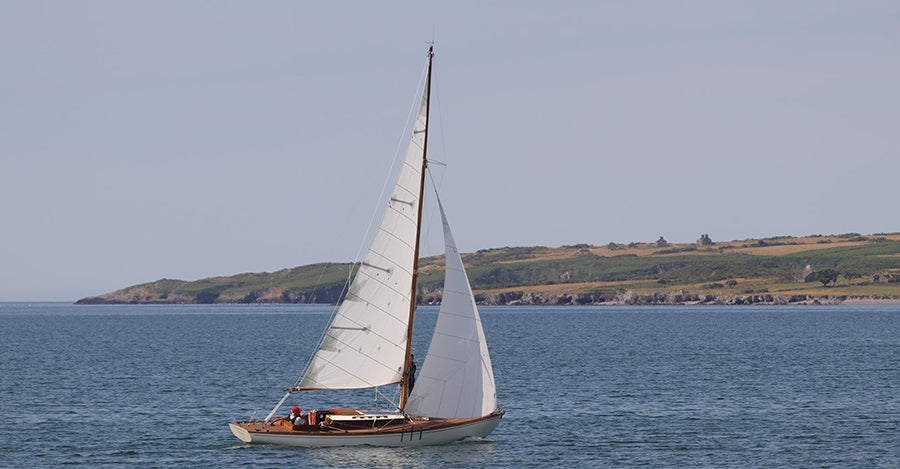
IT’S NOT ALL ABOUT RACING
IT'S NOT ALL ABOUT RACING
Classic Yacht Flying Fish fits out with North Sails to compliment their refit
Earlier this summer I had the pleasure of supplying some new sails to Flying Fish in West Cork, Ireland. Flying Fish has undergone a major refit in the very capable hands of Rui Ferreira at West Cork Boat. The boat owner was keen to retain the Classic look in his sails, as well as having a boat that sails fast.That was why he chose North Sails from our Classic division.
Short video from the Flying Fish sail trials
Classic yachts are a window to the past. Classic yacht sails add to the traditional look and beauty of a bygone era, which appeals to any sailor. Classic yacht owners and crew are caretakers of each yacht’s unique history, and coupled with their respect for tradition is a competitive spirit that is seen in classic yacht racing around the world. Discerning owners vie for honors in both performance and elegance.
North Sails celebrates these classic yachts with a dedicated range of products and a team of experts. Our Classic experts combine elegance and innovation with their modern approach to traditional sails.Because Classic sails are limited by their use of materials, improvement comes through better sail shape and construction. Intricate rigs and rigging make Classic sails more complex to build.
In order to better understand how a sail will fit the rig geometry, our specialized Classic sail designers use the North Design Suite to create 3D models of an entire yacht, producing improved performance, while respecting the Classic aesthetic. Each Classic yacht has its own story. By combining modern design innovation with historical research, we are able to reproduce the unique look of each yacht.
READ MORE
READ MORE
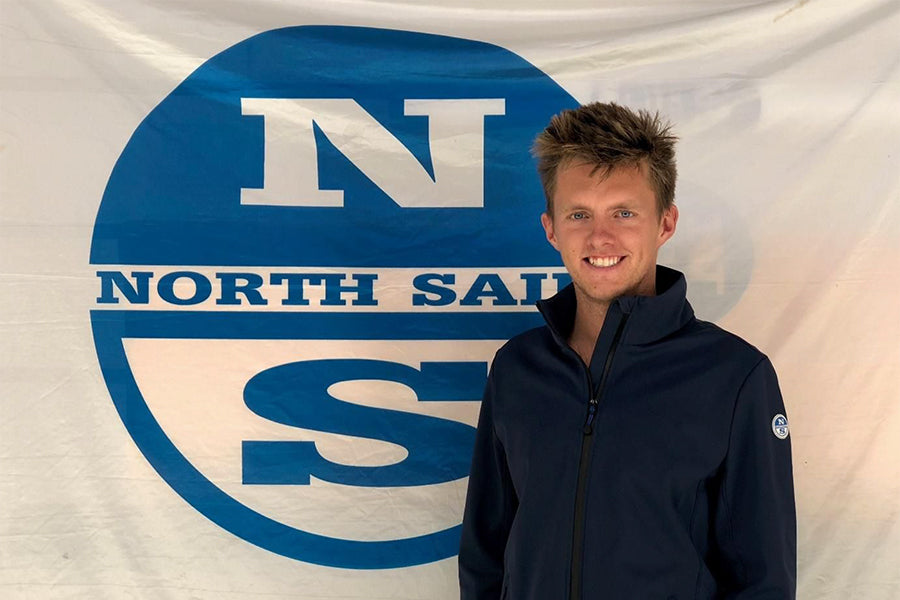
NEW TEAM MEMBERS IN MELBOURNE AND HOBART
NEW TEAM MEMBERS
North Sails are pleased to welcome Stephen 'Rowdy' McCullum and One-Design specialist Jeremy O'Connell.
North Sails welcomes Jeremy O’Connell to our team, as a member of the Melbourne Loft’s Sales and Service Team working with Aaron Cole and Ian Johnson.
Jeremy comes from a background in One-Design sailing, having spent the last 6 years as a member of the Australian Sailing Squad competing in the Laser. During this time he has worked with some of the world’s best laser sailors and coaches including Tom Burton and Michael Blackburn. Jeremy has competed in 5 Laser World Championships, and many other Sailing World Cup events around the world.
Aside from Laser sailing, Jeremy has experience in Etchells, Farr 40’s, Melges 32, Sydney 38, and J111 classes.
Jeremy says:
“I’m excited and honoured to be working with the best sail making company in the world”.
He will be at the Etchell Worlds in October, and following that will be racing at Sandringham, Royal Melbourne Yacht Squadron, and Royal Victoria Yacht Club over the Summer.
You can reach Jeremy at the loft in Melbourne or by email: jeremy.oconnell@northsails.com
Saturday, 25 August 2018, was a significant day for prominent Hobart yachtsmen Stephen 'Rowdy' McCullum and Stewart Gray, and for worldwide sail makers, North Sails.
McCullum has joined Gray as principals of 42ºSouth Marine which operates the Hobart loft of North Sales at Cambridge, (above Lewis Marine), combining their vast yachting, sail-making and business experience.
In fact, when it comes to counting up sailing experience and expertise in the marine industry, in particular sail-making, it's hard to go past 'Rowdy' and Stewart.
It's a combination that seems certain to benefit Tasmanian sailing, bringing the latest technology in making sails for types of boats, off-the-beach dinghies, one-design keelboats, ocean racers and cruising yachts.
North Sails continue to be heavily involved in the America's Cup, the Volvo Race and international one-design yacht racing and are noted for ground-breaking design and sail construction technology, including the creation of 3Di™ moulded sails, claimed to be the world's fastest and most durable sails, for racing and cruising.
Both 'Rowdy' and Stewart began their working lives as sail-making apprentices in Hobart and soon became involved in International racing campaigns that took them overseas for further design and sail-making projects, as well as expanding their sailing careers, mostly in maxis and America's Cup contenders.
"As a sailmaker I later worked with Grant Simmer on America's Cup campaigns and with the late Graeme 'Frizzle' Freeman sailing on Windward Passage II," 'Rowdy' said on the eve of their commercial partnership coming into force yesterday, "The Windward Passage campaign took 'Frizzle' and myself to Europe and the USA to work with the Italian America's Cup challenge before returning to Tasmania to join Bob Clifford with the maxi ketch Tasmania which took line honours in the 50th Sydney Hobart," Rowdy added.
McCullum, who is vice commodore of the Royal Yacht Club of Tasmania, has competed as a key crew member including watch captain and sailing master, in 22 Sydney Hobarts Stewart Gray returned to Hobart six years ago after being involved as a professional yachtsman and sailmaker in two America's Cup campaigns and three Volvo Ocean Races. He also won two World Championships in Maxis and TP52's.
"And like Rowdy, I did my apprenticeship as a sailmaker, but with Ian Ross at Hood Sails in Sandy Bay," he said. Back in Tasmania, I've owned my own business, 42ºSouth Marine, for the past six years, setting up the loft as a North Sails agency where we supply racing or cruising sails for anything from Optimists to maxi yachts. However, a big part of our business is making sail covers, canvas's and powerboat clears," Gray added.
"By joining forces and combining our sailing and sail-making expertise, we plan to develop the business in line with the expansion of the sport of yachting, both in cruising and racing keelboats and in dinghy classes in Tasmania," McCullum said. "We will be in a greater position to not only supply a quality product, but to give an even greater level of advice and customer services to all areas of the marine industry," said Gray, expressing great confidence in the new partnership.
North Sails, through its Worldwide resources and expertise can provide yacht owners with everything from cross cut dacron sails built from our in-house milled dacrons, through to 3Di™ sails.
"3Di™ is the only sail like it on the market, it is stronger, lighter and more resistant to environmental factors than laminate string sails and we couldn't be more excited to bring it to the local market", emphasised Gray and McCullum.
Written by Peter Campbell
READ MORE
READ MORE
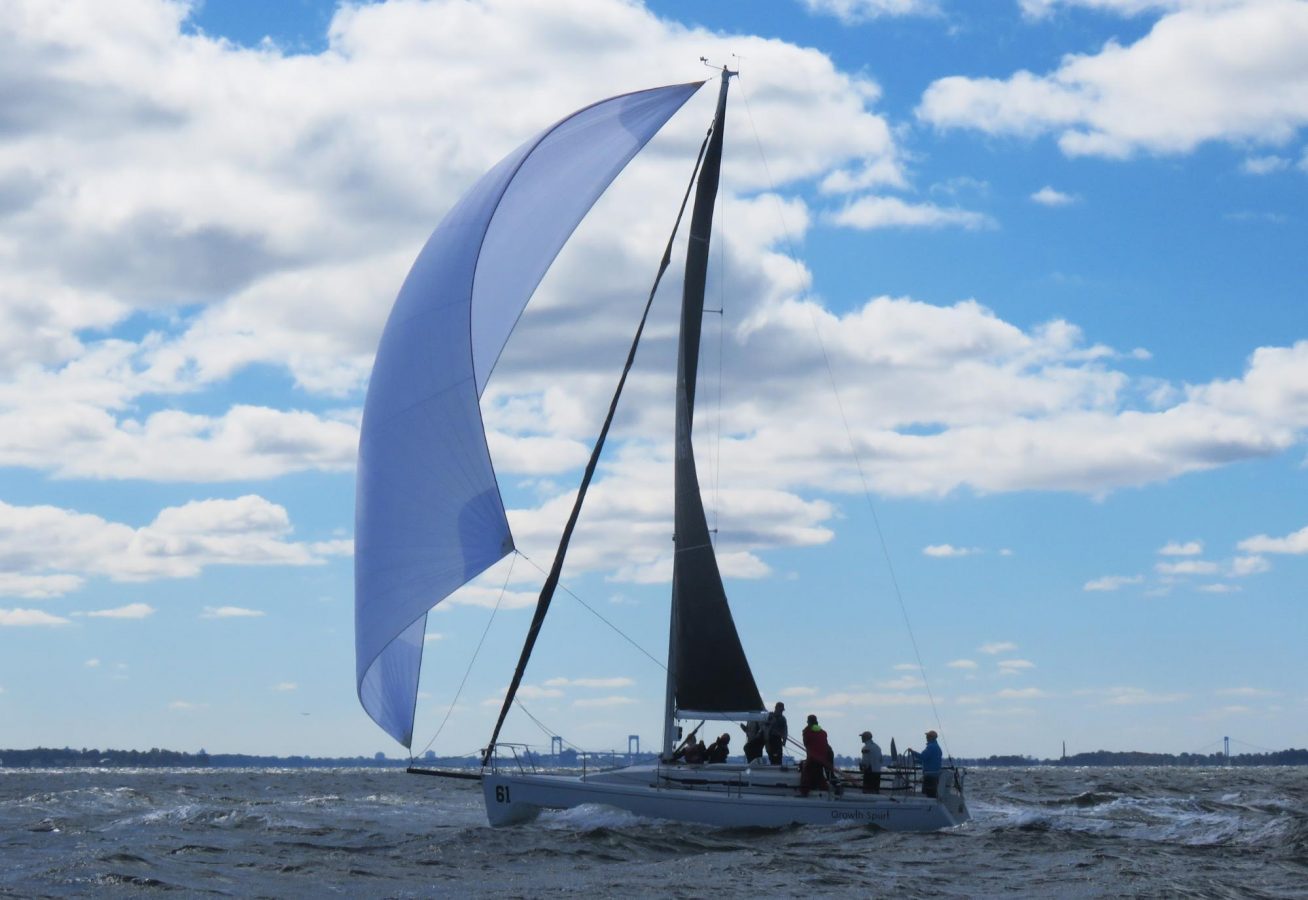
J/109 NORTH AMERICANS INTERVIEW
J/109 North Americans Interview
Growth Spurt Wins the Corinthian Title and Second Overall
Larchmont Yacht Club hosted the 2018 J/109 North Americans, with twenty teams in attendance. We caught up with John Greifzu, owner-driver of Growth Spurt, who won the Corinthian title and finished second overall.
John, congratulations on a great event! A pretty windy regatta. Any lessons in trim or technique from what you were accustomed to doing upwind? Downwind?
No kidding. With the big breeze, we kept our starts simple and talked a lot about our maneuvers to minimize potential surprises. Upwind, once we were able to achieve the right amount of twist in the sails, we found the speed we needed. Downwind, it was about sailing low and staying in control. Crew weight placement became even more important.
What kind of rig tensions were you setting up for the breeze on Friday?
Friday was our best day. The North tuning guide was a great start for rig tension. But when we tried going upwind, we realized the rig needed to be tighter. We put additional turns on the cap shrouds and D1s until the helm was balanced. The first upwind leg for each of Friday’s three races was really the key to making gains on the day. We were going fast-forward while other boats were going sideways, as they were overpowered and not flat.
The first top mark looked like a traffic jam most races. How did you manage to escape?
We approached the windward mark with a plan, and picked our spots to be aggressive. After giving away a podium spot at the American YC Fall Regatta with one bad decision at a windward mark, we were determined not to do that again.
We saw some boats using Tackline Drops, others preferring Jibe Drops and Weather Drops, and a couple using Strings. What was your preferred spinnaker drop? Any lessons to share from that?
We did not favor any certain spinnaker drop technique. We practiced them all going into the regatta, so our tactical options were always open. To be honest, with that many good boats on the course, we didn’t know what kind of takedown would be needed until we were close to the leeward gate.
Which sails did you use? How were you feeling with the new HAi-7 jib from North?
Our main was a North 3Di RAW from 2017. Going into the regatta it had 26 race days on it, and was still fast. On Thursday, Friday, and Saturday we used the new HAi-7 jib. It worked well in as little as 9-knots TWS and up through the range of gusts we saw on Friday. On Sunday, we used a 3DL AP jib from 2017 and that powered us in the lighter stuff. We also used the new A2-3 spinnaker for most races.
“Growth Spurt in about 20 knots of wind with the top of the main inverted, the bottom of the main working, and an appropriate angle of heel. An example of fast trim in heavy air ”, said North U expert Bill Gladstone.
Who sailed with you? How did the team prepare for the NAs?
We had an amazing group of Corinthian sailors who have put in a lot of time on the boat. Our official tune up was the American YC Fall Series, but I have logged a lot of miles with this team. Two of the guys, Richard Born and Joe Quick, I have been sailing with since our days at Tulane in the early 2000s. Rich trimmed jib and Joe handled pit on Thursday. The other crew members joined our program at various times since I bought the boat for the 2016 season.
Michelle Miltenberger was amazing on mast and bow assist, and Chris Mangieri, who I met on another J/109, was all over the boat helping with jib and spinnaker trim. Malcolm Kriegel, a recent Tulane alum from New York, has been sailing with us for three years and he trimmed spinnaker. I met our bowman, John Hughes, when he was assigned to my boat for the Storm Trysail Foundation Intercollegiate Regatta a couple years ago.
Ellen Quinn started racing with us last year and even moved work flights around to make it in time to run pit Friday through Sunday. Jon Singsen started sailing with us this year. He trimmed main and called great tactics.
Congratulations Team Growth Spurt
What’s next for Growth Spurt?
This NA’s was our last event for the season, but we’re already talking about 2019! The initial schedule will have Block Island Race Week, the J/109 North Americans in New Bedford, and other one design events in Newport and Long Island Sound. Placing second and winning the Corinthian North American Championship was great, but we’re looking forward to mixing it up again with our friends on Loki (three-time North American champion).
© Howie McMichael
READ MORE
READ MORE
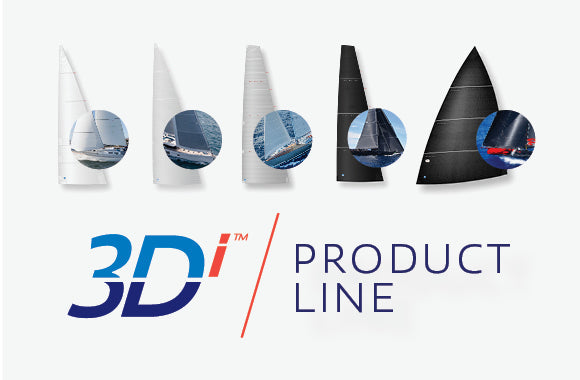
INTRODUCING OUR 2019 3Di PRODUCT LINE
Development of 3Di began ten years ago and has continued at a rapid and accelerating pace ever since. 3Di is the sum of multiple technologies exclusive to North Sails, making it the ideal platform for creating new types of sails for a wide range of boats—from small boats to superyachts—around the world. For 2019, the unprecedented performance and longevity advantages of 3Di are available to everyone: family cruisers to circumnavigators, and club racers to pro sailors.
The Pure Performance, Boatspeed Benchmark
3Di RAW is the highest performance, lightest weight race sail on the market, setting a new benchmark for speed and shapeholding. Boats with 3Di RAW sails absolutely command podiums worldwide in the most competitive events and classes. For 2019, North has applied this advanced technology to a new product tier combining 3Di’s signature shape holding with an easy to read, easy to trim, and notably long-life racing sail that is perfect for Club Race sailors with smaller boats.
Around the World or Around the Race Course
The most rugged 3Di sail available, 3Di Endurance is engineered for extreme durability and shape holding whether racing or offshore cruising. François Gabart’s 3Di Endurance mainsail already had 45,000 miles on it BEFORE he set off on his successful Around The World Solo Record. This range of 3Di products feature highly protective outer filament tapes, creating a tough structure while retaining the exclusive shape stability of 3Di.
A New Class Of Superyacht Cruising Sails
New for 2019, Ocean provides high strength, reduced weight, and supreme reliability for cruising superyachts. Everything North Sails has learned as the preeminent builder of superyacht sails for more than three decades has been combined with current state of the art 3Di technology. Serious cruising yachts over 60 feet can now benefit from the proprietary blend of materials and exclusive engineering of 3Di Ocean. These sails are lighter, tougher and and easier to handle than any string sail counterpart.
The Dacron Cruising Sail Reinvented
Throughout 2018, 3Di NORDAC – a 100% polyester 3Di sail – has created a cruising revolution. 3Di NORDAC was named a Pittman Innovation Award winner by SAIL Magazine, and over 2500 3Di NORDAC sails have been delivered to glowing reviews from our customers. For 2019 our 3Di production capacity has been increased to meet demand for this innovative and exceptional product ideally suited to small to mid size cruising boats. All sailors want faster sails that last longer. 3Di NORDAC delivers.
3Di Composite Sailmaking for Fast Code Sails
The myriad benefits of 3Di now extend beyond upwind inventories and are available to sailors looking for state of the art asymmetric sails. 3Di Downwind proved its value during the recent Volvo Ocean Race where all sails, upwind and down, were 3Di (no more need to carry sewing machines onboard!). Cable Free Furling is now possible with our unique Helix Luff, where directly integrated 3Di structure eliminates the need for a separate, inefficient, cable.
READ MORE
READ MORE

COASTAL CLASSIC RACE - NORTH SAILS BRIEFING
COASTAL CLASSIC RACE - NORTH SAILS BRIEFING
Top Tips from the North Sails Team for this Years Coastal Classic Race
When it comes to the Coastal Classic, New Zealand’s most iconic race, the North Sails team have done it - and won it. With more than 100 Coastal Races between them, we asked the sales and loft team for their top tips on how to make the most out of the dash up the coast, no matter which division you’re in.
Andrew Wills, Sales and Marketing Manager
Keep up the communication in the build-up to the race. We talk on the phone among the key crew the week before the start, looking at how the weather’s shaping up and what our strategy might be, what course would be best and what sails we think we might use. On the day of the race, share your thoughts with the whole crew, so everyone knows the plan.
Concentrate on getting the best possible start, it’s a 120 mile race, but the start is critical. Get out there early and get your transits sorted, then do a few runs through the line to work out where you want to start. This is especially critical for a downwind start because you need to work out which sail you are going to be able to carry and where that line is going to take you into that first gybe by North Head. If you’re in a smaller boat, position yourself to windward of the bigger boats around you so you don’t immediately get rolled.
As you head up the coast, keep eyes out of the boat. Conditions are always changing and you need to know what’s going on around you. There’s nothing worse than sailing yourself into a hole. The crew on the rail can make a big contribution, keeping an eye out for wind and sea conditions and watching what other boats are up to.
Matt Kelway, Sales
Break the race into four parts and think about the expected weather, tides and sail changes and approach into the next segment for each. It’s a very dynamic coastline, so you need to be thinking ahead. Think about:
Exiting Auckland - start line to Kawau Island
Kawau Island to Sail Rock/Hen and Chickens. Make a decision early about going inside or outside the Hen and Chickens.
Setting up your approach to Cape Brett. Do you want to come in close or from out wide?
Cape Brett to the finish. Quite often there’s totally different breeze inside the Bay to what you had up the coast.
Make sure you are pushing the boat 100 per cent of the time. This race is an awkward length - not a day race for most crews, but not long enough to go into a full watch system. Your speed team, the trimmers and drivers need to be on their A game the whole time.
Be prepared for the evening. Before it gets dark, check your halyards and sheets are all clear, get any sails you might need ready, and have torches and headlamps handy.
Ben Costello, Service Manager
Have your positions on the boat clearly sorted before the start. For manoeuvres, have everyone in a set position so it’s clear who’s doing what.
No one can drive or trim the whole way, so make sure you rotate your helm and trimmers at least every couple of hours. It’s too easy to steer for too long, so make sure you change before you lose concentration. Don’t swap everyone at once, let the new helmsperson get settled before changing the trimmers.
Matt Steven, Sales
Decide before the start on a default strategy based on weather and tides, like heading offshore, hedging the west or protecting a side of the course. If you need to make a decision while racing and you are unsure what to do, or if the team is divided, default to the strategy.
Before changing drivers, have the new helm sit with the person who is steering for a while, talking through what’s been happening and what angles and speeds they have been sailing, so there is a smooth transition.
Richard Bicknell, General Manager
Make a plan before you get to Bream Bay and the Hen and Chickens, so you don’t end up in no man’s land, too high or too low. Think about wind speed and angles and decide whether to take the longer route outside - which might be faster, depending on conditions - or sail less distance inside.
If you need a rest, take short breaks rather than long ones and keep your head in the race. Stay hydrated and remember to eat, it’s more than a sprint, so you don’t want to fade away.
Guy Hewson, Production Manager
Always be aware of what the next sail change might be. Have your sails stacked accordingly and have sheets ready to go.
Make sure all your sails are in good condition and have been serviced before the race, so you have all your options ready to go if you need them.
To everyone racing, good luck!
READ MORE
READ MORE
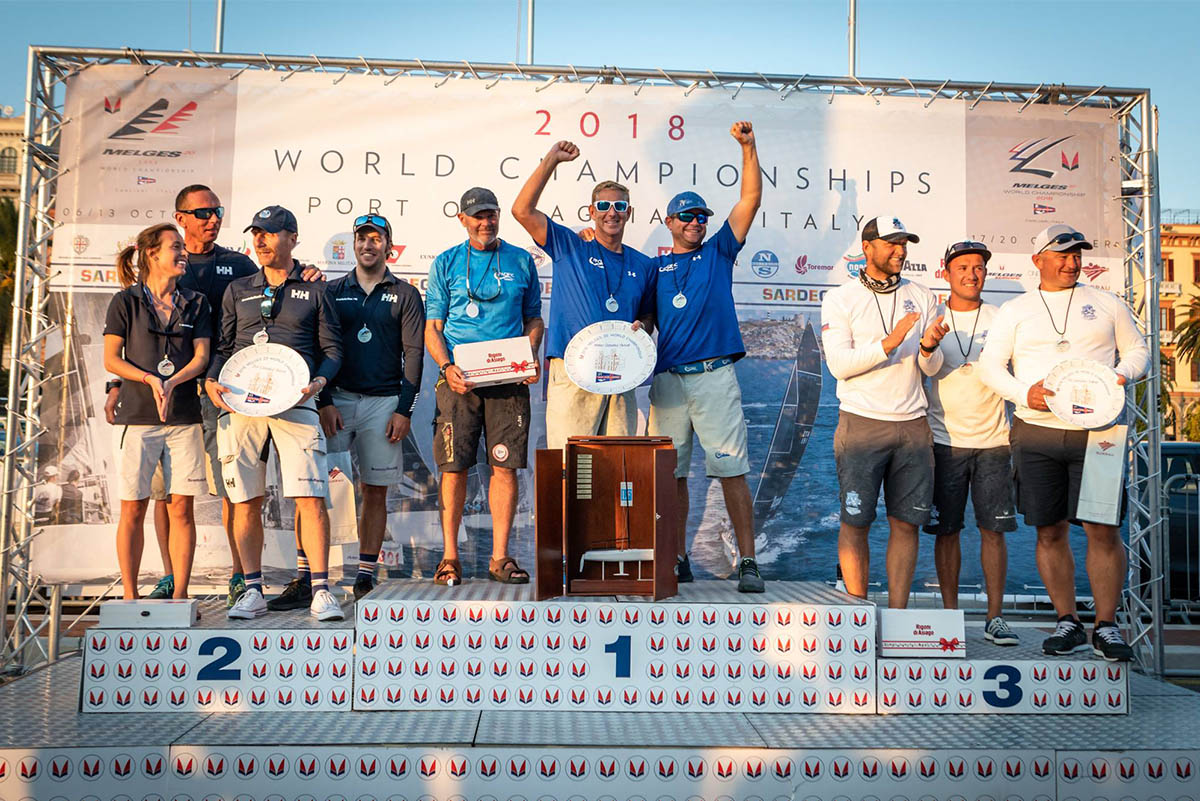
DREW DOES IT AGAIN
DREW DOES IT AGAIN
Pacific Yankee Team Wins Second Consecutive Worlds
📸 Mauro Melandri / Zerogradinord / Melges 20 World League
Drew Freides, Morgan Reeser, and Charlie Smythe have added themselves to the #NSVictoryList once again by winning the 2018 Melges 20 World Championship in Cagliari, Italy. A bullet in the final race moved them ahead of Brontolo Racing, securing the regatta win for these defending champions.
We caught up with Drew after he returned from Cagliari and he had a lot to say about how he got to where he is now.
“I’d be missing something if I didn’t thank North Sails because Tim Healy, Per Andersson, Vince Brun, and the One Design team have just been great. We would never have done what we did without their help along the way.”
: Morgan Reeser, Drew Freides, and Charlie Smythe with Coach Ed Adams. 📸 Mauro Melandri / Zerogradinord / Melges 20 World League“We owe a lot of our success to our coaches, too. Vince Brun was all about boat setup, Ed Adams was our weather and current guide, and having them both was really helpful. Ed also helped us with strategy and how that relates to how we sail, making him a great benefactor to our team.”
According to Drew, it all came down to the last jibe on the final downwind leg. “We were in second and we needed to put one point between us and Russian Bogartys. Meanwhile the Italians on Brontolo Racing were coming in strong so we had to keep passing boats. We jibed on the Russians coming into the finish line to move from second to first, a call made by our tactician Morgan Reeser. It was a last minute call, and Charlie wasn’t 100% ready but pulled it off; unfortunately it all happened so fast, Morgan got caught behind Charlie’s elbow. So in the end, the only thing we lost was Morgan’s nose.” Blood and sweat paid off in the end.
“In this fleet,” Drew continued, “you have to have the ability to dig back. It’s one thing to win a world championship, but it’s much harder to defend it because you’re in the spotlight and everybody is looking at everything you do and trying to match it.”
📸 Mauro Melandri / Zerogradinord / Melges 20 World League
Asked what he likes about the Melges 20, Drew commented, “There is just no boat out there like the Melges 20. It sails like a skiff-dinghy. It takes about 12 knots to get on a full plane and just rip! Also they have really complicated rigs and there’s a lot of nuance to the rig setup. Thanks to Vince and everybody, we really had our settings down.”
Drew also likes the need for constant improvement.
“The competition keeps you on your toes. We’ve been doing everything we can, trying to develop the 3Di Sails with our North Sails experts, and it worked well. Our competition is close behind though, so we still have to keep pushing. Personally, I never feel like I am good enough.”
📸 Mauro Melandri / Zerogradinord / Melges 20 World League
With sail purchases limited by year and activity level, sail selection is very important. “You want to have the best options. You start the season out with three sails, then after you’ve competed in four events, you get one additional button. Then you are permitted only two more for the Worlds.” Drew wanted to keep his options open, so he waited to pull the trigger on getting his sails measured in until he was 100% sure.
📸 Mauro Melandri / Zerogradinord / Melges 20 World League
Brontolo Racing started the season with using the new Mi-2 3Di mainsail, so Drew matched them. He felt going into the worlds 100% matched to his prime competition would make it a fair match. Regardless of the match, he is pleased with 3Di and how it adds to the program.
“We can honestly say we love 3Di. You can definitely see they last much longer, and that shape will hold and never fail. It never distorts, it looks perfect, and sets up like a wing. It’s phenomenal.”
“No matter what, we can hang with the front of the pack upwind. As soon as we round the top mark we rely on our speed, which is unbelievably fast. Downwind we use the standard Melges 20 models: the R2 Runner and V4-2R Reacher. Some of our competitors think we use something special, but it’s just the standard inventory available to everyone.”
📸 Mauro Melandri / Zerogradinord / Melges 20 World League
Drew has been sailing with the same team for a couple of seasons now and is proud of his program. “My motto has always been if you surround yourself with the best people, it gets a lot easier. We have the best team. We’ve got a good dynamic in the boat. We understand where the rig should be in any given wind conditions. From there, we go sailing and focus on sailing, not on anything else.”
📸 Mauro Melandri / Zerogradinord / Melges 20 World League
“North Sails is good at making sails. They want to create the best products for everyone. I love the company and I believe the sail technology far exceeds the rest, by far. With all the support we’ve received, it’s made a huge difference and has made this massive commitment a lot of fun.”
📸 Mauro Melandri / Zerogradinord / Melges 20 World League
📸 Mauro Melandri / Zerogradinord / Melges 20 World League
📸 Mauro Melandri / Zerogradinord / Melges 20 World League
Full results
READ MORE
READ MORE

NORTH SAILS ER STOLT AF AT KUNNE PRÆSENTERE VORES 2019 PRODUKTLINJE
Udviklingen af 3Di begyndte for ti år siden og er fortsat i et hurtigt og accelererende tempo siden da. 3Di er summen af flere af North Sails egne teknologier, hvilket gør det til den ideelle platform for at skabe nye typer sejl til en bred vifte af sejlere rundt om i verden. Fordelene ved 3Di med hidtil usete præstationer og lang levetid er nu i 2019 til rådighed for såvel mindre både til superyachter, tursejlere til jordomsejlere og de lokale kapsejlere til de professionelle.
Rendyrket performance, når bådfarten tæller
3Di RAW er det kapsejladssejl på markedet med højeste ydeevne og letteste vægt, der sætter nye standarder for fart og formstabilitet. Både med 3Di RAW dominerer podierne over hele verden i de mest konkurrenceprægede sejladser og klasser. Til sæson 2019 har North Sails anvendt denne avancerede teknologi til en ny produktgruppe, målrettet de mindre både, der sejler kapsejlads på klubniveau. Produktgruppen kombinerer 3Di’ signifikante formstabilitet med det, at sejlet er nemt og trimme, og den lange levetid.
Rundt om jorden eller kapsejlads på fjorden
Den mest robuste 3Di sejl til rådighed, 3Di Endurance er konstrueret med ekstrem holdbarhed og formstabilitet for øje, der holder uanset om det er kapsejlads eller offshore sejlads. François Gabarts 3Di Endurance storsejl havde allerede sejlet 45.000 sømil, før han startede med det på sin succesrige Around The World Solo Record. Denne gruppe 3Di-produkter har et ydre med meget beskyttende filamenttape, der skaber en hård struktur, samtidig med at 3Di sejlet beholder sin enestående formstabilitet.
En ny gruppe af tursejl til superyachts
Ny produktgruppe i 2019 er Ocean. Tursejl, der giver høj styrke, reduceret vægt og højeste pålidelighed til superyachts. Alt det North Sails har lært i mere end tre årtier som den førende producent af superyacht-sejl er blevet kombineret med den nuværende topmoderne 3Di-teknologi. Turbåde over 60 fod kan nu drage fordel af North Sails unikke blanding af materialer og eksklusiv teknik i 3Di Ocean. Disse sejl er uden sidestykke, lettere, mere holdbare og og nemmere at håndtere end nogen laminatsejl.
Dacron tursejlet - genopfundet via 3Di-teknologien
I løbet af 2018 har 3Di NORDAC - et 100% polyester 3Di sejl - skabt en tursejler revolution. 3Di Nordac blev hædret med Pittman Innovation Award af SAIL Magazine, og over 2.500 3Di NORDAC sejl er blevet leveret til fremragende anmeldelser fra vores kunder. I 2019 er vores 3Di produktionskapacitet blevet øget for at imødekomme efterspørgslen efter dette innovative og ekstraordinære produkt, der er ideelt til mindre og mellemstore turbåde. Alle sejlere ønsker hurtigere sejl, der holder længere. 3Di NORDAC leverer.
3Di komposit-teknologi til hurtige codesejl
De mange fordele ved 3Di strækker sig nu ud over krydssejl, og er nu tilgængelige for sejlere, der kigger efter det ypperste asymmetriske sejl. 3Di Downwind viste sin værdi under det seneste Volvo Ocean Race, hvor alle sejl til både kryds og læns, var 3Di (ikke mere brug for at have symaskiner om bord!). Kabelfri furling-sejl er nu muligt med vores unikke Helix Luff, hvor den direkte integrerede 3Di-struktur eliminerer behovet for et separat ineffektivt kabel.
READ MORE
READ MORE
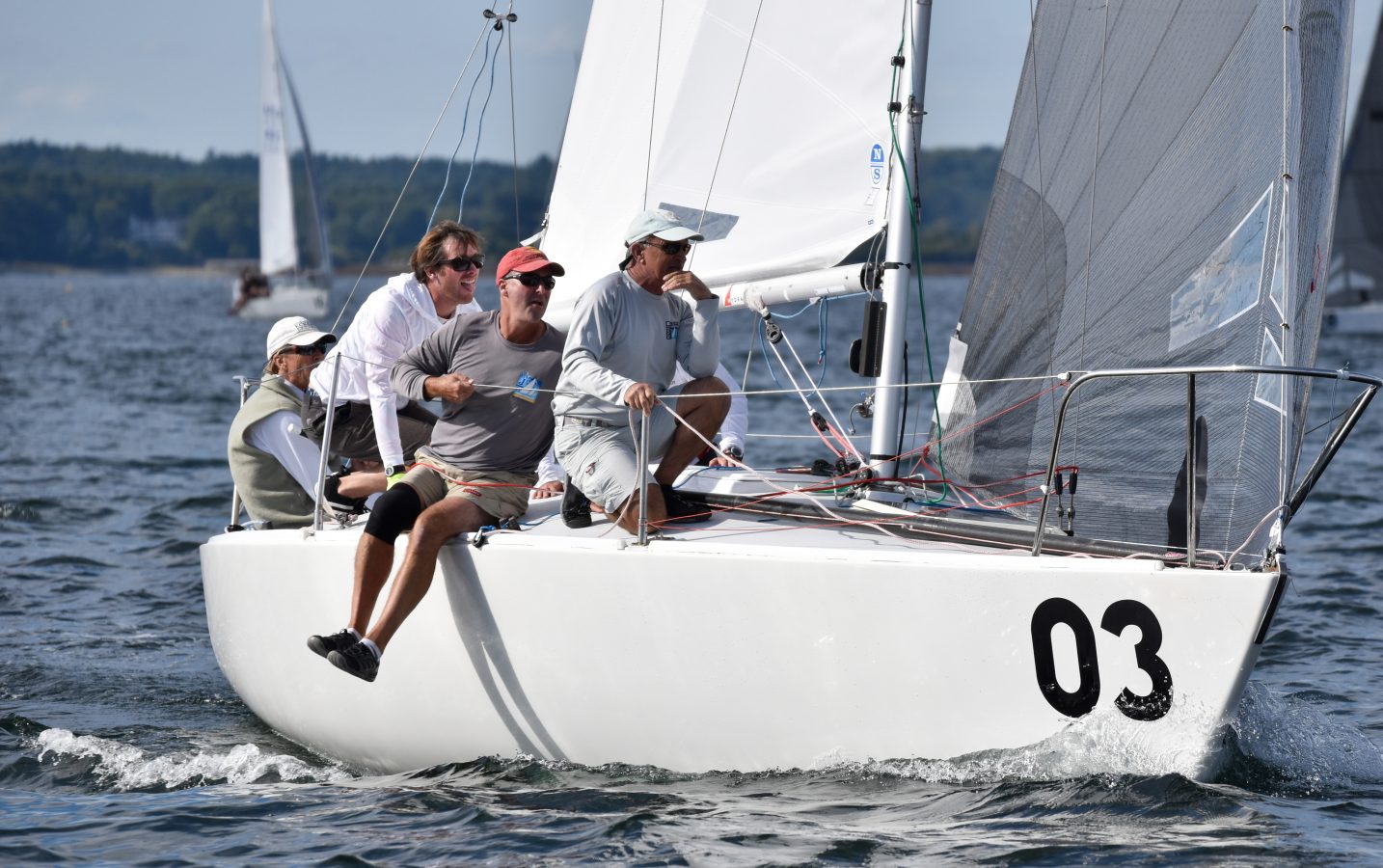
J/24 NATIONALS: MANAGING STRONG CURRENTS & LIGHT AIR
J/24 NATIONALS: MANAGING STRONG CURRENTS & LIGHT AIR
Class Veteran Robby Brown Shares His Top Secrets
© Chris Howell
The 2018 J/24 US Nationals were hosted by the Portland Yacht Club in Casco Bay. We caught up with Robby Brown, skipper of the winning team Angel of Harlem for some insights:
You have been sailing J/24s for years on and off, can you tell us a little about yourself, how you got into the class and what keeps you coming back?
I have been in the J/24 class since the Mid 80’s. I began sailing J/24s regularly around 1995. While I sail in multiple classes, I love the competitive nature of the J/24 class and its relative affordability of keeping a World Class boat going. Over the years, the class has always offered top level competition, that’s the biggest reason that keeps me coming back. Combined with the great atmosphere of the competitors and the class, I have always enjoyed my time spent campaigning the J/24.
Who crewed for you at the Nationals and how long have you all been racing together?
We have been working hard to put together a World Class team in advance of the Worlds in Miami. We are sailing together more regularly with team consistency than we have ever been able to manage in the past.
Our team consists of a group of sailors whose lives have been connected for many, many years as sailors that enjoy sailing together. The biggest factor gluing the team together at this point is my partner Mark Liebel. Mark and I are full partners in our pursuit of a top finish at the 2019 Worlds. We began sailing together nearly 15 years ago when I first moved to the Tampa Bay area. Over the years, we have developed a great friendship and ability to work together based on trust and truly enjoying working together in pursuit of team goals.
Ron Hyatt has been my most steady contributor with his rock solid bow work. He and I have been regularly sailing together for 15 years as well. Ron is a huge contributor in every aspect of campaigning the boat. He will help with deliveries and is always working hard on the dock to insure that we are prepared for a championship outcome.
Arthur Blodgett has developed into a huge asset in the trimming position and has been able to find the time to join us on a fairly regular basis ever since he graduated from college sailing as an award winning sailor. He was my best sailor when I was the collegiate coach at Eckerd College. We have been working together for almost 10 years.
Brian Simpkins was our fifth for the Nationals. He was new to the team but nevertheless a key to team success. Brian and Mark have been sailing together for many years, and I can’t say enough good things about the job he did stepping right in and making a huge contribution to our team success. We are definitely hoping he will join us some more in the future as a regular part of the team.
There is a fair amount of current where the Nationals were sailed this year, how did you figure it out so quickly?
Mark and I have sailed at the venue in the past and Arthur is from the area. We knew enough to have great respect for the need to figure out the current. We are all experienced at figuring out new venues. I am a high school sailing coach who regularly faces new venues with my teams. Mark is active in many classes and is diligent in his contributions to insure we have a good plan for the venue we are sailing in. In the end, I feel we did more homework on a daily basis than the competition, being able to process this information to insure success.
Here’s what we did:
We were determined to be the first boat off the dock, sailing the course area and examining trends and identifying course-specific opportunities to make gains.
We were checking current all of the way to the course area first thing in the morning. All of the lobster traps were great current tell tails.
We sailed both sides of the first beat in the morning to find the strong current. We examine where the water was rougher as an indicator of strong current.
We played the ever changing current more than wind shifts.
We made start strategies to get to the good current first and it paid.
What was your starting game plan against 50 other boats?
Hope and pray! This was true to some degree.
On the first two races we got caught up in crowds and were flushed at the start. Lesson learned, for the rest of the regatta we started toward the end that we liked, with a priority of staying away from the crowded areas. We would start just to one side or the other of the crowded area and still be as close as possible to where we wanted to be. With some good fortune, we had some great luck with starts in the last three races and were able to dig ourselves out and salvage the best possible finishes. Being able to escape the pack, and get out to the lead, we converted our good starts to 2-1-2 finishes, closing our gap to snag the victory.
We are constantly applying great focus to insuring we get good starts. The dynamics seem to be ever changing from event to event as far as getting off the line well. We feel that starts are the biggest benefactor of our ability to sail well at the Midwinters, North Americans, and finally the Nationals. Our big fleet start experience is definitely paying off.
You seem to have a pretty good light air gear, how did you set up your boat?
We definitely thought about this a great deal. We have been honing our speed for years and feel we have a particularly good gear in the light air. While we enjoy good boat speed in all conditions, the things we feel we do better than most in light air are a result of years of tuning, working with our North Team representatives, and living in an area where we get a lot of practice in light air. I noticed we did a couple of things differently than the most:
Primarily, we keep our mast butt well aft in the light air conditions.
This gives us the forestay sag that we utilize to really keep the boat powered up in light air. We never go below 20/15 on the rig. Rather, we push the mast butt back to get a really full genoa shape. This requires lots of scallops in the luff, as well as putting on backstay a little at times to pull some of the sag if the breeze gets bigger puffs or just picks up a little. We feel we are better pulling a little backstay on than we are if the rig was softer than 20/15. We felt like the puffs were a little too much for our tune. This has proven very successful for us
Secondly, we are weight farther forward and down in the boat more than anyone else.
Going downwind our spinnaker trimmer is one or two steps up on the cabin house, our tactician is standing on the cabin sole all the way forward in the hatch. Additionally our bow person and mast person go below and the mast person shifts from port to starboard side to balance the boat right up against the bulkhead and the bow person is in front of the bulkhead. I truly feel this was our secret to really superior downwind speed. We also had our fifth below upwind when it was very light. If he’s not hiking on deck, he is below against the bulkhead,
What sail designs do you use and why?
All of the North products are superior. Our choice for more years than I can count are Newport Upwind (Fat Head Mainsail, DX-7TT Genoa) and San Diego downwind (FR-2 Spinnaker). Rather than switching around between designs, we feel we have been able to get tremendous performance from these sails by sticking with the designs and honing our tuning of these sails over these many years.
Others have had great success with the many good product offerings available from North. We have been tempted to try something different a few times over the years, but we are always rewarded by our “if it ain’t broke don’t fix it” mentality. This has allowed us to develop our tuning model to a better than most performance through consistency.
What’s next on your sailing schedule?
We have a couple of great regattas on our schedule to close out the year here in Florida. We are preparing for the Southeast Regionals and Districts which will surely bring the best competition to the starting line. From there, we are working toward our best performance at Midwinters at our home Yacht Club, Davis Island.
We are planning to sail the St Pete NOODs as a tune up for the Midwinters and are hoping to coordinate tuning opportunities in addition to sailing as many of the major championships next year as possible. We hope to find good regattas in addition to the Nationals in Rochester, maybe some more NOOD regattas or the Newport Regatta. Please reach out to us if you would like to tune at these events. We are always welcoming tuning partners and opportunities.
© Chris Howell
READ MORE
READ MORE
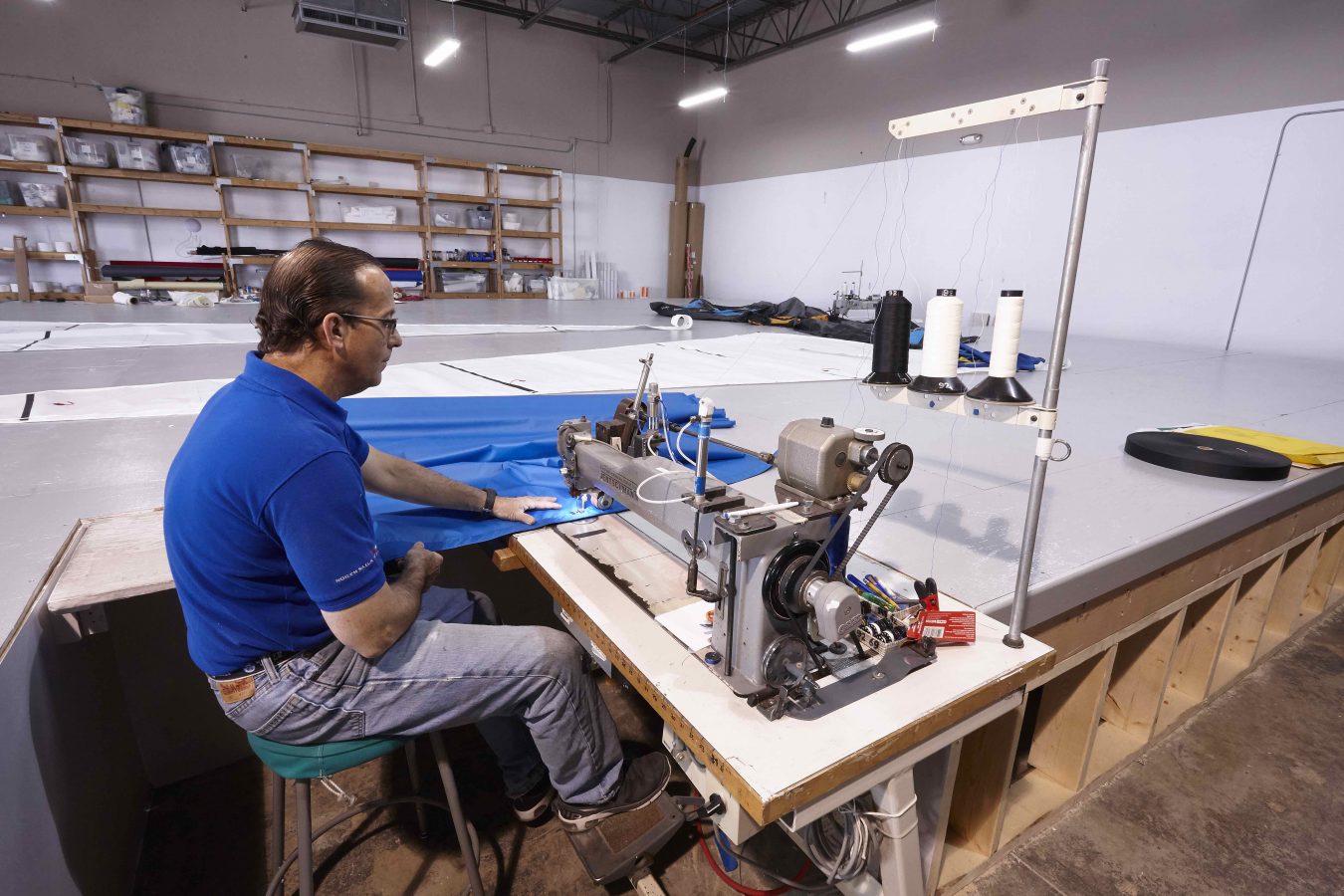
LOOK INSIDE A LOFT: DETROIT
LOOK INSIDE A LOFT: DETROIT
Service Manager Bill Lesnek At Home In A New Location
North Sails Detroit’s service manager Bill Lesnek has been building and repairing sails (and kites) in the Detroit metro area since 1980. Recently we caught up with Bill to learn why he’s excited about the new loft, the magic of customer loyalty, and why a small loft is best when it has background support from North Sails.
First though, he took us back to 1985, when he met Lowell North while helping the company founder recut a jib for the Mackinac Race. “Lowell had a number three that needed more material in the luff,” Bill explains. “We were doing a new sail, so we cut three feet off that jib and added it to the jib Lowell had—a pretty huge recut. He asked me if I sailed and I said well no, I spent most of my youth playing baseball and football.”
At Kenwood Cup in Hawaii the next year, Bill ran into Lowell again. “He says, ‘Oh yeah you're Bill from Detroit, the baseball player.’ He remembered! He is quite a character and real fun to work with.”
Bill has worked for other sailmakers since the 1980s, but he always came back to North Sails.
“It's the best product on the market for new sails,” he says. “And the service work, it's just a higher level of standards compared to everybody else, you know? North people care a little more, and put a little more heart and soul into what they do.”
That’s helped by coordination and communication between different North lofts to help solve problems and deal with backlog. When needed, Bill and his team have gone to other lofts to help out, and they know they can count on having that help when they need it in Detroit. Working collaboratively means sharing best practices, which raises everyone’s skill level.
Over the years, Bill has developed a very loyal customer base. “I was born and raised to be honest and truthful with people. A lot of people remember me too, because I've been working on their sails forever. And they know I'm consistent in what I do.”
Specialized Loft Space
Bill is excited about starting fresh in a new loft space, which he and his team have purpose-built for sailmaking. “We get to do it our way, and we've got this organized really well. It's convenient for us; we're not wandering all over the place. It will make us more productive in the long run.”
For sail dropoff and pickup, they built racks right by the door. “You won't have to search all over the building for them,” he says. On the loft floor, they set up a raised table big enough for three sewing machines. “And we have a lower floor where we can spread out sails for 70 footers; we've already got a couple of inventories dropped off already. It's all at machine height, which makes the sewing a lot smoother and nicer.” It also makes for better ergonomics, because workers can perform their jobs without getting beat up. After almost four decades on the floor, Bill says, “Your knees get a little tender. ” For what he calls the “really huge sails,” there’s a section of floor that can be removed.
Each sewing machine has its own specialty. “We have a three step machine which is strictly for nylon work. That's a long arm machine, so we can do big sails. We also have two everyday machines for luff tapes and edges and patches, one in the canvas room and one on the main floor. And we have a heavy duty Adler that sews through all the thick layers and webbing.” Keeping those machines running in top notch condition is a high priority, which is why they have a designated maintenance person. “We dealt with over 2000 sails last year, and a busted machine would’ve been a nightmare.”
Kite Cult
Bill works on smaller items as well. “We have a separate room just for canvas work. Boom covers or genoa socks, we could build that. I also have a cult following of kiteboarders here in the southeast area. Anytime a kite rips, they search me down and get it fixed.”
According to Bill, working in a small loft as part of the worldwide North Sails company is the perfect combination. In addition to the Blue Book, which sets standards for manufacturing, there are a lot of avenues to learn from other lofts about best repair practices. “I've been doing it the same way for so long that it's just a reflex,” Bill says, “It's good to learn new procedures and different avenues.” That’s especially important as sail manufacturing evolves, because it makes it easier to keep up with technological improvements.
“3Di are beautiful sails and they're durable,” he points out. “We haven't run into too many repair situations with those yet. But I know in the future it'll be nice to say, ‘We have state of the art equipment and we'll repair it to the standards of the company.’ My customers trust what I do, so they'll feel confident getting the service done.”
Short Season
Detroit’s sailing season is compressed into four months, with July’s two races to Mackinac (Chicago and Port Huron) the summer highlight. Now that boats have started to come out of the water for the winter, the loft’s focus has turned to storage and repairs. “As long as they pay their invoice within the first month, they can have free sail storage for the winter. Customers don’t have to keep them in their basements and by spring time, they're ready to go.”
Thanks to the new location, Bill’s team will also be able to wash sails in-house. “We have a section in the back of the building which will be perfect, a nice addition to our business.”
After almost four decades, the loft’s seasonality is predictable for Bill. “You get the proactive groups that'll see you in October, and the spring rush guys who are knocking at the door in April. We pretty much know what to expect.”
As service manager, he is grateful to have a really strong team in Mike Stark and Karl Kuspa. “Mike and I work really well together. He's got a lot of experience, and we're on the same page. We all get along like a little family over here. Which is the way it should be, you know?”
READ MORE
READ MORE
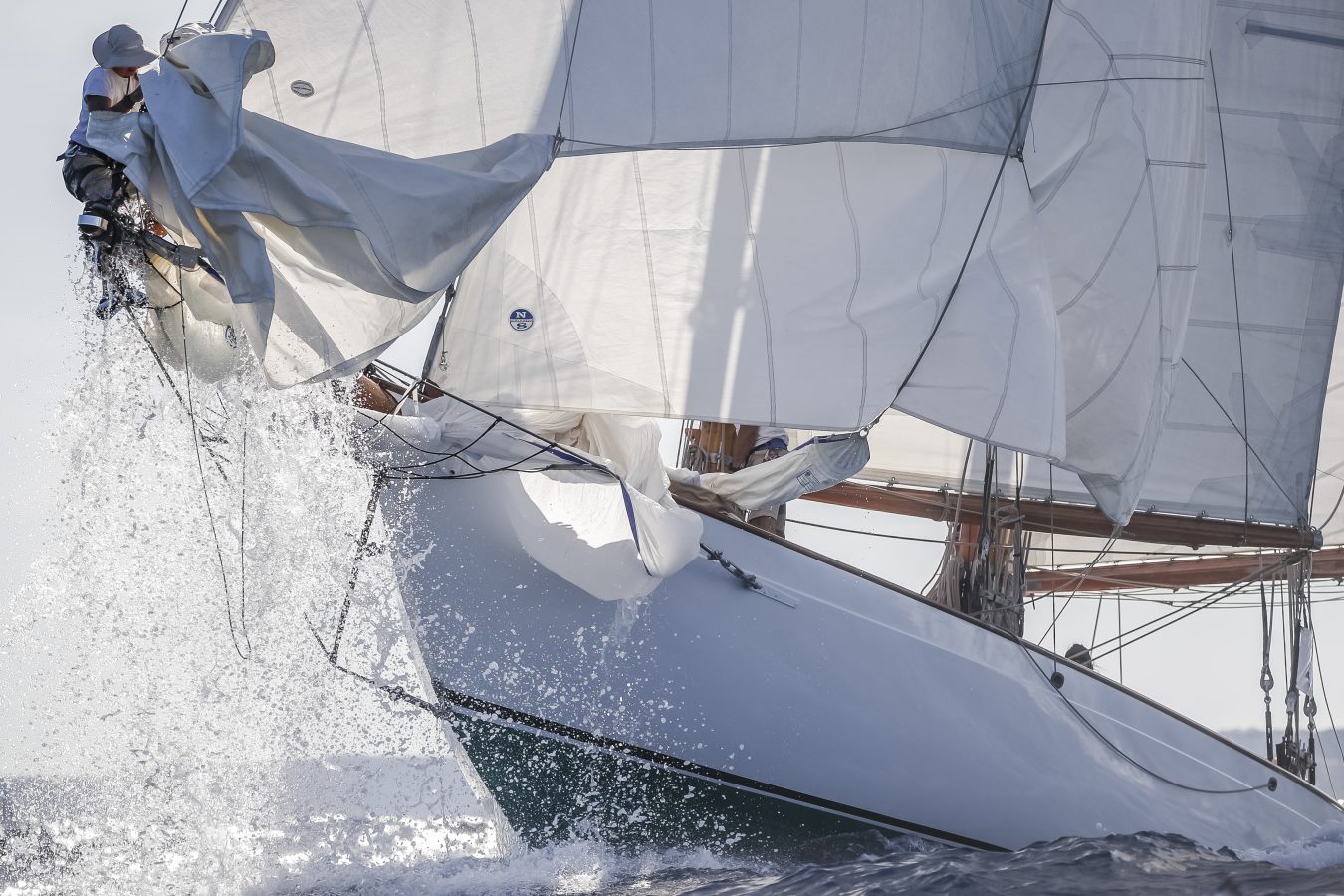
SCOREBOARD SUCCESS AT ST. TROPEZ
The 2018 Les Voiles de St. Tropez provided participants from with a beautiful week of racing to cap off another successful summer season in the Med. North Sails clients had an excellent showing, placing on the podium across 14 divisions, ranging from modern to classic racing yachts. Les Trophées were awarded to clients and their teams who out-performed within their division.
2018 Les Trophées :
Trophée BMW : Wally 77 Lyra – Terry Hui
Trophée Edmond de Rothschild (IRC C): Gladiator – Tony Langley
Trophée de la Ville de Saint-Tropez : Cannonball – Dario Ferrarri
Concours de boules : Lady Jo: Pierre Roinson
Trophée Loro Piana : Topaz – Peter Holmberg
Trophée Kappa : Flo D’ Orient – Bernard Coquelet
Trophée Marines de Cogolin : Alice – Simon Henning
Trophée Le Byblos : Kelpie – Olive Pelham
Trophée SNSM : Rowdy – Timothy Goodboy
Trophée Air France : Elena of London – Steven Mc Laren
Trophée Suzuki : Creme Anglaise – John Rainger
Congratulations to all of our clients for their excellent performance throughout the week.
📸 Carlo Borlenghi
📸 Carlo Borlenghi
📸 Carlo Borlenghi
📸 Carlo Borlenghi
📸 Carlo Borlenghi
📸 Carlo Borlenghi
📸 Carlo Borlenghi
📸 Carlo Borlenghi
READ MORE
READ MORE
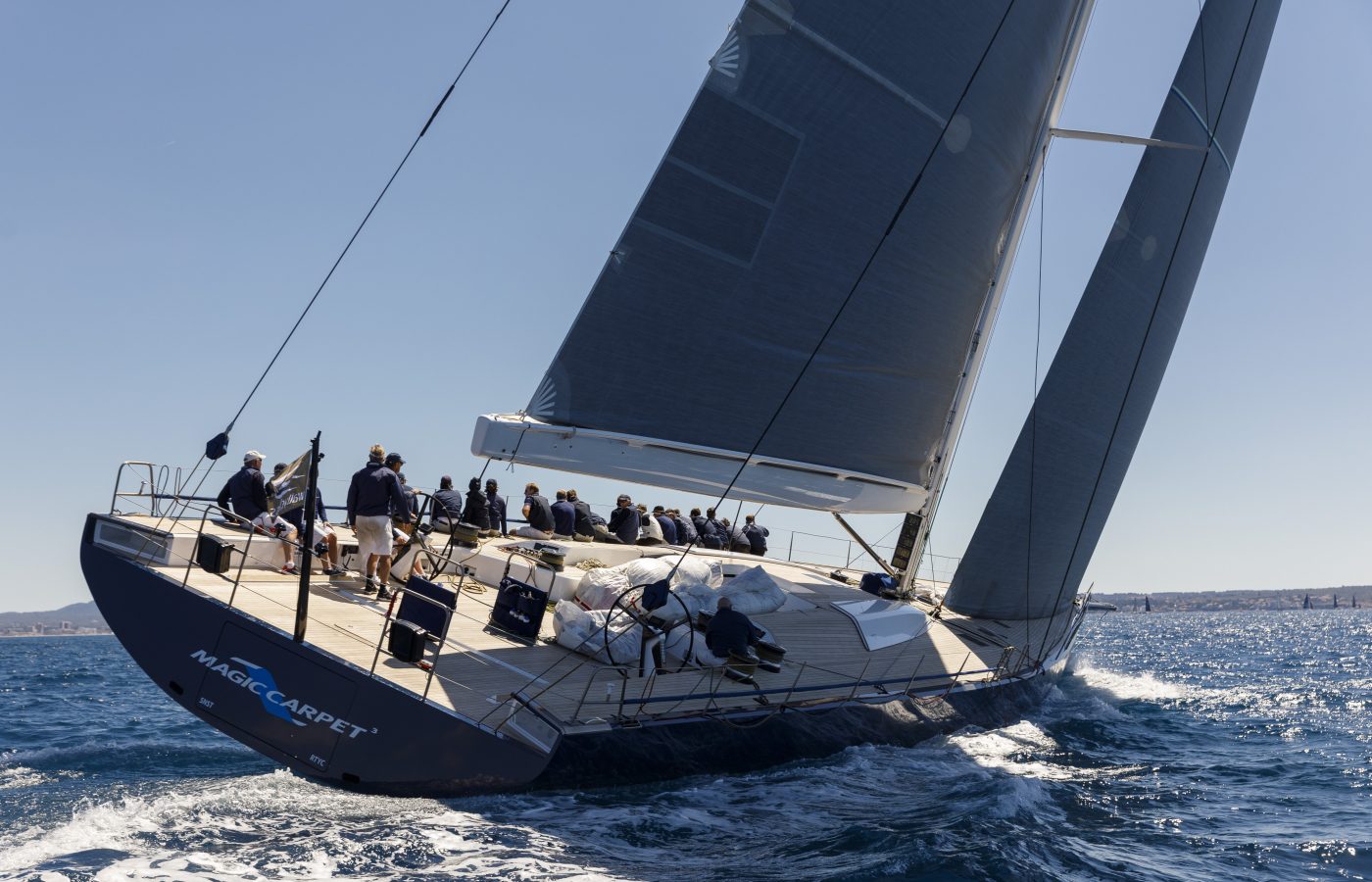
WALLY CLASS TROPHY
Since 1994, the Wally Class has grown into one of the most elegant and aesthetically pleasing yacht racing fleets. The Wally Class Trophy, equally elegant and donated by North Sails, is awarded to the boat with the most points after four events: Palma Vela, Rolex Giraglia, Maxi Yacht Rolex Cup & Maxi Worlds, and Les Voiles de St. Tropez.
READ MORE
READ MORE
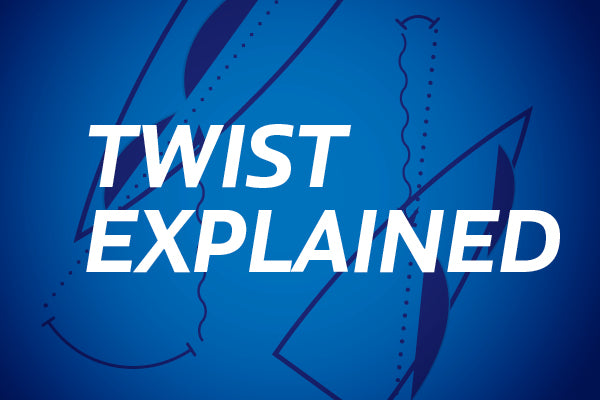
UNDERSTANDING TWIST
TWIST EXPLAINED
By Bill Gladstone
In Upwind Sail Power, we defined the three sources of sail power: Angle of Attack, Depth, and Twist. Now we’ll focus on twist and how it impacts power and performance.
Twist
Twist describes the relative trim of the sail from high to low. A sail has lots of twist when the upper part of the leech is open, while a closed leech has little twist. Increasing twist reduces power because it opens the upper part of the sail.
More Twist = Less Power.
As with increasing angle of attack and depth, reducing twist adds power up to the point where the sail stalls and power drops.
More on Twist
Twist is necessary because due to less surface friction, the wind is stronger aloft than at the surface; this phenomenon is called wind gradient. True wind and boat speed combine to create apparent wind. The stronger true wind up high creates both a stronger apparent wind and a wider apparent wind angle aloft. The upper part of the sail must be twisted out relative to the lower part of the sail to match the more open apparent wind angle.
The sailmaker designs twist into the sail to match the average wind gradient and then we trim to fine-tune it, in order to match wind and sea conditions as well as our performance goals. Fine tuning twist is one the most powerful trim adjustments we can make.
The right twist for…
Light Air
Wind gradient is most pronounced in light air, so extra twist is needed. In addition, sails are prone to stalling in light air, and twist helps prevent that by easing flow. Likewise, a deep sail shape – used for extra power in light air – is prone to stalling, so trimming with plenty of twist is appropriate in light air. So, though it may be counter-intuitive – since adding twist reduces power – we trim with quite a bit of twist in light air to prevent stalling.
Moderate Air
In moderate winds, we can trim harder without stalling flow. This harder trim with less twist adds power and improves pointing.
Heavy Air
As the boat gets overpowered, we flatten sails and add twist to spill power. Thus, we sail with more twist in light air and heavy air and the least twist in moderate air.
Twist and Performance
Generally, less twist will help pointing while more twist is faster, with a wider steering groove. For example, coming out of a tack sails are initially trimmed with extra twist (to prevent stalling when slow), with final trim coming only as the boat accelerates to full speed. Likewise, in wavy conditions we trim for extra twist, to a more forgiving steering groove as the boat gyrates in waves. Reducing twist, on the other hand, maintains full power at a high pointing angle when sailing in smooth water.
Depowering your sail plan
Power can be reduced either by increasing twist or flattening the sail (or both). Which is best? In wavy conditions, it’s better to depower by adding twist, while in smooth water conditions flattening the sail is recommended.
Often some combination of twist and flattening is best. One of the challenges of trimming is achieving the correct total power, and the correct mix of power by adjusting depth and twist to match the conditions. Boom vang and cunningham can help to achieve the balance.
© Copyright Bill Gladstone
READ MORE
READ MORE

MET TROTS KONDIGT NORTH SAILS ONZE 3Di PRODUCTLIJN VOOR 2019 AAN
De ontwikkeling van 3Di begon 10 jaar geleden en is sindsdien in een versneld tempo voortgezet. 3Di is de optelsom van meerdere exclusieve North Sails technologieën, waardoor dit het ideale platform is om nieuwe zeiltypes te creëren voor een brede doelgroep zeilers over de gehele wereld. Voor 2019 zijn de ongekende prestatie- en duurzaamheidsvoordelen van 3Di beschikbaar voor kleine boten tot superjachten, weekend cruisers tot wereldomzeilers, clubracers tot professionele zeilers, en alles wat hier tussen zit.
Het Dacron Toerzeil Is Opnieuw Uitgevonden
In 2018 heeft 3Di NORDAC – een 100% Polyester 3Di zeil – een revolutie veroorzaakt in toerzeilen. 3Di NORDAC heeft de Pittman Innovation Award, uitgereikt door Sail Magazine, gewonnen en tot op heden zijn meer dan 2.500 3Di NORDAC zeilen geleverd aan onze zeer tevreden klanten. Voor 2019 is onze productiecapaciteit uitgebreid om aan de vraag voor dit innovatieve en exceptionele product voor kleine en middelgrote toerschepen te voldoen. Alle zeilers willen snellere zeilen die langer mee gaan. 3Di NORDAC levert precies dat.
.
Snelheid Zonder Compromis
3Di RAW is het lichtste en best presterende wedstrijdzeil dat verkrijgbaar is en een absolute benchmark voor snelheid en vormbehoud. Boten met 3Di RAW zeilen domineren wereldwijd podia in de meest competitieve evenementen en klasses. Voor 2019 heeft North Sails deze geavanceerde technologie toegepast in een nieuwe productgroep, waarin het excellente vormbehoud gecombineerd wordt met een makkelijk te trimmen, duurzaam wedstrijdzeil dat perfect is voor Club Race zeilers met kleinere tot middelgrote schepen.
.
Rond de Wereld of Rond de Boeien
Het meest duurzame 3Di zeil. 3Di Endurance is ontwikkeld voor extreme duurzaamheid en vormvastheid voor wedstrijd zeilen of offshore cruisen. François Gabart’s 3Di Endurance grootzeil had reeds 45.000 mijl gevaren VOORDAT hij begon aan zijn succesvolle Around The World Solo Record. Deze productgroep 3Di zeilen bevatten een buiten laag van beschermende filament tapes, waarmee een robuuste structuur gecreëerd wordt zonder dat de exclusieve vormstabiliteit van 3Di aangetast wordt.
Een Nieuwe Dimensie voor Superjacht Cruise Zeilen
Ocean is een nieuwe productgroep voor 2019 en levert een zeer sterk, licht en extreem betrouwbaar zeil voor cruise superjachten. Alles wat North Sails geleerd heeft als producent van superjachtzeilen bij uitstek in de afgelopen drie decennia is gecombineerd met de meest recente 3Di technologie. Grote cruise jachten langer dan 60 voet kunnen nu gebruik maken van de gepatenteerde exclusieve technologie en mix van materialen van 3Di Ocean. Deze zeilen zijn lichter, sterker en makkelijker te hanteren dan alle vergelijkbare laminaat zeilen.
3Di Composiet Zeilen, Nu Ook Downwind
De ongekende voordelen van 3Di gaan nu verder dan aan de windse zeilen en zijn nu ook beschikbaar voor zeilers die state of the art asymmetrische zeilen zoeken. 3Di Downwind heeft zichzelf bewezen tijdens de meest recente Volvo Ocean Race, waar alle zeilen, zowel aan de wind als voor de wind, gemaakt waren in een versie van 3Di(en dus geen naaimachines meer aan boord hoefden meegesleept te worden!). Kabel loos rollen is nu mogelijk met onze unieke Helix Luff, waar direct geïntegreerde 3Di structuur de noodzaak voor een externe, inefficiënte kabel wegneemt.
.
READ MORE
READ MORE
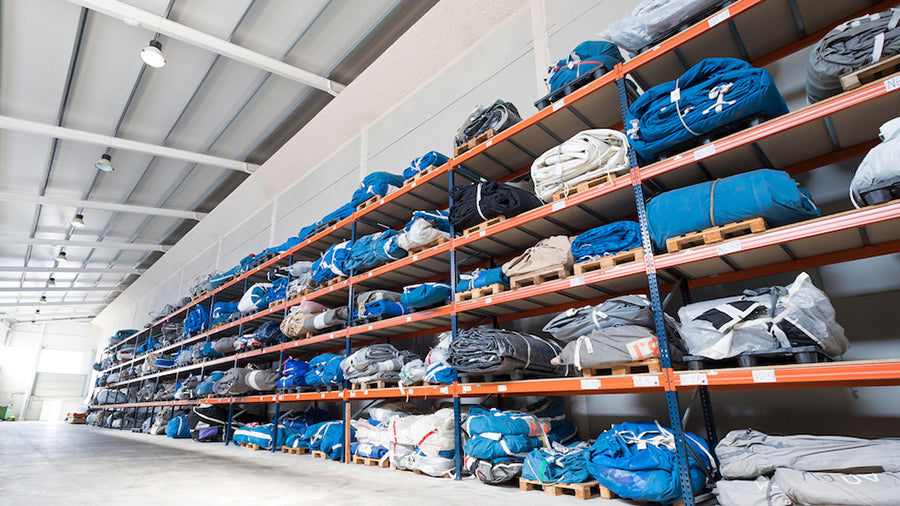
Consejo North Sails
CONSEJO NORTH SAILS
Ante la perspectiva de una larga temporada sin navegar, debemos dedicar una especial atención a cómo almacenaremos nuestras velas para optimizar su vida útil y asegurarnos de que se encuentran en perfecto estado cuando volvamos a necesitarlas.
Os proponemos unos útiles consejos básicos:
Lo primero que debemos hacer es someterlas a una generosa sesión de agua dulce para retirar todo resto de salitre tanto del tejido como de herrajes y cabullería.
Tan importante como endulzarlas es que sequen completamente antes de guardarlas, ya que la humedad es foco del temido hongo que puede amenazar su integridad.
El mejor recipiente para almacenar la vela es su bolsa North Sails específica, y el mejor lugar para guardarla será aquel de baja humedad y que no esté expuesto a la luz directa del sol.
Si no puedes o no tienes tiempo, llámanos y lo haremos por ti. En North Sails contamos con servicio de montaje, desmontaje, transporte y almacenaje.
Y recuerda: el parón invernal es el mejor momento para someter las velas a un chequeo completo con el Servicio Certificado North Sails, ¡la mejor garantía para que estén en estado de revista la próxima vez que las necesites!
READ MORE
READ MORE

VISÍTANOS EN EL SALÓN NÁUTICO DE BARCELONA
VISÍTANOS EN EL SALÓN NÁUTICO DE BARCELONA
Un año más, North Sails España participa en el Salón Náutico Internacional de Barcelona (10 a 14 de octubre), una de las citas imprescindibles del sector en España.
Pásate por nuestro stand (C330, en el Moll de La Fusta) y descubre toda nuestra gama North Sails 3Di, incluyendo la revolucionaria 3Di NORDAC y nuestro último producto para regata, la 3Di RAW 360. ¡Nuestros expertos estarán encantados de recibirte!
READ MORE
READ MORE
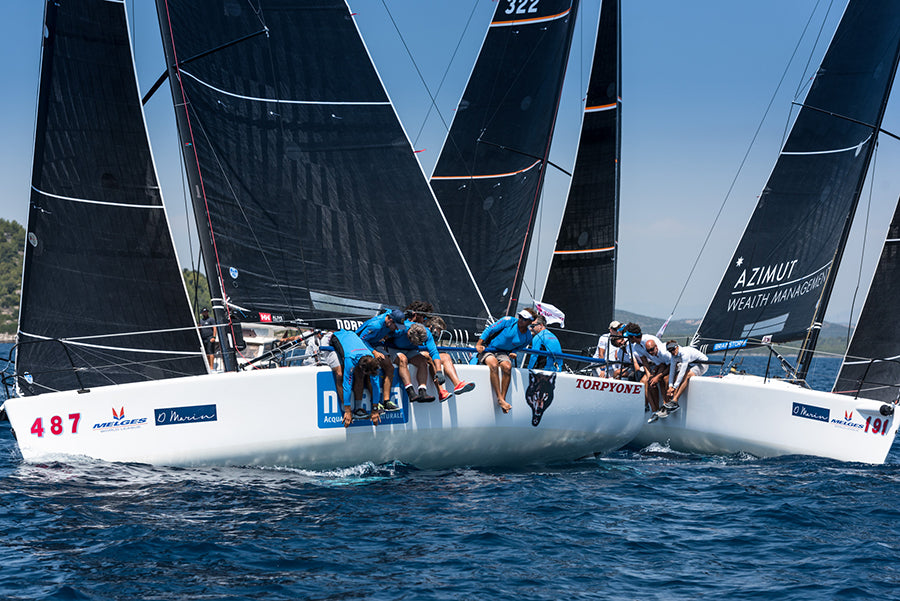
NORTH SAILS 3Di RAW - LA VELA DE CARRERAS
NORTH SAILS 3Di RAW:
LA VELA DE CARRERAS
Dentro de la gama North Sails 3Di, la versión RAW distingue a aquellas velas diseñadas bajo la premisa de obtener las máximas prestaciones, sin concesiones.
Son el arma utilizada para cazar récords, ganar títulos y competir al máximo nivel, pero también forman parte del dosier de productos North Sails que podemos incorporar a nuestro barco. El equivalente a equipar nuestro coche con neumáticos de circuito.
RAW es un término inglés que posee acepciones como “crudo”, “puro” o “sin tratar”. Eso nos da una pista sobre la naturaleza de la 3Di RAW, una de las cinco versiones en las que se divide la familia de velas moldeadas composite North Sails 3Di (junto a las 3Di ENDURANCE, 3Di OCEAN, 3Di NORDAC y 3Di Downwind).
La 3Di RAW es la versión más ligera y rápida de toda gama. Para lograrlo reduce sus componentes a aquellos imprescindibles para conseguir las máximas prestaciones, eliminando capas exteriores de Dyneema que se utilizan como refuerzo en otras velas 3Di frente a los roces. El resultado es un tejido entre un 10 y un 15% más ligero y con una capacidad inigualable de conservación de la forma y estabilidad, lo que la ha convertido en vela de elección para los barcos que dominan la competición en todo el mundo.
Comparada con cualquier otra vela, la 3Di RAW posee una combinación imbatible entre ligereza y ratio de fibra estructural respecto a su peso total. Una fórmula ganadora que se aplica en escenarios tan exigentes como la Volvo Ocean Race, las TP52 Super Series, la Vendée Globe o la America’s Cup, pero que también forma parte del catálogo comercial de velas North Sails, y como tal está disponible para optimizar las prestaciones de nuestro barco en regata.
Una 3Di RAW para cada necesidad
Actualmente, la gama 3Di RAW está disponible en seis versiones: 3Di RAW 330 (realizada 100% en poliéster), 3Di RAW 360 (poliéster y aramida), 3Di RAW 760 (Ultra PE y aramida), 3Di RAW 780, 3Di RAW 870 y 3Di RAW 880 (las tres en carbono, Ultra PE y aramida).
Luís Martínez Doreste, director comercial de North Sails España, nos explica las particularidades de cada una de ellas.
“La 3Di RAW es nuestra vela de máximo rendimiento para competición. Su gama comienza por la 330, una vela 100% poliéster pensada para monotipos de vela ligera. Además de ofrecer un rendimiento excepcional, supone un incremento en durabilidad, tanto de vida útil como de conservación de la forma”. La 3Di RAW 330 está disponible para clases como Moth y están en desarrollo para otros one design. “Es un producto nuevo en el que tenemos puestas muchas esperanzas”.
El siguiente escalón es la 3Di RAW 360, específica para barcos de mediana eslora y la última en incorporarse al catálogo North Sails.
“Es perfecta para barcos de regata club hasta 35-40 pies. Además de mejorar el rendimiento, entre sus peculiaridades destaca que es más estable y ligera, y posee un mayor mantenimiento de forma que otras velas equivalentes”.
Para barcos de mayor eslora que los 40 pies, North Sails propone la 3Di RAW 760. Se trata de un giro de tuerca más respecto a la 360, lo que se consigue “eliminando poliéster, por lo que cuenta con más porcentaje de Dyneema, lo que optimiza sus prestaciones”.
Por último, las velas más avanzadas del catálogo 3Di RAW son la 780, la 870 y la 880, las armas a las que recurren barcos de regata de alto nivel y circuitos de Grand Prix cuando se busca máxima prestaciones con mínimo peso.
“La 3Di RAW 780 tiene más Dyneema que carbono y tanto la 870 como la 880 tienen más carbono que Dyneema”, explica Martínez Doreste. En la práctica, la mayor proporción de carbono supone mayor ligereza, una característica muy valorada por equipos de alta competición. “Es por ello que la 870 es muy utilizada por muchos mini maxi y maxi, pero también por otras clases como los Swan 45 o los ClubSwan 50, mientras la 3Di RAW 880 está reservada para las clases TP52 y RC44”.
READ MORE
READ MORE

J/70 WORLDS: WINNING THE CORINTHIAN FLEET
J/70 WORLDS: WINNING THE CORINTHIAN FLEET
Great Team, Fast Sails: The Formula for Team Marnatura
Team Marnatura, 2018 J/70 Corinthian World Champion. © Photoboat
We are very proud to share that all top five Corinthian teams at the 2018 West Marine J/70 World Championship were powered by North Sails. We had a chance to catch up with Luiz Bugallo from Spain, skipper of Marnatura who finished 6th place overall and won the World title for the Corinthian division.
Luis, congratulations on your excellent regatta at the J/70 Worlds, finishing 6th place overall and winning the Corinthian Division. What was the key to keep consistent finishes?
Thank you very much. The event was very challenging and fun for us. That said, for us the reason for our success lies entirely with our team. Each of us knows what to do in the boat in different situations so our teamwork and trust in each other builds our confidence. We all believe that an important factor is to keep the entire team motivated and to stay positive. Additionally, our game plan is very focused on distributing responsibilities on the boat so we are working at all times as a team., focusing on our jobs.
Tell us about your team.
We are lucky to have such a great group to sail with and I was fortunate to be able to be the helm with such a talented team.
From bow to stern:
Jorge Lorenzo (23, Spain) was our bowman. He sailed Optimists and had good results in the 420 class. He is studying to be a Naval Engineer.
Gerardo Prego (24, Spain) trimmed our spinnaker. Gerardo sails Snipes at a high level in the European Snipe Class. He is a very good bowman and is in high demand on larger keelboats as he pursues his degree in Business Administration.
Alberto Basadre (23, Spain) was our jib trimmer. A bit ironic since he sails mostly Lasers! He is continuing his studies in Mechanical Engineering.
Enrique Freire (46, Spain) was our most “experienced” teammate and took on the difficult role as our tactician. Enrique is the owner and CEO of Marnatura and the keystone of our success.
Luis Bugallo (23, Spain), skipper. I started sailing Optimist when I was 7 years old. I have sailed Optimist, 420, Platu 25 and the 49er. I am studying Engineering.
Choosing which sails to use is an important ingredient to a successful program. What were the main reasons Team Marnatura chose North Sails to power your Corinthian program?
Deciding on what sails to use is not something we take lightly. We work hard to improve every aspect of our racing so we were not in a position to consider just anything. We are only willing to use what will give us the best chance to perform. We have always believed that the North Sails technology is above all others as far as sail manufacturing.
We felt that the XCS-1 main, J-2 jib and AP-1 spinnaker best fit our team and they are designs we had confidence in training. Knowing that, in addition to our focus on shapes and design, the materials North Sails uses are the best materials on the market. Lastly, the North J/70 team has a deep pool of talent and they willingly sharing information with us to help us get better and faster.
Your Corinthian team not only dominated the Corinthian fleet but also your 6th place overall finish bested some of the most talented sailors in the class. What tips would you give to other Corinthian teams?
We believe that success on the race course involves a formula that includes commitment, focused goals, and fun. That said I think our tips would be:
First and foremost, sail with friends and try to build and generate good relationships. Sailing and racing with people you enjoy and have fun with makes the successes much sweeter and the disappointments less bitter.
In general, focus on a target and a goal and center your resources on it. Being target focused is important but can easily distract you from the “big picture”.
In the J/70, downwind, it’s key to choose the correct mode: VMG, WING-WING, or “on the step”. The distances gained or lost can be amazing by picking the right (or wrong) downwind mode so make it a goal to learn which is best in each condition and work as a team to be able to quickly transition into each of the modes.
Try to use the sails you will use for regattas when you train. This will give you more knowledge about your trim settings and boat tuning/setup.
2018 J/70 WORLD CHAMPIONSHIP
Corinthian Division – Powered by North Sails
1
Marnatura / Luis Bugallo
2
Lifted / Jim Cunningham *
3
Pura Joda / Aldo Centanaro
4
Juicy / Francisco Van Avermaete
5
Joint Custody / Jenn & Ray Wulff
© Mauro Melandri | Zerogradinord
READ MORE
READ MORE

2018 CLUB SWAN 50 WORLD CHAMPIONSHIP
2018 CLUB SWAN 50 WORLD CHAMPIONSHIP
Mathilde Collects Podium Finish With Help From Ireland Experts
© Carlo Borlenghi
North Sails in Ireland want to congratulate Team Mathilde on their podium finish at the inaugural Club Swan 50 World Championship in Porto Cervo. The Swiss flagged yacht owned and helmed by Morten H. Kielland is now in her second year of campaigning on the super competitive Club Swan 50 circuit. Leading up to the Worlds, the team had already secured podium finishes in the other class regattas competed in 2018. A second place finish at the first event of the year in Monaco last April followed by another second place at the Palma Vela regatta in May and then a third place finish at the Rolex Giraglia regatta in June. This delivered the team to the final class event of the year in confident mood and ready to take on the extremely talented International fleet.
The Championship, contested by 12 talent laden teams was held as part of the Swan Worlds in Porto Cervo. Mathilde added a new J1 / Light jib and A2 (running Asymmetric) for the event. Both sails performed superbly in the predominantly light conditions alongside the rest of Mathilde’s full North Sails inventory. The extra speed the new J1 gave us, was a game changer and gave a small edge over some of our competitors in the light conditions. The J1 (3Di Raw 870) is very reactive to small adjustments in trim and allowed us to get every ounce of speed out of the boat. Add that to solid boat handling and some great tactical calls by Leigh McMillan and it produced a third place podium finish for the team.
© Carlo Borlenghi
Mathilde actually went into the final race tied on points with Cuordileone and eventual winner One Group, with all three boats vying for the championship win. Unfortunately Mathilde finished on the wrong side of that result, but overall the team was delighted with the progress throughout the year and to be able to fight for the championship right up to the last leg of the regatta. The finish replicated the competitive nature of the event. Seven different race winners in 10 races and the whole fleet finishing within one minute, 45 seconds in all of those races. The One Design element and tight controls are producing very even performance in the fleet and like any great One Design class, the results are coming down to who makes the least mistakes and who can find the small gains out on the track.
© Carlo Borlenghi
A contributory factor for Mathilde is the support of North Sails in Ireland and in particular Shane Hughes who is sail co-ordinator and trimmer onboard. The team also had a larger Irish contingent onboard in 2018 with Howth sailor Sam O’Byrne and Schull duo Jay Stacey and Oisin O’Driscoll onboard for some of the events. The Mathilde CS 50 program represents a great opportunity for young sailors like Sam, Oisin and Jay to experience high level international keelboat sailing and the guys performed very well and will hopefully be back for more in 2019.
More generally the input from North Sails into the Club Swan 50 class has helped push our own standards higher. North Sails dominated the results with the podium teams all exclusively powered by North Sails and using our standard CS 50 designs. The continuous development led by Arnd Howar and lead designer Juan Meseguer is relentless. With so many North Sails representatives sailing in the fleet and feeding into the product review and refinement process, the sails simply get better and faster and keep our customers at the front of the fleet.
Looking forward, the review and refinement process will continue at pace and we look forward to supporting team Mathilde into the 2019 season and beyond.
READ MORE
READ MORE
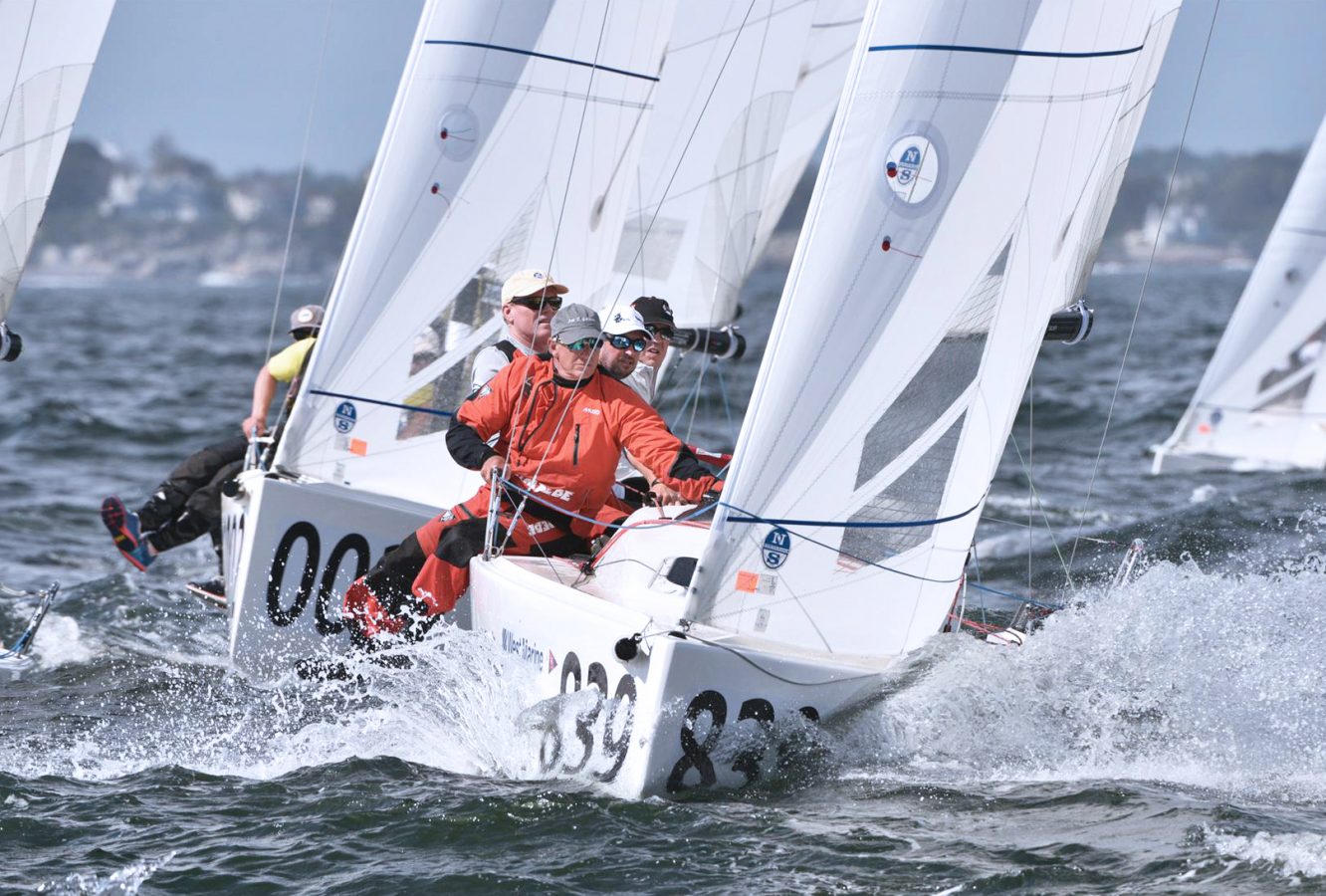
J/70 WORLDS: NORTH SAILS DEBRIEF
J/70 WORLDS: NORTH SAILS DEBRIEF
Considered One of the Toughest Regattas, Many Lessons Learned
© Chris Howell
The 2018 West Marine J/70 World Championship may have been one of the most competitive and best attended one design events yet. Eastern Yacht Club welcomed 91 teams from 18 different countries, and sailors had an exciting variety of conditions for the eleven races in four days. The allure of such an event was too much to pass up, and more than a dozen North Sails experts were on the starting line. Whether crewing for clients and friends or organizing their own team, the depth and expertise of our J/70 experts was on full display with many on the podium and even more in the top 10.
North results:
Corinthian Division: 1,2,3,4,5 – Congratulations Luis Bugallo and team Marnatura
Open Division: 2,3,5,6,8,9,10 – Seven out of the top 10 powered by North (See team/sail chart)
We asked our sailors to share both their impressions and lessons from the J/70 Worlds.
Max Skelley, Stampede – 2nd Place
Managing that many boats and keeping top finishes throughout the event is an impressive feat. What were the key things that you attribute the consistency Stampede was able to deliver?
MAX – We knew going into the event that we had really good upwind speed. Having Tim Healy as our tuning partner throughout the summer was a big help with narrowing down rig tune/sail trim settings. Being able to use our speed to dig our way out of tough spots began to dictate our tactics . We always tried to start in low density areas somewhere near the middle of the favored half of the line, not being so leveraged to one side that we couldn’t dig our way out if the shift didn’t go our way.
On race five we were persuaded to start at the windward end because the two previous races, hard right was really paying. We were able to win the start at the windward end and were first boat to tack to port which was the race winning move in the two previous races. Unfortunately, the left came in hard on the first beat and we rounded in the 50’s. We were able to fight back to the low thirties but the race still ended up being our drop race. We learned a lesson about risk / reward and stayed away from the ends for the remaining of the event using patience and speed to consistently get to the front of the fleet.
Team Stampede, 2nd place at the 2018 J/70 World Championship. © Photoboat
Eric Doyle, Stampede – 2nd Place
You are a boat speed guy. What were the keys to helping keep the boat going fast?
ERIC – We had worked hard all summer on our rig settings, we had confidence of when to change the rig tension for the wind strength. I was trimming the jib and one interesting trim technique that we started during the world’s was that we rarely moved the jib lead. It lived in the #6 hole 95% of the time and we just used the halyard to adjust and jib sheet tension to fine tune the jib.
In the heavy air races, when a lot more halyard was required, we had to ease the sheet about an inch and use the appropriate amount of in-hauler, less in the big puffs and more in the flatter, lighter spots. When it was lighter and we eased the halyard to make the jib fuller overall, it lowered the clew, effectively moving the lead aft, so we trimmed about an inch harder on the sheet and used more in-hauler. It seemed to work better as it is impossible to change the lead without tacking, but the halyard and sheet are readily accessible at all times.
How important was it to make sure your tuning was spot on and was there ever a time where the the conditions didn’t match your setup and, if so, what effect did that have?
ERIC – We always looked to set the boat up to be fast for the first half of the first beat so that we could hold a lane and get to the first weather mark in good shape. Most of the time it worked out but on the 4th day with all the rain squalls coming through and huge changes in velocity, after the first race we just went with a slightly tighter rig from base, +4 and +3, and used the backstay, traveler and boom vang much more aggressively. When the boat felt bad for Bruno, we made sure to remind him that we were out of tune and that he just had to deal with it! In the big fleet with lots of chop in general it was better to get caught a little on the loose side than too tight.
Team 3Ball JT, 3rd Place at the J/70 Worlds using the North J-6 Jib. © Chris Howell
Allan Terhune, 3 Ball JT – 3rd Place
After four days of racing and 11 races the top three teams all had over 100 points and were within three points of each other. Your team had some big scores early in the event. What turned the week around for your team to get back to the top of the leaderboard?
ALLAN – For sure the regatta didn’t start as we hoped. The big thing for us was not to panic and to take a look at everything to see where we could improve. We talked to our training partners and other folks and realized we had to be more drastic in our rig adjustments for the waves and wind. It was a hard event. It was not easy to get finishes in the 20’s.
The regatta was a good lesson in the fighting until the end and that the event is never over, till it’s over. If you would have told me that we would start with 18,22,25 and go into the last day three points out of the lead, I would have said you are nuts. It proved that World Championships are marathons and you have to keep pushing. Our team did that well. We always kept adapting and trying new things.
We were one of the few teams to use the North J-6 jib, and I think it was the right choice for us for sure. We found it gave us more range for the conditions there. It was a sail we were very comfortable with and we were glad we chose in the end.
Team Any Colour featuring the new North J-2 High Clew jib. © Chris Howell
Zeke Horowitz, Any Colour
Crewing for your friends, the Furnary Brothers, what setup did you find worked best to help them get in the groove to be consistently fast?
We used the XCS-2 Mainsail and we busted out a J-2 High Clew for the first time at this regatta. We were extremely happy to find the transition to the J-2 High Clew to be quite easy. It’s a beautiful, forgiving sail with all the modes you need. We stuck pretty close to the North Tuning Guide and found the setup to have the power we needed to fight through the big waves and chop while being easy enough to de-power and keep the groove nice and wide for Scott on the helm.
In the higher winds, we made sure to fine-tune our lowers so that there was no mast sag at the spreaders and if anything, a hint of poke to weather. This helped us achieve maximum head stay tension even when the main sheet had to be eased. Keeping the boat flat (both upwind and downwind) was HUGE.
The J/70 Worlds was a challenging regatta. What did your team do so well to get a top 10 finish and what needs work for next time so you don’t “leave any points on the water”?
ZEKE – For sure this has to be the most challenging regatta I’ve ever competed in. The depth of talent was insane and the sheer number of boats made it all the more difficult. Not to mention some pretty wild conditions! I think every single team felt that they left a myriad of points on the table – I know we did.
One thing we talked about as team before the regatta is that we wanted to play every decision in the race as if we were trying to just be top 20. We knew that if we averaged somewhere in the top 20, we’d be very happy with the result. So all our big picture game plans, tactical decisions, and boat handling maneuvers were made with conservative strategies, (except for the time we crashed into Tim Healy at the weather mark-Sorry, Boss). Scott and Evan Aras (main trimmer) did a fantastic job with starting and we knew that if we could be punched off the line, that would most likely get rid of about 50 boats that had bad starts.
From there it was really just about lane management and looking for opportunities to put the boat in places where we could make gains.
One thing that would really help us next time is continuing to improve on downwind modes. There are so many different modes to consider off the breeze and it’s amazing how much can be gained and lost by doing it correctly.
Team Enfant Terrible and the perfect shape of the new North J-2 High Clew jib. © Zerogradinord
Tim Healy, New England Ropes
What did you learn about North’s standard J70 designs this week that J70 sailors should know when thinking about investing in new sails?
TIM – We used the XCS-2 mainsail, J-2 High Clew jib and the AP-1 spinnaker. I chose them because I believe they are the fastest and most user friendly sails available. They allow for the power and speed to acceleration of the line in choppy conditions and to power up quickly out of tacks. The J-2 High Clew is slightly fuller than the J-6 and is less weather sheet dependant which, I feel, makes getting “top speed” trim correct more quickly and easily. It was used on many of the top ten boats. The J-6 is also an excellent sail finishing 1 point out of 1st in second and 3 points out of first in 3rd! The J-6 can create the same power as the J-2 High Clew with slightly more weather sheet.
My recommendation to someone ready for a new set is to go with the J-2 High Clew for a more user friendly sail and the J-6 if you like to be more active with weather sheeting.
G-Spottino powered by North’s AP-1 Spinnaker. © Zerogradinord
2018 WEST MARINE J/70 WORLD CHAMPIONSHIP
Sails used by the top teams powered by North:
2
Stampede – Bruno Pasquinelli / XCS-1 Mainsail, J-6 Jib, AP-1 Spinnaker
3
3 Ball JT – Jack Franco / XCS-2 Mainsail, J-6 Jib, AP-1 Spinnaker
5
Savasana – Brian Keane / XCS-1 Mainsail, J-2 High Clew Jib, AP-1 Spinnaker
6
Marnatura – Luis Bugallo / XCS-1 Mainsail, J-2 Jib, AP-1 Spinnaker
8
Enfant Terrible – Alberto Rossi / XCS-1 Mainsail, J-2 High Clew Jib, AP-1 Spinnaker
9
New England Ropes – Tim Healy / XCS-2 Mainsail, J-2 High Clew Jib, AP-1 Spinnaker
10
Any Colour – Scott & Alex Furnary/ XCS-2 Mainsail, J-2 High Clew Jib, AP-1 Spinnaker
READ MORE
READ MORE

STAR WORLD CHAMPIONS: SIX DECADES WITH NORTH SAILS
SIX DECADES OF STAR WORLD CHAMPIONS
Success In The Class Began With Founder Lowell North
North Sails was started by a five-time Star World champion, and the event continues to be an important part of our history. Our founder Lowell North’s very first gold star was awarded in 1945, when he crewed for Malin Burnham.
“It wasn’t me Malin wanted,” Lowell explained, years later. “It was my mainsail.”
Lowell started the company in 1957 , the same year he won his first Star World Championship as skipper in Havana, Cuba, sailing with James Hill. “I learned to win in the Star by taking a sail apart and putting it back together until it was a little faster,” Lowell claims. “Sails then were so poorly designed that practically anything you did made them better. As we won more races, I convinced myself I knew what a fast sail should look like.” The Star Class regatta report from Havana says that “North and Hill had their boat moving very fast. Often they found themselves in the wrong place, back in the ruck, whereupon they worked out of it by sailing faster and with better headwork than their competitors.”
Regatta reports from Lowell’s subsequent Worlds wins (1959, 1960, 1973), as well as the gold and bronze Olympic medals he won in 1964 and 1968, reveal similar themes: he was fast enough to get out of trouble, smart enough to stay in front once he got there, and respected by his competitors for fixing anything that broke. Off Newport Beach in 1959, second place finisher Gary Comer reported, “Three-quarters of the way down , Lowell came by so fast I didn’t even bother to luff him.” In 1960, Lowell won again after “rearranging his rigging” by replacing his broken headstay with a backstay.
“Lowell North continued to demonstrate his supremacy over the Class,” announced the regatta report afterward.
Lowell was also respected as a good sport, admitting to his mistakes. In 1967, finishing second by three points to Paul Elvstrøm for the second year in a row, a reporter asked what happened. According to the Star Logs report, “Lowell refrained from kicking him off the end of the pier and only answered quietly, “We got a bad start and sailed a bad race.”
READ MORE
READ MORE
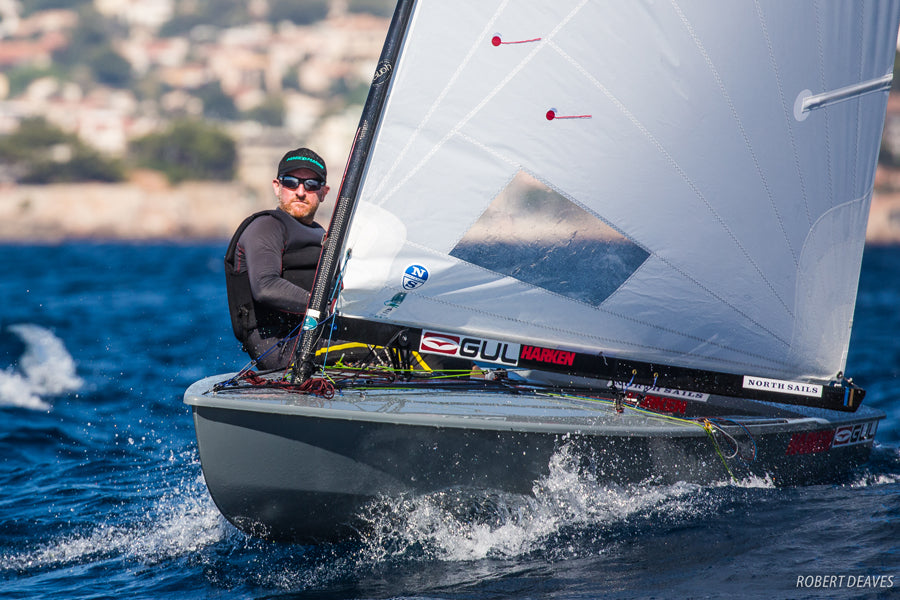
NORTH SAILS DESIGN PREVAILS AT OK DINGHY EUROPEANS
NORTH SAILS DESIGNS PREVAIL
New Designs Excel at the OK Dinghy European Championship
Heavy winds started the week off, as the Mistral blew through Bandol, leaving a mixed sea state, creating very physical sailing conditions for the OK dinghy fleet. As the week went on the conditions eased off, testing the sailors each day to eventually separate the leader from the fleet.
North Sails One Design expert Charlie Cumbley fought hard until the very end. Leading the fleet coming into the final day, points were extremely tight between the top three players on the field. Charlie scored a 2-15 on the final day, putting him in second place behind Fredrik Loof. In third place, trailing by just one point, was Swedish sailor, Thomas Hanson-Mile. Between Thomas and Charlie, they won six out of the eight races sailed.
Finishing thirteenth overall and becoming the new Junior European Champion was Will Heritage. All three of the sailors mentioned above were using the new development sail in the North Sails inventory. This model is a flatter version of the KAP-1, its performance has proved to be fast and versatile so far and will compliment the KAP-1 as part of the North Sails inventory.
“Based on the world winning KAP-1 it was designed specifically for sailors 90 kg and under. Providing plenty of power, but making it more forgiving in the stronger breeze. In Bandol we had a variety of conditions, it was still powerful in the lighter conditions but was much easier to de-power on the windy first day.”
–Charlie Cumbley, One Design Sales expert
Full results
READ MORE
READ MORE
